George Floyd
description: Black man killed in Minneapolis in 2020 during an arrest, sparking worldwide protests against police brutality
165 results
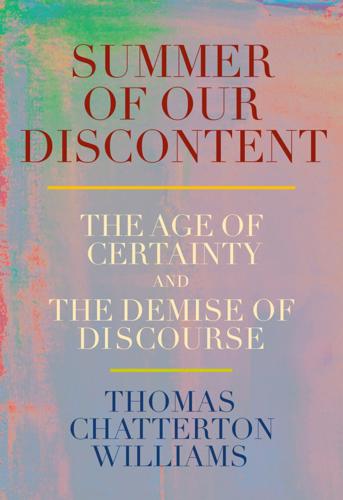
Summer of Our Discontent: The Age of Certainty and the Demise of Discourse
by
Thomas Chatterton Williams
Published 4 Aug 2025
Perhaps the most influential figure on the right, Elon Musk, has, as of this writing, fathered thirteen children out of wedlock by four different mothers. *5 This logic was strangely echoed in a comment Jeanelle Austin, the leader of the George Floyd Global Memorial, had made to me in Minnesota when I asked her about the reality of disproportionate violence within predominantly black neighborhoods like the one in which George Floyd was murdered. “I don’t think that there’s more violence in the black community than there is in the white community,” she told me. “I just think we are counted more frequently than white folks are counted
…
If it wasn’t clear on that first agonizing click, it became so within the hours and days that followed: for America, and indeed for large swaths of the world, it was the visual quintessence of a centuries-long and cancerous history—a tortured transatlantic oppression rendered in flesh and pixels. From that moment on, there would be two George Floyds, related but not identical, and it has become necessary to separate them. On the one hand, there was the son and the brother, certainly down on his luck that long weekend, unemployed and carrying methamphetamines and fentanyl in his system. This man was in a bad way when law enforcement encountered him dozing in a parked car, having passed a counterfeit banknote moments earlier—a petty crime that even the cashier seemed embarrassed to have reported. This George Floyd had survived an early bout of COVID-19, only to be asphyxiated in broad daylight by an officer he’d once worked side by side with in his bouncer days at El Nuevo Rodeo nightclub.
…
They continue to tend to the offerings at the intersection of 38th & Chicago laid in memory of George Floyd and other black lives lost in this community and across the nation.” “About,” Rise and Remember, georgefloydglobalmemorial.org. *16 “Black, indigenous, people of color.” *17 The talking point, at first notably put forth by the right-wing influencer Candace Owens and parroted by Kanye West—and later echoed in the sham film The Fall of Minneapolis—that it was in fact the drugs in his system that killed George Floyd, and not the knee on his back for almost ten minutes, is as lacking in basic human decency as it is in logic
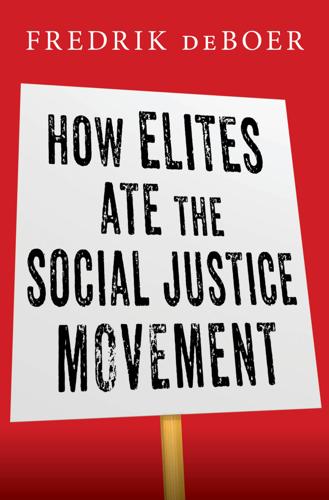
How Elites Ate the Social Justice Movement
by
Fredrik Deboer
Published 4 Sep 2023
But Missy is also Black, and Black characters on an animated show should be played by Black people.” My God. What sacrifice. George Floyd was killed in the street, and an actor gave up a voice-over gig. George Floyd was killed in the street, and investment banks adopted new corporate sensitivity policies. George Floyd was killed in the street, and defense contractors updated their employee handbooks. George Floyd was killed in the street, and universities made their language codes for faculty even more stringent. George Floyd was killed in the street, and the term “BIPOC”—that’s Black and Indigenous people of color, to better highlight the most oppressed—replaced “people of color,” itself a replacement of older terms.
…
If the police violate your civil rights, you can hope that the police themselves will enforce accountability, which is unlikely for obvious reasons; you can potentially see the prosecution of the police in the criminal justice system, which tends to happen in only the most spectacular abuses, such as with the police officers who murdered George Floyd; or you can sue. The doctrine of qualified immunity makes the latter very, very difficult, and is a big part of the reason that police officers so often act with complete impunity. Any meaningful reform of our criminal justice system must involve the end of qualified immunity. Discussion of the merits of the George Floyd Justice in Policing Act is largely academic, as the bill died in Congress, though I hope it might be revived. In 2020, Republicans controlled the Senate, and the bill had no chance of passage; in 2021, Democrats held the Senate by the thinnest-possible majority, and the bill died in committee, despite passing the House and public endorsement by President Biden.
…
But the inability of our political system to pass a bill that many activists saw as the bare minimum was notable, if for no other reason than to remind us of how hard change would be and that Republican power could not be wished away. Then again, perhaps the George Floyd Justice in Policing bill failed to attract much attention because it was overshadowed by the demand that became associated with the entire movement for justice that erupted in the wake of George Floyd’s death, which became inescapable—“defund the police.” THE STRANGE LIFE OF DEFUND THE POLICE Defunding the police captured the public attention to a degree that I’ve really never seen before for a genuinely radical idea.

Tomorrow's Capitalist: My Search for the Soul of Business
by
Alan Murray
Published 15 Dec 2022
But big company CEOs were, for the most part, silent. Their reaction following George Floyd’s death was different, indicating how much business leadership had changed in the few intervening years. Many CEOs had conversations with their employees about race for the first time. The intersection of BLM with the pandemic created a striking new awareness. A Fortune-SurveyMonkey poll taken in May had revealed that Black adults were more than twice as likely to have been laid off or furloughed as a result of the pandemic. This stark reality was rolled into the other inequities the Black population faced. George Floyd seemed to underscore the systemic lack of equality and civil rights that Blacks and other people of color experience in their daily lives.
…
But the CEOs who did speak out placed the focus not on Chauvin but on the future of racial justice. Facebook CEO Mark Zuckerberg tweeted, “Right now I’m thinking of George Floyd, his family and those who knew him. I hope this verdict brings some measure of comfort to them, and to everyone who can’t help but see themselves in his story. We stand in solidarity with you, knowing that this is part of a bigger struggle against racism and injustice.”14 General Motors’ Mary Barra weighed in: “While the guilty verdicts in the trial seeking justice for George Floyd are a step in the fight against bias and injustice, we must remain determined to drive meaningful, deliberate change on a broad scale.”15 From Microsoft president Brad Smith: “Today’s verdict is a step forward in acknowledging painful truths and for the continued cause of defeating racism and fighting discrimination.
…
Our company remains committed to the continued path ahead.”16 Salesforce tweeted, “Today’s verdict was a defining & important moment. We recognize this does not make up for so much loss and injustice experienced by the Black community. George Floyd should be alive today. The work continues. We will keep taking action for racial equality and a more just world.”17 And from Starbucks: “George Floyd should be alive today. We still have work to do to address systemic racism and ensure everyone has an equal chance to succeed and thrive. Black lives matter, and we stand with our Black customers and partners.”18 Industry groups also talked about the verdict in the context of what remained to be done.
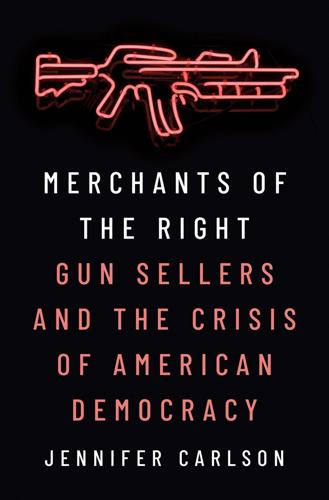
Merchants of the Right: Gun Sellers and the Crisis of American Democracy
by
Jennifer Carlson
Published 2 May 2023
Threat Perceptions and the Intention to Acquire Firearms. Journal of Psychiatric Research, 133, 113–118. Arango, T., Bogel-Burroughs, N., Burch, A.D.S., Cramer, M., Eligon, J., Fernandez, M., Hauser, C., MacFarquhar, N., Opam, K., Taylor, D. B., Tompkins, L., and Vigdor, N. (2021). How George Floyd Died, and What Happened Next. New York Times. Accessed July 15, 2021. https://www.nytimes.com/article/george-floyd.html. Arango, T. and Closson, T. (2022). “We Can’t Endure This”: Surge in US Shootings Shows No Signs of Easing. New York Times. Accessed April 18, 2022. https://www.nytimes.com/2022/03/23/us/shooting-gun-violence.html. Associated Press. (2020).
…
Emergency Preparedness: How Much Is Enough? The Truth About Guns. Accessed August 2, 2021. https://www.thetruthaboutguns.com/preparedness-much-enough/. Boch, J. (2020c). FEDS: Angry Leftist Brings Rifle to Lubbock George Floyd Protest to “Off Racists and MAGA People.” The Truth About Guns. Accessed October 24, 2021. https://www.thetruthaboutguns.com/feds-angry-leftist-brings-rifle-to-lubbock-george-floyd-protest-to-off-racists-and-maga-people/. Boch, J. (2020d). Gun Owners: Be Goodwill Ambassadors to Your Neighbors, Community. The Truth About Guns. Accessed October 24, 2021. https://www.thetruthaboutguns.com/gun-owners-be-goodwill-ambassadors-with-neighbors-community/.
…
Daring Greatly: How the Courage to be Vulnerable Transforms the Way We Live, Love, Parent, and Lead. Penguin. Brown, W. (2017). Undoing the Demos: Neoliberalism’s Stealth Revolution. Zone Books. Budryk, Z. (2020). Head of CrossFit to Staff: “We’re Not Mourning for George Floyd.” The Hill. Accessed August 12, 2021. https://thehill.com/blogs/blog-briefing-room/news/501947-head-of-crossfit-told-staff-were-not-mourning-for-george-floyd. Bump, P. (2020). Trump Sides with Deranged Conspiracy Theories over Black Lives Matter Protestors. Washington Post. Accessed August 12, 2021. https://www.washingtonpost.com/politics/2020/06/09/trump-sides-with-deranged-conspiracy-theories-over-black-lives-matter-protesters/.

The Authoritarian Moment: How the Left Weaponized America's Institutions Against Dissent
by
Ben Shapiro
Published 26 Jul 2021
Jordan Hoffman, “Dave Chappelle Releases a Passionate and Raw Comedy Set, Making George Floyd Protests Personal,” VanityFair.com, June 12, 2020, https://www.vanityfair.com/hollywood/2020/06/dave-chappelle-releases-a-passionate-and-raw-comedy-set-making-george-floyd-protests-personal. 40. Lorraine Ali, “Review: Dave Chappelle’s new special isn’t stand-up. It’s an anguished story of violence,” June 12, 2020, https://www.latimes.com/entertainment-arts/tv/story/2020-06-12/dave-chappelle-846-youtube-netflix-george-floyd. 41. David Sims, “Hillybilly Elegy Is One of the Worst Movies of the Year,” TheAtlantic.com, November 23, 2020, https://www.theatlantic.com/culture/archive/2020/11/hillbilly-elegy/617189/. 42.
…
Richard Read, “Attorney for Minneapolis police officer says he’ll argue George Floyd died of an overdose and a heart condition,” LATimes.com, August 20, 2020, https://www.latimes.com/world-nation/story/2020-08-20/george-floyd-derek-chauvin-defense. 2. “988 people have been shot and killed by police in the past year,” WashingtonPost.com, Updated January 26, 2021, https://www.washingtonpost.com/graphics/investigations/police-shootings-database/?itid=lk_inline_manual_5. 3. “Groups March into Beverly Hills, Loot Stores on Rodeo Drive,” CBSLocal.com, May 30, 2020, https://losangeles.cbslocal.com/2020/05/30/rodeo-drive-protest-looting-george-floyd/. 4. Jonathan Lloyd, “Dozens of Businesses Damaged at Flashpoint of Violence in the Fairfax District,” NBCLosAngeles.com, May 31, 2020, https://www.nbclosangeles.com/news/local/fairfax-district-melrose-damaged-looting-grove-fire-natioal-guard-lapd/2371497/. 5.
…
Ariel Zilber, “REVEALED: Widespread vandalism and looting during BLM protests will cost insurance $2 billion after violence erupted in 140 cities in the wake of George Floyd’s death,” DailyMail.co.uk, September 16, 2020, https://www.dailymail.co.uk/news/article-8740609/Rioting-140-cities-George-Floyds-death-cost-insurance-industry-2-BILLION.html. 12. Lois Beckett, “At least 25 Americans were killed during protests and political unrest in 2020,” TheGuardian.com, October 31, 2020, https://www.theguardian.com/world/2020/oct/31/americans-killed-protests-political-unrest-acled. 13. Ebony Bowden, “More than 700 officers injured in George Floyd protests across US,” NYPost.com, June 8, 2020, https://nypost.com/2020/06/08/more-than-700-officers-injured-in-george-floyd-protests-across-us/. 14. https://twitter.com/CBSNews/status/1267877443911778306. 15.
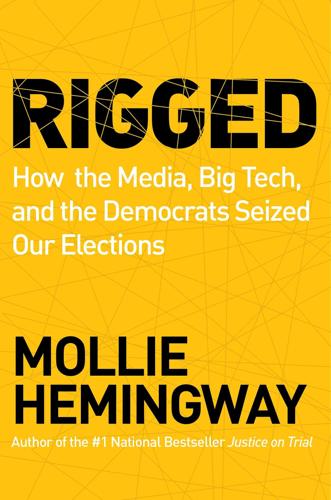
Rigged: How the Media, Big Tech, and the Democrats Seized Our Elections
by
Mollie Hemingway
Published 11 Oct 2021
Barbara Sprunt, “The History behind ‘When the Looting Starts, the Shooting Starts,’ ” NPR, May 29, 2020, https://www.npr.org/2020/05/29/864818368/the-history-behind-when-the-looting-starts-the-shooting-starts. 14. Kathryn Watson, “Trump Calls George Floyd’s Death a ‘Terrible Thing,’ ” CBS News, May 29, 2020, https://www.cbsnews.com/news/trump-calls-george-floyds-death-a-terrible-thing-2020-05-29/. 15. Scott Neuman, “Medical Examiner’s Autopsy Reveals George Floyd Had Positive Test for Coronavirus,” NPR, June 4, 2020, https://www.npr.org/sections/live-updates-protests-for-racial-justice/2020/06/04/869278494/medical-examiners-autopsy-reveals-george-floyd-had-positive-test-for-coronavirus. 16. Akshita Jain, “George Floyd’s Killing Not a Hate Crime because It Was Systemic Not ‘Explicit’ Racism, Says Official,” The Independent, April 26, 2021, https://www.independent.co.uk/news/world/americas/george-floyd-killing-hate-crime-b1837419.html. 17. “964 People Have Been Shot and Killed by Police in the Past Year,” Washington Post, July 2, 2021, https://www.washingtonpost.com/graphics/investigations/police-shootings-database/. 18.
…
“Full Transcript and Video: Trump’s News Conference in New York,” New York Times, August 15, 2017, https://www.nytimes.com/2017/08/15/us/politics/trump-press-conference-transcript.html. 7. Dareh Gregorian, “ ‘Justice Will Be Served!’: Trump Weighs in on George Floyd Case,” NBC News, May 27, 2020, https://www.nbcnews.com/politics/donald-trump/justice-will-be-served-trump-weighs-george-floyd-case-n1216026. 8. Jemima McEvoy, “ ‘It’s Just Devastating’: Some Minneapolis Businesses Still Fighting to Survive a Year after George Floyd Unrest,” Forbes, May 25, 2021, https://www.forbes.com/sites/jemimamcevoy/2021/05/25/its-just-devastating-some-minneapolis-businesses-still-fighting-to-survive-a-year-after-george-floyd-unrest/?sh=7a66db8c3f77. 9. Tony Daniel, “Minneapolis Rioters Burned One of America’s Most Beloved Independent Bookstores to the Ground,” The Federalist, June 1, 2020, https://thefederalist.com/2020/06/01/minneapolis-rioters-burned-one-of-americas-most-beloved-independent-bookstores-to-the-ground/. 10.
…
Peter Hermann, Sarah Pulliam Bailey, and Michelle Boorstein, “Fire Set at Historic St. John’s Church during Protest of George Floyd’s Death,” Washington Post, June 1, 2020, https://www.washingtonpost.com/religion/fire-set-at-historic-st-johns-church-during-protests-of-george-floyds-death/2020/06/01/4b5c4004-a3b6-11ea-b619-3f9133bbb482_story.html. 60. Vandana Rambaran, “At Least 60 Secret Service Members Injured during George Floyd Protests in DC,” Fox News, May 31, 2020, https://www.foxnews.com/us/more-than-60-secret-service-officers-injured-during-violent-george-floyd-protests-in-washington-d-c. 61. Paul LeBlanc, “Famed DC Monuments Defaced after Night of Unrest,” CNN, May 31, 2020, https://www.cnn.com/2020/05/31/politics/dc-monuments-lincoln-memorial-defaced/index.html. 62.

Shielded: How the Police Became Untouchable
by
Joanna Schwartz
Published 14 Feb 2023
This could also have been the fate of a lawsuit brought on behalf of George Floyd’s family. Qualified immunity never threatened Floyd’s family’s ability to recover money for his murder at the hands of Minneapolis police in May 2020. They settled their case with the City of Minneapolis for $27 million before a lawsuit was ever filed in which qualified immunity could be raised. This is likely because the city anticipated the blowback that would come from arguing that a Section 1983 case against Derek Chauvin should be dismissed because Floyd’s family could not point to a prior case with nearly identical facts. But if George Floyd’s case had not received the press scrutiny it did and had not inspired the same degree of public attention and rage, a lawyer for the City of Minneapolis could well have argued that qualified immunity shielded Chauvin from liability.
…
And at least some members of Congress seem to have more appetite for change than does the Supreme Court. Bills to end qualified immunity, among other wide-ranging policing reforms, were introduced in the summer of 2020 after the murder of George Floyd and were reintroduced in 2021. But after the House passed both bills, and after fifteen months of negotiations in the Senate, the George Floyd Justice in Policing Act was abandoned. Republican senators’ unwillingness to limit qualified immunity in any way was a significant stumbling block in their efforts to reach compromise. In the wake of intransigence at the federal level, states have stepped in.
…
GO TO NOTE REFERENCE IN TEXT Dallas police policy manual: Plaintiffs’ Response to Defendants’ Motion for Summary Judgment, Timpa v. City of Dallas, No. 3:16-cv-03089 (N.D. Tex. March 9, 2020). GO TO NOTE REFERENCE IN TEXT A grand jury indicted: Ryan Mills, “Tony Timpa Suffered the Same Fate as George Floyd—but Received None of the Attention,” National Review, May 6, 2021, www.nationalreview.com/news/tony-timpa-suffered-the-same-fate-as-george-floyd-but-received-none-of-the-attention/. GO TO NOTE REFERENCE IN TEXT disciplinary hearing: Cary Aspinwall and Dave Boucher, “Dallas Police Officers: Mocking Tony Timpa Was ‘Strategy,’ ” Dallas Morning News, Aug. 2, 2019, www.dallasnews.com/news/investigations/2019/08/02/dallas-police-officers-mocking-tony-timpa-was-strategy/.
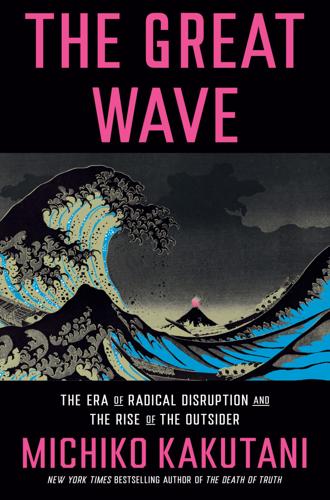
The Great Wave: The Era of Radical Disruption and the Rise of the Outsider
by
Michiko Kakutani
Published 20 Feb 2024
GO TO NOTE REFERENCE IN TEXT accountable for their actions: Eric Levenson and Aaron Cooper, “Derek Chauvin Found Guilty of All Three Charges for Killing George Floyd,” CNN, Apr. 21, 2021, cnn.com/2021/04/20/us/derek-chauvin-trial-george-floyd-deliberations/index.html; John Eligon et al., “Derek Chauvin Verdict Brings a Rare Rebuke of Police Misconduct,” The New York Times, Apr. 20, 2021, updated June 25, 2021, nytimes.com/2021/04/20/us/george-floyd-chauvin-verdict.html. GO TO NOTE REFERENCE IN TEXT “Universal History”: Thomas Carlyle, On Heroes, Hero-Worship, and the Heroic in History (London: Chapman and Hall, 1852), 1.
…
GO TO NOTE REFERENCE IN TEXT portrait of Breonna Taylor: Jessica Stewart, “Breonna Taylor Commemorated with 7,000-Square-Foot Mural,” My Modern Met, July 20, 2020, mymodernmet.com/breonna-taylor-mural-future-history-now. GO TO NOTE REFERENCE IN TEXT portraits of George Floyd: Charles Passy, “George Floyd’s Family Says His Iconic Selfie ‘Symbolizes Who He Was’—and Helped Shape the Racial-Justice Narrative,” MarketWatch, May 26, 2022, marketwatch.com/story/george-floyds-family-says-his-iconic-selfie-symbolizes-who-he-was-and-helped-shape-the-racial-justice-narrative-11653082948. GO TO NOTE REFERENCE IN TEXT England, Japan, Brazil, and France: Alexandra Hurtado, “30 Powerful Black Lives Matter Murals from All Over the World You Really Need to See,” Parade, Mar. 25, 2021, parade.com/1048964/alexandra-hurtado/black-lives-matter-street-art-dc-berlin; Shauna Beni, “Black Lives Matter Murals Around the World, from Kenya to Ireland,” Condé Nast Traveler, July 30, 2020, cntraveler.com/gallery/black-lives-matter-murals-around-the-world-from-kenya-to-ireland/; Wyatte Grantham-Philips, “Powerful Photos Show ‘Black Lives Matter’ Painted Across Streets Nationwide,” USA Today, June 19, 2020, usatoday.com/story/news/nation/2020/06/17/black-lives-matter-painted-city-streets-see-art-nyc-washington/3204742001/; Emily Rumball, “Murals Honoring George Floyd Are Being Painted Around the World,” DH News, June 8, 2020, dailyhive.com/seattle/george-floyd-murals-around-the-world.
…
GO TO NOTE REFERENCE IN TEXT “more than one every other day”: Alex Altman, “Why the Killing of George Floyd Sparked an American Uprising,” Time, June 4, 2020, time.com/5847967/george-floyd-protests-trump/. GO TO NOTE REFERENCE IN TEXT Those protests were the largest: Larry Buchanan, Quoctrung Bui, and Jugal K. Patel, “Black Lives Matter May Be the Largest Movement in U.S. History,” The New York Times, July 3, 2020, nytimes.com/interactive/2020/07/03/us/george-floyd-protests-crowd-size.html. GO TO NOTE REFERENCE IN TEXT Between 2015 and 2020, a survey: Giovanni Russonello, “Why Most Americans Support the Protests,” The New York Times, June 5, 2020, nytimes.com/2020/06/05/us/politics/polling-george-floyd-protests-racism.html; Zeynep Tufekci, “Do Protests Even Work?
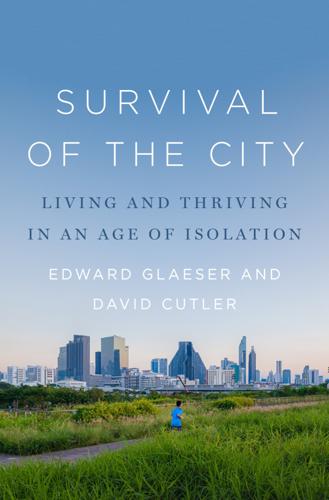
The Survival of the City: Human Flourishing in an Age of Isolation
by
Edward Glaeser
and
David Cutler
Published 14 Sep 2021
In 1983: Glaeser and Gyourko, “The Economic Implications of Housing Supply.” CHAPTER 9: URBANIZATION AND ITS DISCONTENTS On May 25, 2020: Hill et al., “How George Floyd Was Killed in Police Custody.” Derek Chauvin: Barker and Kovaleski, “Officer Who Pressed His Knee on George Floyd’s Neck Drew Scrutiny Long Before.” In 2018 alone: Mapping Police Violence. As of December: Taken from the YouTube website, December 1, 2020. “little to end the war”: “The Flu in Boston,” PBS. “in the eight”: Valentine, Valentine, and Valentine, “Relationship of George Floyd Protests to Increases in COVID-19 Cases Using Event Study Methodology.” “no evidence that urban”: Dave et al., “Black Lives Matter Protests and Risk Avoidance: The Case of Civil Unrest During a Pandemic.”
…
Chauvin could never plausibly claim self-defense, because the bystanders’ videos show that Floyd was helpless and Chauvin was surrounded by other officers. Those videos turned George Floyd from a data point into a cause. As of December 1, 2020, the five most-watched videos of Floyd’s death had over fifty million YouTube views. The horror of those videos powered the protests that followed. Despite the risk of COVID-19, the streets exploded. Societies are more vulnerable to pestilence or natural disaster when they are already riven by conflict. Anger over the slaying of George Floyd brought people out even in the face of an airborne pandemic. We don’t know if the protests spread COVID-19, but in 1918, patriotic rallies were thought to do “little to end the war and much to spread the deadly flu.”
…
But in 1994, he was a politician who was giving voters what they wanted: more punishment and less crime. This history presents a warning to the would-be avengers of George Floyd today. The activists who imposed the draconian laws that imprisoned so many young men were also fueled by an understandable rage. To them, no policy could go too far if it protected a future Diane Ballasiotes. Today, some protesters seem to think no policy can go too far if it protects some future George Floyd. Both perspectives are comprehensible. Unfortunately, both are wrong. We must find the middle ground that protects our children from both private violence and police malfeasance.
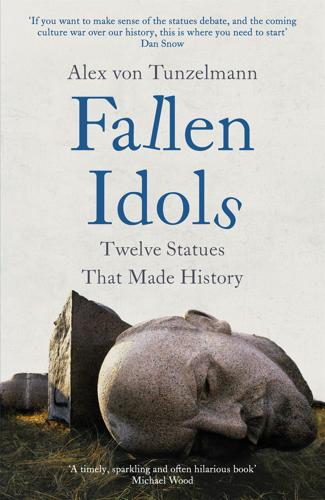
Fallen Idols: Twelve Statues That Made History
by
Alex von Tunzelmann
Published 7 Jul 2021
Brown, Civil War Monuments and the Militarization of America (Chapel Hill, NC: University of North Carolina Press, 2019), p. 293. 11: Making a Splash: Edward Colston 1Manny Fernandez and Audra D. S. Burch, ‘George Floyd, From “I Want to Touch the World” to “I Can’t Breathe”’, The New York Times, 18 June 2020; ‘Before his deadly encounter with police, George Floyd had begun a new life in Minnesota’, Los Angeles Times, 28 May 2020. 2Dalton Bennett, Joyce Sohyun Lee and Sarah Cahlan, ‘The death of George Floyd: What video and other records show about his final minutes’, Washington Post, 30 May 2020. 3Frank Kitson, Prince Rupert: Portrait of a Soldier (London: Constable, 1994), pp. 132–7, 257–63; George Malcolm Thomson, Warrior Prince: Prince Rupert of the Rhine (London: Secker & Warburg, 1976), pp. 76–81, 134–7.
…
The sequence of acts by the Black Lives Matter protesters on that day engaged profoundly with the stories of Colston, Bristol and George Floyd, bringing them together in a statement against racism with global reverberations. Every phase in the protester’s actions was rich with historical and contemporary meaning. Pulling Colston’s statue down with ropes recalled the toppling of the statues of tyrants around the world – George III, Stalin, Trujillo – and put the power to do so literally in the hands of the people. The protesters who knelt on its neck for eight minutes paid a sobering and powerful tribute to George Floyd. When the statue was lobbed into the harbour, it recalled breathtakingly the fate of almost one quarter of the Africans whom Colston’s ships transported.
…
, BBC News, 5 June 2020, https://www.bbc.co.uk/news/world-us-canada-52623151; BBC News, ‘Breonna Taylor: Police officer charged but not over death’, BBC News, 23 September 2020, https://www.bbc.co.uk/news/world-us-canada-54273317. 11Derrick Bryson Taylor, ‘George Floyd protests: a timeline’, The New York Times, 10 July 2020; @realDonaldTrump (verified account), Twitter, 29 May 2020. 12Quoted in Erik Ortiz, ‘“I chose my city”: Birmingham, Alabama, removes Confederate monument, faces state lawsuit’, NBC News, 3 June 2020. 13Andrew Buncombe, ‘“We’re not going anywhere”: Why Portland is still protesting 100 days after George Floyd’s killing’, Independent, 4 September 2020. 14‘George Washington Bush’, National Park Service, https://www.nps.gov/people/georgewashingtonbush.htm. 15Greg Nokes, ‘Black Exclusion Laws in Oregon’, Oregon Historical Society, Oregon Encyclopedia, https://www.oregonencyclopedia.org/articles/exclusion_laws/. 16Quoted in Latisha Jensen, ‘Portland man describes tearing down Thomas Jefferson statue: “It’s not vandalism”’, Willamette Week, 20 June 2020. 17Henry Wiencek, ‘The dark side of Thomas Jefferson’, Smithsonian Magazine, October 2012; Britni Danielle, ‘Sally Hemings wasn’t Thomas Jefferson’s mistress.
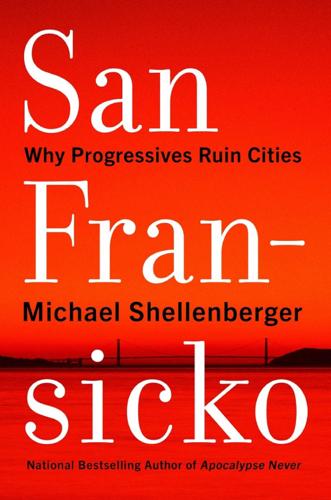
San Fransicko: Why Progressives Ruin Cities
by
Michael Shellenberger
Published 11 Oct 2021
Andrea Blackstone, “Black-Owned Businesses Struggle at George Floyd Square, Plead for Financial Help,” Black Enterprise, April 23, 2021, www.blackenterprise.com. 10. “NewsNation Goes Inside Minneapolis ‘Autonomous Zone’ Called George Floyd Square,” NewsNation Now, March 17, 2021, YouTube video, 8:19, www.youtube.com. 11. “Man shot and killed near George Floyd Square in Minneapolis,” AP News, March 7, 2021, www.apnews.com; “NewsNation goes inside Minneapolis ‘autonomous zone’ called George Floyd Square”; Danielle Wallace, “FBI to monitor Minneapolis ‘autonomous zone’ in George Floyd Square amid Derek Chauvin trial,” Fox News, March 18, 2021, video, 4:44, www.foxnews.com; Jared Goyette, “Amid Complaints of Violence, Minneapolis Moves to Reopen Intersection Where George Floyd Was Killed,” Washington Post, March 18, 2021, www.washingtonpost.com. 12.
…
Victoria Beach, interview by the author, January 7, 2021. 2. Audra D. S. Burch and John Eligon, “Bystander Videos of George Floyd and Others Are Policing the Police,” New York Times, updated May 29, 2020, www.nytimes.com. 3. “George Floyd: What happened in the final moments of his life,” BBC, July 16, 2020, www.bbc.com. 4. Rebecca Tan et al., “Protesters Paint ‘Defund the Police’ Right Next to D.C.’s ‘Black Lives Matter’ Mural,” Washington Post, June 7, 2020, www.washingtonpost.com. 5. Chase DeFeliciantonio, “George Floyd Protest Briefly Shuts Down Golden Gate Bridge in San Francisco,” San Francisco Chronicle, June 6, 2020, www.sfchronicle.com; Matthias Gaffni, Matt Kawahara, Tatiana Sanchez, “Protesters Block Bay Bridge After Peaceful Day Filled with Marches,” San Francisco Chronicle, June 15, 2020, www.sfchronicle.com. 6.
…
“Just when we were working through all of that, COVID hit. Seattle is one of the first major agencies to have to deal with it. It was eighteen-hour days for days on end. There wasn’t no road map. We just had to work through it and figure it out. Then, the killing of George Floyd happened.”53 Because of COVID-19, Best said, “A lot more people had the availability to come out and to engage in what happened to George Floyd, which was quite beautiful.” But a small group of people within the crowd started to behave violently. “Within that large group of people who were there peacefully protesting there were groups there to create mayhem, throw rocks, bottles, and incendiary stuff, and point lasers at the officers.”
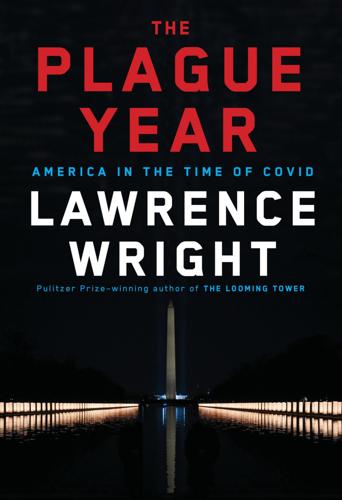
The Plague Year: America in the Time of Covid
by
Lawrence Wright
Published 7 Jun 2021
disparities of wealth: Emmanuel Saez and Gabriel Zucman, “Exploding wealth inequality in the United States,” Equitable Growth, Oct. 20, 2014. 17. I CAN’T BREATHE “a big teddy bear”: Angelina Chapin, “If I Would Have Been Here, George Floyd Would Be Alive,” The Cut, June 2, 2020. the pandemic put him out: “George Floyd: What happened in the final moments of his life,” BBC, July 16, 2020. J. Alexander Kueng: Kim Barker, “The Black Officer Who Detained George Floyd Had Pledged to Fix the Police,” New York Times, June 27, 2020. Thomas Lane: Sachin Jangra, “Who Is Thomas Lane?” The Courier Daily, June 12, 2020. “stiffened up”: State of Minnesota vs.
…
first white officer: Catherine Kim, “What we know about the officers involved in George Floyd’s death,” Vox, May 31, 2020. “very fine people”: “In Context: Donald Trump’s ‘very fine people on both sides’ remarks,” Politifact, Aug. 15, 2017. “Our profession is hurting”: Manny Fernandez, Richard Pérez-Peña, and Jonah Engel Bromwich, “Five Dallas Officers Were Killed as Payback, Police Chief Says,” New York Times, July 8, 2016. “We’re hiring”: “Dallas police chief to protesters: We’re hiring,” KCRA3, July 12, 2016. overreaction by the Dallas police: “After Action Report: George Floyd Protest, May 29, 2020 Thru June 1, 2020,” Aug. 14, 2020.
…
Both are chronic problems among Black Americans, producing higher rates of strokes and heart attacks. The autopsy also noted the presence of fentanyl and methamphetamine, which could also be considered comorbidities, although they didn’t really factor into this case. The cause of death was a police officer’s knee on the neck. The man on the autopsy bench was George Floyd. According to the charging documents, “The autopsy revealed no physical findings that support a diagnosis of traumatic asphyxia or strangulation.” This was to explain the decision to charge one of the four officers at the scene of the killing with third-degree murder and second-degree manslaughter.
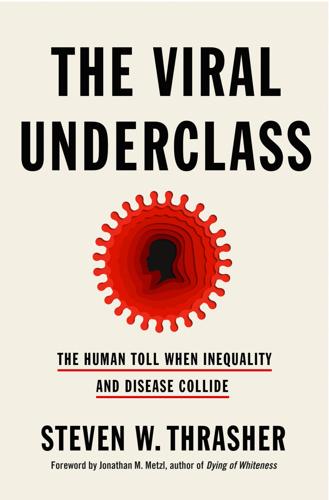
The Viral Underclass: The Human Toll When Inequality and Disease Collide
by
Steven W. Thrasher
Published 1 Aug 2022
“we are all terminal cases”: John Irving, The World According to Garp (New York: Ballantine Books; reissue edition, 1990), 609. 1: Mandingo to pay for the counterfeit bill: “Clerk Who Took Counterfeit $20 Bill from George Floyd Says He Feels Guilty,” CBS News, March 31, 2021, https://www.cbs17.com/news/national-news/clerk-who-took-counterfeit-20-bill-from-george-floyd-says-he-feels-guilty/. every two thousand police killings: David Leonhardt, “A Very Rare Conviction,” New York Times, April 21, 2021, https://www.nytimes.com/2021/04/21/briefing/chauvin-verdict-super-league-dementia.html. SARS-CoV-2 antibodies in his system: “George Floyd Was Infected with COVID-19, Autopsy Reveals,” Reuters, June 4, 2020, https://www.reuters.com/article/us-minneapolis-police-autopsy/george-floyd-was-infected-with-covid-19-autopsy-reveals-idUSKBN23B1HX.
…
SARS-CoV-2 antibodies in his system: “George Floyd Was Infected with COVID-19, Autopsy Reveals,” Reuters, June 4, 2020, https://www.reuters.com/article/us-minneapolis-police-autopsy/george-floyd-was-infected-with-covid-19-autopsy-reveals-idUSKBN23B1HX. with falsifying evidence and murder: Aaron Barker, “Harris County DA Requests Posthumous Pardon for George Floyd in 2004 Drug Conviction,” Click2Houston, April 29, 2021, https://www.click2houston.com/news/local/2021/04/29/harris-county-da-requests-posthumous-pardon-for-george-floyd-of-2004-drug-conviction/. closed by the COVID-19 pandemic: Maya Rao, “George Floyd’s Search for Salvation,” Star Tribune, December 27, 2020, https://www.startribune.com/george-floyd-hoped-moving-to-minnesota-would-save-him-what-he-faced-here-killed-him/573417181/. the world’s incarcerated people: Steven Thrasher, “An Uprising Comes from America’s Viral Underclass,” Slate, June 10, 2020, https://slate.com/news-and-politics/2020/06/black-lives-matter-viral-underclass.html.
…
I BLAME I think maybe there is no borderline between countries now because we all live in the same country, it’s called capitalism. —BONG JOON-HO 1 MANDINGO (Racism) On May 25, 2020, a white Minneapolis police officer named Derek Chauvin violently pressed his knee into the neck of a Black man named George Floyd, crushing him into the ground for some eight minutes and forty-six seconds. This ended Floyd’s life at just forty-six years of age, about thirty years younger than the average age a white man like Chauvin might expect to live in the United States. Floyd’s fatal encounter with the police began after he was accused of using a counterfeit twenty-dollar bill at a convenience store.

Forward: Notes on the Future of Our Democracy
by
Andrew Yang
Published 15 Nov 2021
In the days that followed, I tried to collect my thoughts in a post I made on Medium, writing, These are heartbreaking times for the United States of America. The killing of George Floyd has given rise to a spasm of grief and anguish that has brought thousands to the streets to protest. George Floyd, Ahmaud Arbery, Breonna Taylor—they are just the latest names in a drumbeat of Black Americans whose lives were taken in brutal fashion. George Floyd’s death is the catalyst but his dehumanizing death before our eyes was the latest bloody sign that we have been failing far too many people for too long. Police mistreatment of Black Americans is both a reality and a moral stain that threatens to tear our country apart.
…
Charles was disappointed but understood. Mike and his team—my former team—were thrilled. We announced the endorsement on May 22. Three days later, on May 25, George Floyd was killed in Minneapolis. When I saw the news, I didn’t want to watch the video, but I knew I would have to. Watching a man’s life get extinguished so casually was stunning and brutal. It was horrifying. I spoke to Black friends both publicly and privately. Whatever I felt upon watching George Floyd die, it hit Black men and Black parents ten times harder. They were angry and saddened. They were heartbroken for their children. The experience truly was dehumanizing.
…
In chapter 6, I mentioned an MSNBC producer, Ariana Pekary, who publicly quit MSNBC in August 2020. When I spoke to her about the network’s decision making when it came to coverage, she told me that in her experience the network would gloss over more benign news events. “When there were peaceful protests for George Floyd, we would cut to something else,” Pekary told me. “If there were some fire or conflict, we would cut to that and show the footage over and over again.” In her impassioned farewell statement when leaving MSNBC, she wrote, The problem is the job itself. It forces skilled journalists to make bad decisions on a daily basis…The model blocks diversity of thought and content because the networks have incentive to amplify fringe voices and events, at the expense of others…all because it pumps up the ratings.
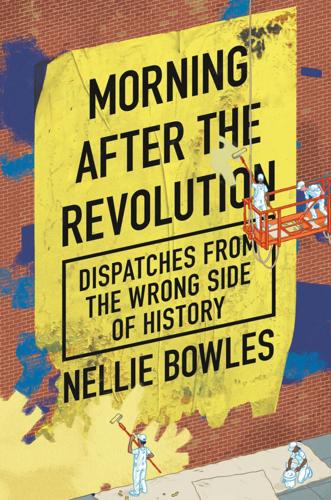
Morning After the Revolution: Dispatches From the Wrong Side of History
by
Nellie Bowles
Published 13 May 2024
The Black Lives Matter Global Network is the largest and most well-funded nationwide entity using the name Black Lives Matter. Begun in 2013 after the killing of Trayvon Martin, it aggressively escalated fundraising as the protests of 2020 rocked the country. It raised nearly $100 million that year alone. A typical email from BLM Global Network: Invest in the community: Donate to the George Floyd Memorial Foundation as we honor George Floyd’s legacy by uniting and activating our communities to challenge the root causes of racial inequity and end the systemic violence affecting Black Americans. And then, the email subject line: [SHOP NOW] Shop BLM’s Fall collection >> Michael Brown Sr. got some answers as more people began to demand transparency.
…
He felt called to fight, and the way he could help was making sure Fox News was kept out. The area had a surprising number of visitors. They wanted to see the corner where the police officer killed George Floyd. They wanted to pay their respects. Visitors were often parents and their children, from all around the country. A black family with three young kids said they drove out from Chicago to pay their respects. We stood together at the pile of flowers where George Floyd had been killed. The father, Terrance, told me he was teaching his children about history, that “there’s always a better way.” People roamed about, soliciting donations to the cause of Black Liberation via Cash App.
…
Meanwhile, the commonsense reform efforts of the local activists were losing ground. “You know what we call TakeAction? Fake Action,” said Michelle. “You have Yes 4 Minnesota promoting this fake charter.” She’s shaking her head. “They’re talking about getting rid of the police but not what will replace it.” “By putting up posters with their little QR code in George Floyd Square, this group raised $30 million,” Michelle said. “All they’re doing is promoting a poorly written, illegal charter amendment. It makes it even harder to hold police accountable, did you know that? And we’re like, ‘Why are you pushing this?’ We know that the community does not even want it.
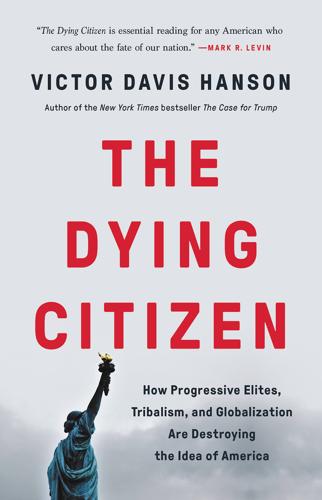
The Dying Citizen: How Progressive Elites, Tribalism, and Globalization Are Destroying the Idea of America
by
Victor Davis Hanson
Published 15 Nov 2021
Ilya Somin, “Public Ignorance About the Constitution,” Washington Post, September 15, 2017, www.washingtonpost.com/news/volokh-conspiracy/wp/2017/09/15/public-ignorance-about-the-constitution; general ignorance of US history and customs: Patrick Riccards, “National Survey Finds Just 1 in 3 Americans Would Pass Citizenship Test,” Woodrow Wilson National Fellowship Foundation, October 3, 2018, https://woodrow.org/news/national-survey-finds-just-1-in-3-americans-would-pass-citizenship-test; statue toppling and defacing: Grant: Henry Olsen, “The Anti-statue Movement Has Taken a Turn into Absurdity,” Washington Post, June 22, 2020, www.washingtonpost.com/opinions/2020/06/22/anti-statue-movement-has-taken-turn-into-absurdity; Black Civil War veterans: Andrew Mark Miller, “George Floyd Rioters Deface 16 Boston Statues, Including Memorial Honoring Black Civil War Regiment,” Washington Examiner, June 4, 2020, www.washingtonexaminer.com/news/george-floyd-rioters-deface-16-boston-statues-including-memorial-honoring-black-civil-war-regiment; abolitionist: Lawrence Andrea, “Hans Christian Heg Was an Abolitionist Who Died Trying to End Slavery. What to Know About the Man Whose Statue Was Toppled in Madison,” Milwaukee Journal Sentinel, June 24, 2020, www.jsonline.com/story/news/local/wisconsin/2020/06/24/hans-christian-hegs-abolitionist-statue-toppled-madison-what-know/3248692001.
…
Truly white supremacist states, such as the former apartheid government of South Africa, do not elect black presidents or vice presidents as does the United States, any more than Islamic supremacist societies like Iran or Saudi Arabia would ever allow a Christian or Jew to become their head of state.47 Even in the anguished age of George Floyd’s death at the hands of police while in custody, there has been, over the last two decades, an epidemic of hate crime hoaxes. Supposed victims of various awful oppressors come forward to suggest their own personal bouts with racial hatred reflect larger nationwide pathologies and call for reparatory measures to their own benefit.
…
Soon, facing lawsuits and popular demonstrations, authorities relented and allowed stores to reopen, given that they never had offered a coherent reason for singling out arms sellers for closure. In late May 2020, major city police forces in Minneapolis, Portland, Seattle, and Los Angeles stood down in the face of thousands of looters and arsonists who roamed streets and ransacked small businesses in the wake of the protests over the death of George Floyd while in police custody in Minneapolis. A few owners who had access to legal semiautomatic rifles used them successfully to save their stores, while the establishments of others less fortunate in the vicinity burned or were destroyed.33 Three relatively recent developments have spurred these renewed progressive efforts to curb citizens’ rights to bear arms.

The Passenger
by
AA.VV.
Published 23 May 2022
Some of Everything Despite the gentrification that has reduced the African-American population of central Los Angeles to historic lows – down from 20 per cent in the 1970s to 8 per cent today – arts and culture are thriving within the Black community, a response, in part, to the widespread anger following the murder of George Floyd. LISA TEASLEY Photographs by Ringo Chiu At the height of 2020’s worldwide human rights protests in response to George Floyd’s ruthless murder—a tipping point of countless organized uprisings in response to the horrifically savage and brutal structural system of racism and slavery that has existed in the US since 1619—I was asked by the publication GO Magazine how people involved in culture should respond to this moment.
…
We take a look at this essential democratic tool through two of the most controversial propositions of recent times. Some of Everything — Lisa Teasley Despite the gentrification that has reduced the African-American population of central Los Angeles to historic lows, arts and culture are thriving within the Black community, a response, in part, to the widespread anger following the murder of George Floyd. Hollywood on Hollywood — La McMusa An Author Recommends — Lisa Teasley The Playlist — Antonio De Sortis Digging Deeper Unless stated otherwise, the photographs in this issue were taken by Josh Edelson, whose work illustrates the articles by Anna Wiener, Vanessa Hua, Michele Masneri, Mark Arax and, along with photographs by Nic Coury, Brian Goldstone.
…
I worry that somebody else in the room is just noticing this at the same time as me, that they are looking at the few of us who are different in the same way we are looking at ourselves in that moment, as painfully not-them, as other. Or worse, I worry they are not noticing anything amiss at all,” writes Chang, who grew up in Northern California. In 2020, in the wake of George Floyd’s death at the hands of police and after other cases of police brutality hit headlines, Asian Americans had to reckon with the anti-Blackness in themselves and in their communities. They are not white, but, like everyone in the United States, they are shaped by the systems of power that they were born into or discovered after they arrived.

Generations: The Real Differences Between Gen Z, Millennials, Gen X, Boomers, and Silents—and What They Mean for America's Future
by
Jean M. Twenge
Published 25 Apr 2023
Though it certainly didn’t pass as quickly as many had hoped, the Silents’ reserve of resilience from their earlier years helped them cope. Still, 2020 and 2021 were an emotional roller coaster—for Silents and everyone else. Anxiety increased substantially between 2019 and April 2020 at the beginning of the pandemic, even for Silents. Anxiety also showed significant peaks in June 2020 during the protests after the murder of George Floyd, in November 2020 around the presidential election, and in winter 2020–2021, when COVID-19 cases swelled (see Figure 2.17). Anxiety then declined steadily. Silents were getting by, just as they have always done—a clear example of generational differences winning out even as the generation faced down a killer virus.
…
Even though most people didn’t agree that Obama’s election put an end to racism, the 2000s and early 2010s were still a quieter period for race relations, with less than 1 out of 5 high school seniors worried about Black-White race relations and less than 1 out of 10 believing race relations had gotten worse. After Michael Brown was shot by police in Ferguson, Missouri, in 2014, racial tensions would rise again (see Figure 4.30, there’s more on post-2015 race relations in the Millennial chapter). After several years of simmering racial tensions in the late 2010s, we all know what happened next: George Floyd (b. 1973) was killed in Minneapolis in 2020, and racial reckoning was upon the country once more. By 2021, the number of high school seniors who believed Black-White race relations were worse reached an all-time high. Figure 4.30: Percent of U.S. 12th graders and incoming college students agreeing with statements around race and inequality issues, 1976–2021 Source: Monitoring the Future and the American Freshman Survey Notes: Gen X dominates the age group in the shaded years.
…
The question on promoting racial understanding was asked of entering college students, and the questions on race relations of 12th graders. The 2020 12th grade data was collected in February and early March, before schools shut down during the COVID-19 pandemic, and before the protests related to George Floyd’s death. Many of the writers and thinkers at the forefront of conversations on race in the post-2015 era were Gen X’ers. Like the rest of their generation, Ta-Nehisi Coates (b. 1975) and Nikole Hannah-Jones (b. 1976) never experienced segregation as the rule of law, yet in their influential works (Between the World and Me for Coates and The 1619 Project for Hannah-Jones), they observed pervasive inequality and questioned why it still existed.
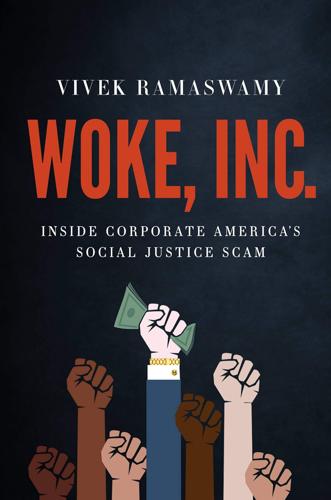
Woke, Inc: Inside Corporate America's Social Justice Scam
by
Vivek Ramaswamy
Published 16 Aug 2021
One of my former executives, her eyes filled with tears, said, “Vivek, I had such high hopes for you. What happened?” Many of my employees were upset too, even as some of them privately emailed me to say they agreed with me. Yet there was a peculiarity about it too. Eight months earlier, my advisors and friends were impatient with me for a different reason. Following the tragic death of George Floyd at the hands of a police officer in the spring of 2020, they pressured me to do more to address systemic racism. They felt I hadn’t done enough to condemn it. Apparently, being a CEO required me to speak out about politics sometimes, yet other times it required me to stay silent. As CEO, I needed to effectively run a business focused on developing medicines without getting intertwined in political matters.
…
Of course, “diversity and perspectives” is different from a diversity of perspectives.7 Larry Fink, CEO of BlackRock, the world’s largest investment firm, issued an open letter to CEOs describing a “Sustainability Accounting Standards Board” that would tackle issues ranging from labor practices to workforce diversity to climate change. Scores of others followed. If the turn of the decade was a tipping point, then the murder of George Floyd, a black man, at the hands of a white police officer in May 2020 broke the dam. Companies ranging from Apple to Uber to Novartis issued lengthy statements in support of the Black Lives Matter (BLM) movement. In a surprising about-face, L’Oréal rehired a model it had fired for her comments about “the racial violence of white people.”
…
Dimon couldn’t have better summarized the motives of many CEOs who embrace stakeholder capitalism: it allows them to exercise quasi-political power without having to go through the hassle of getting elected. Yet that hassle is part and parcel of democracy itself. Jamie Dimon probably won’t ever get to be president. But by being CEO of one of the largest banks, in today’s world he still gets the social platform that he craves. Following George Floyd’s death last summer, Dimon broadcast a video of himself dramatically kneeling in his office to demonstrate his solidarity with the protesters in the street. He was widely praised for doing so. I couldn’t help but be amused. In a prior century, the founder of J.P. Morgan—John Pierpont Morgan—had once famously stated: “I owe the public nothing.”
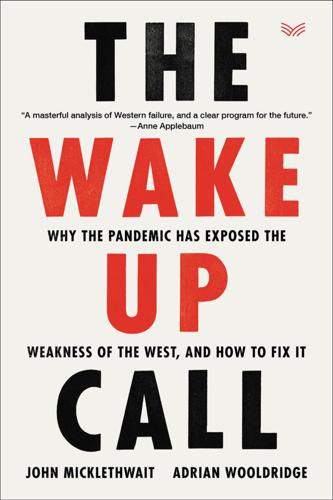
The Wake-Up Call: Why the Pandemic Has Exposed the Weakness of the West, and How to Fix It
by
John Micklethwait
and
Adrian Wooldridge
Published 1 Sep 2020
Indeed, everywhere you look, people who once did not care much about the state have been turning to Leviathan to protect them—and, as Hobbes predicted, giving up their most cherished liberties, even the freedom to leave their own homes. We have allowed the state to regulate our every move. And when the state has let us down, we have broken into fury—most obviously on the streets of America, after the killing of George Floyd. The Coronavirus has made government important again. Not just powerful again (look at those once-mighty companies begging for help), but also vital again. It matters enormously whether your country has a good health service and competent bureaucrats. The arrival of the virus was like an examination of state capacity.
…
In the United States, the teachers unions have a lock on the Democrats’ education policy: an old journalist’s trick when standing next to someone on the floor of the Democratic convention is simply to ask, “What school do you teach at?” Protecting jobs, rather than improving services, is the priority. After the killing of George Floyd, people rushed to see why so few American cops have been punished for brutality. They discovered that departments had been persuaded by unions to erase disciplinary records, some after only six months. Derek Chauvin, the man whose knee throttled Floyd, had faced at least seventeen misconduct complaints during his two decades with the Minneapolis police department but had suffered no consequences other than two reprimands.
…
As early as March, Global Times, an English-language newspaper in Beijing, was crowing that China had outperformed the West because “western political systems lack such an ability to mobilize and organize on such a massive scale.”2 When protests broke out in America, crowing turned to ridicule, with the Chinese retweeting “I can’t breathe,” the last words uttered by George Floyd. Hu Xijin, the editor of the Global Times, taunted the House speaker, Nancy Pelosi, and secretary of state, Mike Pompeo, for encouraging the protests in Hong Kong. “Should Beijing support protests in the US, like you glorified rioters in Hong Kong?”3 The core of the autocracy argument is not just that China was better organized to protect its citizens but also that it was willing to add the mailed fist to the surgical glove, adopting methods that democracies shy away from.

The Message
by
Ta-Nehisi Coates
Published 2 Oct 2024
It may seem strange that a fight that began in the streets has now moved to the library, that a counterrevolution in defense of brutal policing has now transformed itself into a war over scholarship and art. But in the months after George Floyd’s murder, books by Black authors on race and racism shot to the top of bestseller and most-borrowed lists. Black bookstores saw their sales skyrocket. The cause for this spike was, in the main, people who had been exposed to George Floyd’s murder coming to suspect that they had not been taught the entire truth about justice, history, policing, racism, and any number of other related subjects. The spike only lasted that summer—but it was enough to leave the executors of 13950 shook.
…
White supremacists came to understand this, too, and though violence was never forsworn, by the end of the summer they had learned a lesson: The war might be raging in the streets, but it could never be defeated there, because what they were ultimately fighting was the word. Around the same time George Floyd was killed, Nikole Hannah-Jones won a Pulitzer Prize for her lead essay in “The 1619 Project,” which argued for America’s origins not in the Declaration of Independence but in enslavement. Nikole is my homegirl, and like me, she believes that journalism, history, and literature have a place in our fight to make a better world.
…
She spoke of the conservative tilt of the area where she taught, Chapin, South Carolina—a lakeside town to the northwest of the state capital of Columbia. She spoke of her own enlightenment, of going off to college and reading postcolonial literature until she felt the puzzle pieces of the world locking into place. She talked of George Floyd’s murder and how she’d formed a book group with her department in that watershed summer. That was how she found Between the World and Me. We were the same age. We both had children who drove us crazy. We both practiced yoga for sanity. And she needed that practice now, more than ever. All this she said in an accent that told me that she was not just from someplace but of that someplace.

Last Best Hope: America in Crisis and Renewal
by
George Packer
Published 14 Jun 2021
White protesters joined others in immense numbers, flowing down Flatbush Avenue from Grand Army Plaza in a river of bicycles thousands strong to show concern for their Black compatriots—“White Silence = Violence,” “Black Trans Lives Matter.” There had never been anything like the protests that followed the killing of George Floyd. They were the largest in our history. The unrest took me by complete surprise. We were three months into the pandemic, and the 100,000th American had just died. It felt as if a long silence was suddenly broken by a cry of rage out in the street. It wasn’t the cry I expected—it wasn’t fury at leaders, starting with Trump, who had contributed to mass suffering and shocking racial disparities in rates of hospitalization and death.
…
They sounded more like howls in an institutional void—as if every other lever had become useless and protest was a last resort when self-government no longer worked. The protesters were railing against a society that wasn’t cohesive enough to summon a response. Far from being oppressed by a powerful state, they were hammering on a hollow structure that was in danger of collapsing. That’s why the George Floyd protests, as inspiring as they often were, did not fill me with hope. They seemed at once utopian and nihilistic. After a few weeks the protests subsided. The most committed activists in places such as Minneapolis returned to the long work of changing how police departments treat Black citizens.
…
These awakenings can take on the contours of religious experience, a particularly American one—sin, denunciation, confession, atonement, redemption, heresy hunting, book burning, and the dream of paradise. Moral awakenings leap backward over the worldly philosophers of the eighteenth century, the secular and rationalist Founding Fathers, to our origins in the Puritan ancestors. The passion and scale of the George Floyd protests gave some Americans the fervent belief that we were finally going to face our four centuries of crime and injustice. For conscious white people, this history remains saturated in collective shame and personal guilt, instantly revived by every viral video. The guilt comes in part from the knowledge of a permanent social class of Black misery that can be traced directly to the history.
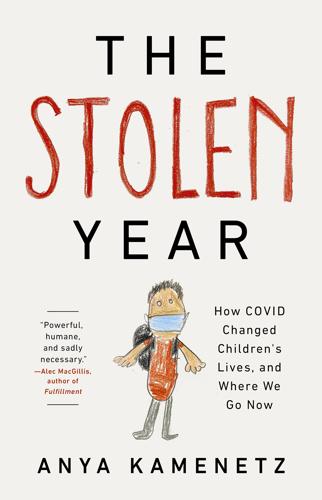
The Stolen Year
by
Anya Kamenetz
Published 23 Aug 2022
It rose on the energy of young people demanding a better world and the pain and strength of mothers. Among his last words, later witnessed around the world, George Floyd called out for his mother, dead two years: “Mama, mama, I’m through.” One of the popular signs at the marches that followed read, “When George Floyd called out for his mama, he summoned all the mamas.” If you are a white reader of this book, let me say something to you, white person to white person: If you aspire to stand with all the mamas George Floyd summoned, it means reckoning in detail with how white supremacy is visited specifically on children. In lost jobs and household security.
…
But the outright denial of services to so many, the adversarial system that drains everyone’s energy scrapping for scarce resources, and the toll on mothers in particular don’t sound like much of a model for the rest of the education system to follow. We’ll hear from Jonah’s family again in Chapter 6; things get even more complicated for them but also a little less lonely for Jonah. SUMMER 2020 5 RACISM These THUGS are dishonoring the memory of George Floyd, and I won’t let that happen. Just spoke to Governor Tim Walz and told him that the Military is with him all the way. Any difficulty and we will assume control but, when the looting starts, the shooting starts. Thank you! —President Trump, via Twitter, May 29, 2020 June 1, 2020, US seven-day average of cases: 21,518 By May, Patricia Stamper’s toddler, Patrick, seemed increasingly uncomfortable.
…
They determined he had an inguinal hernia, a symptom of his genetic disorder. He would need surgery. While they were dealing with this news, the neighborhood, the city, and the country exploded around them. On May 25, a white Minneapolis police officer named Derek Chauvin murdered a forty-six-year-old Black man named George Floyd in broad daylight on a public street. Darnella Frazier, a seventeen-year-old girl who was out that day buying her nine-year-old cousin a snack, recorded the murder with her cell phone and posted it to social media. The video, which showed Floyd pleading for his life, spread like a grass fire.

Aftershocks: Pandemic Politics and the End of the Old International Order
by
Colin Kahl
and
Thomas Wright
Published 23 Aug 2021
Gould and Wilson, “Black Workers”; Nate Rattner and Tucker Higgins, “As New Data Shows Early Signs of Economic Recovery, Black Workers Are Being Left Out,” CNBC, June 5, 2020, https://www.cnbc.com/2020/06/05/coronavirus-recovery-black-workers-are-being-left-out-data-shows.html. 80. Faith Karimi and Maggie Fox, “George Floyd Tested Positive for Coronavirus, but It Had Nothing to Do with His Death, Autopsy Shows,” CNN, June 4, 2020, https://www.cnn.com/2020/06/04/health/george-floyd-coronavirus-autopsy/index.html. 81. Eliott McLaughlin, “How George Floyd’s Death Ignited a Racial Reckoning That Shows No Signs of Slowing Down,” CNN, August 9, 2020, https://www.cnn.com/2020/08/09/us/george-floyd-protests-different-why/index.html. 82. Audra Burch et al., “How Black Lives Matter Reached Every Corner of America,” New York Times, June 13, 2020, https://www.nytimes.com/interactive/2020/06/13/us/george-floyd-protests-cities-photos.html; Larry Buchanan, Quoctrung Bui, and Jugal K.
…
“Protests Worldwide Embrace Black Lives Matter Movement,” Reuters, June 6, 2020, https://www.reuters.com/article/us-minneapolis-police-protests-global/protests-worldwide-embrace-black-lives-matter-movement-idUSKBN23D0BO; Jen Kirby, “‘Black Lives Matter’ Has Become a Global Rallying Cry Against Racism and Police Brutality,” Vox, June 12, 2020, https://www.vox.com/2020/6/12/21285244/black-lives-matter-global-protests-george-floyd-uk-belgium; Anne-Christine Poujoulat, “Protests Across the Globe After George Floyd’s Death,” CNN, June 13, 2020, https://www.cnn.com/2020/06/06/world/gallery/intl-george-floyd-protests/index.html. 85. Kim Kyung Hoon, “Black Lives Matter Protesters March Through Tokyo,” Reuters, June 14, 2020, https://www.reuters.com/article/us-minneapolis-police-protests-japan/black-lives-matter-protesters-march-through-tokyo-idUSKBN23L0FZ. 86.
…
Audra Burch et al., “How Black Lives Matter Reached Every Corner of America,” New York Times, June 13, 2020, https://www.nytimes.com/interactive/2020/06/13/us/george-floyd-protests-cities-photos.html; Larry Buchanan, Quoctrung Bui, and Jugal K. Patel, “Black Lives Matter May Be the Largest Movement in U.S. History,” New York Times, July 3, 2020, https://www.nytimes.com/interactive/2020/07/03/us/george-floyd-protests-crowd-size.html. 83. Roudabeh Kishi and Sam Jones, “Demonstrations & Political Violence in America: New Data for Summer 2020,” Armed Conflict Location & Event Data Project, 2020, https://acleddata.com/acleddatanew/wp-content/uploads/2020/09/ACLED_USDataReview_Sum2020_SeptWebPDF_HiRes.pdf. 84.
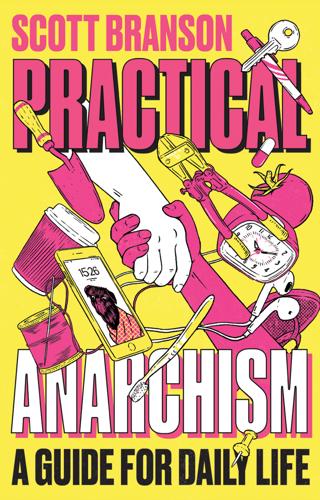
Practical Anarchism: A Guide for Daily Life
by
Scott. Branson
Published 14 Jun 2022
Globally, there have been more and more grassroots movements with significant anarchist participation or anarchistic tendencies, from Chile to Hong Kong, from France to India, from Sudan to Greece, and more. Moreover, this period also saw the incredible spread of mutual aid projects to help communities afflicted by climate catastrophes like hurricanes, flooding, and wildfires. I wrote this book in the immediate wake of the Covid-19 pandemic and George Floyd rebellions, which have further built up anarchist practices of direct action and world-building and helped form a new generation of people looking to non-state, mundane ways of finding freedom—spreading globally from the USA outward through international solidarity. We are still in this moment, where the legacy of protest movements is entangled with occupations, and there are ongoing mutual aid projects across the world providing people with resources in the face of failed state efforts.
…
Above all, the intense precariousness of life that most of us experience, which makes us grasp at anything that feels stable, stood in the way of people risking their homes. On the other hand, what eventually did happen was a different sort of uprising, not in response to a pandemic enabled by global capitalism and nationalistic warmongering, but in anger after the police murder of George Floyd. Years of ever-heightening threats of white supremacy, anti-Blackness, racism, and anti-migrant sentiment stoked the flames that led to these uprisings, even if a single murder (one of many) was the final impetus. But we can still relate this uprising to the context of work. Our labor conditions may not be the tipping point to ending the complex systems of oppression, though arguably being out of work—and being involved in mutual aid—does seem to connect to the willingness to risk more when the racist violence becomes intolerable.
…
Our labor conditions may not be the tipping point to ending the complex systems of oppression, though arguably being out of work—and being involved in mutual aid—does seem to connect to the willingness to risk more when the racist violence becomes intolerable. For many, the pandemic precarity wasn’t new, just a solidified version of a long-term experience: tinder that needed a spark. On a hopeful note, the authors of the essay, “The Interregnum: The George Floyd Uprising, the Coronavirus Pandemic, and the Emerging Social Revolution,” argue that the phenomena after the uprising of the “Great Resignation,” which they rename the “Great Refusal,” of people giving up their low-paid, pointless jobs, was a furthering of the revolutionary fervor of the rebellion into more aspects of our daily life.
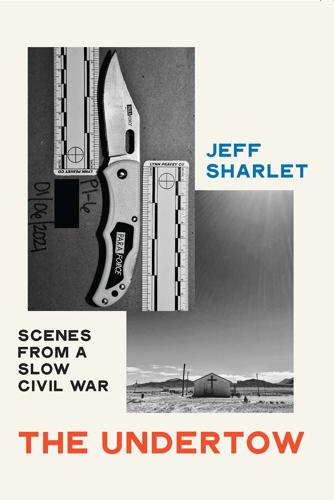
The Undertow: Scenes From a Slow Civil War
by
Jeff Sharlet
Published 21 Mar 2023
Short of a declaration from Byrd of murderous intent, this standard would make a conviction—of Byrd, or most other police officers charged with its violation—nearly impossible. Which was why the 2021 George Floyd Justice in Policing Act would have struck the word willfully from 18 U.S.C. § 242. But the same Republicans who asked, “Who killed Ashli Babbitt?” had no qualms about killing the George Floyd Act, an apparent contradiction that seems like evidence of hypocrisy only if you mistakenly believe that the question of who killed Ashli was ever meant to be answered. The believers stoked their own paranoia by arriving at no fixed point.
…
“It’s all over the internet.” He said he liked cops, except the cop who shot Ashli. “You feel like the cops are on your side?” I asked. “Obviously!” He swung his arms open like a ringmaster. “They’re here protecting me.” He turned to a woman beside him and asked for the name of the officer who killed George Floyd. Derek Chauvin. “And they only prosecuted him,” continued Riley, “because these people”—the protesters—“threw a fit.” A White cop’s knee on a Black man’s neck for nine minutes? “Somebody doing their job.” A Black cop’s split-second shot at a White woman leading a mob? Riley agreed with one of the other rally speakers: “assassination.”
…
“There are things I want to tell her.” Her voice wobbled. “Questions I want to ask.” She paused, then let it in: the fury. “My daughter was publicly executed!” She gathered herself, torn between rage and her desire for dignity. “Everybody knows Breonna Taylor,” she said. From the back: “BLACK LIVES MATTER!” “Everybody knows George Floyd,” Ashli’s mother said. The two women sitting next to me, Jorge Riley’s girlfriend, Kelli Morgan, in a sun hat with a leopard-print band, and a friend in cutoff jeans bedazzled red-white-and-blue across her back pockets—she said her name was “Freedom”—screamed, “Criminals!” “Why don’t people know who Ashli Babbitt is?”
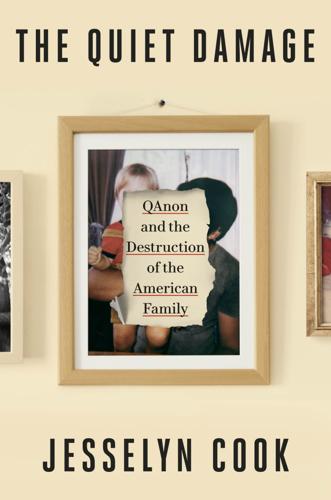
The Quiet Damage: QAnon and the Destruction of the American Family
by
Jesselyn Cook
Published 22 Jul 2024
,” The Dispatch, April 22, 2020, https://thedispatch.com/article/did-bill-gates-test-unapproved-vaccines/. GO TO NOTE REFERENCE IN TEXT claim that Soros was paying Black people: D. Alba, “Misinformation About George Floyd Protests Surges on Social Media,” New York Times, June 1, 2020, sec. Technology, https://www.nytimes.com/2020/06/01/technology/george-floyd-misinformation-online.html. GO TO NOTE REFERENCE IN TEXT BLEXIT was paying travel and lodging costs: R. Scott and W. Steaken, “Candace Owens’ BLEXIT Group Pays for Some Attendees’ Travel to Trump’s White House Event,” ABC News, October 10, 2020, https://abcnews.go.com/Politics/candace-owens-blexit-group-pays-attendees-travel-trumps/story?
…
She hated Trump. While she bounced off the walls in restless trepidation, Christopher moped around the house in a funk. Prepandemic, he had traveled monthly for work. He hated being cooped up and he missed his own adult children. Then, in an atrocity caught on camera for all to bear witness, George Floyd was murdered. Watching a Black man wheezing in agony under the knee of a white police officer like a dog in the street for eight minutes and forty-six seconds left Christopher speechless and shaking. He was, like much of the rest of white America, coming to understand that living under the threat of state violence was still part of the Black American experience.
…
The boys hovered by the couch, craning their necks to get a look. What transpired over the next forty minutes felt like a fever dream. Tayshia sat in silence, dumbfounded by what she was hearing as phones changed hands. It was surreal: Joe Biden rapes and eats children. Covid-19 isn’t real. The Jews control the media. George Floyd’s killing was a hoax. Trump is a savior for Black people. A war is coming. Not only was it crazy…some of it was plainly racist and hateful. Tayshia wanted to knock the phone out of Kendra’s hand and shake her, like: Hello? Have you forgotten that you’re Black? Those kinds of conspiracy theories, she thought, were only for the likes of rural, white, gun-toting Baby Boomers who watched Tucker Carlson and lived in fear of immigrant invasions—the sorts of people whose car locks suddenly beeped when she walked by in parking lots.

The Rise and Fall of the Neoliberal Order: America and the World in the Free Market Era
by
Gary Gerstle
Published 14 Oct 2022
On energy politics more generally, see Helen Thompson, Oil and the Western Economic Crisis (London: Palgrave Macmillan, 2017), and Helen Thompson, Disorder: Hard Times in the 21st Century (Oxford: Oxford University Press, 2022). 42.Evan Hill, Ainara Tiefenthäler, Christiaan Triebert, Drew Jordan, Haley Willis, and Robin Stein, “How George Floyd Was Killed in Police Custody,” New York Times, May 31, 2020, https://www.nytimes.com/2020/05/31/us/george-floyd-investigation.html, accessed September 28, 2021. 43.Derrick Bryson Taylor, “George Floyd Protests: A Timeline,” New York Times, June 2, 2020, https://www.nytimes.com/article/george-floyd-protests-timeline.html, accessed September 28, 2021; Audra D. S. Burch, Amy Harmon, Sabrina Tavernise, and Emily Badger, “The Death of George Floyd Reignited a Movement. What Happens Now?,” New York Times, April 20, 2021, https://www.nytimes.com/2021/04/20/us/george-floyd-protests-police-reform.html, accessed September 28, 2021; Larry Buchanan, Quoctrung Bui, and Jugal K.
…
Biden believed he had paid off part of his debt to African American voters by making Kamala Harris his running mate, thus giving her the opportunity to become the first African American vice-president in American history. But that was hardly sufficient, especially given the magnitude of the racial justice uprising triggered by the police murder of George Floyd in Minneapolis on May 25, 2020. Floyd, an African American man, had been arrested that day for allegedly passing a counterfeit $20 check at a convenience store. When four officers arrived on the scene, they subdued Floyd, and forced him to the ground. A white officer on the scene, Derek Chauvin, then used deadly force by placing his knee hard into the back of Floyd’s neck for an interminable nine minutes, ignoring Floyd’s repeated cries that he could not breathe.
…
,” New York Times, April 20, 2021, https://www.nytimes.com/2021/04/20/us/george-floyd-protests-police-reform.html, accessed September 28, 2021; Larry Buchanan, Quoctrung Bui, and Jugal K. Patel, “Black Lives Matter May Be the Largest Movement in U.S. History,” New York Times, July 3, 2020, https://www.nytimes.com/interactive/2020/07/03/us/george-floyd-protests-crowd-size.html, accessed September 28, 2021; Mariame Kaba, “Yes, We Mean Literally Abolish the Police,” New York Times, June 12, 2020, https://www.nytimes.com/2020/06/12/opinion/sunday/floyd-abolish-defund-police.html, accessed September 28, 2021. 44.Jonathan Martin, Alexander Burns, and Thomas Kaplan, “Biden Walks a Cautious Line as He Opposes Defunding the Police,” New York Times, June 8, 2020, https://www.nytimes.com/2020/06/08/us/politics/biden-defund-the-police.html, accessed September 28, 2021. 45.Ta-Nehisi Coates, “The Case for Reparations,” The Atlantic, June 15, 2014, https://www.theatlantic.com/magazine/archive/2014/06/the-case-for-reparations/361631/, accessed September 27, 2021; Ta-Nehisi Coates, “Ta-Nehisi Coates Revisits the Case for Reparations,” New Yorker, June 10, 2019, https://www.newyorker.com/news/the-new-yorker-interview/ta-nehisi-coates-revisits-the-case-for-reparations, accessed September 27, 2021. 46.Marantz, “Are We Entering a New Political Era?”

Making It in America: The Almost Impossible Quest to Manufacture in the U.S.A. (And How It Got That Way)
by
Rachel Slade
Published 9 Jan 2024
Their workers risked everything every time they took the bus to the factory or shared rides. Life was especially hard on the women stitchers who also had to coordinate child care, shopping, and cooking for their families between their shifts. Then the video of New York cop Derek Chauvin kneeling on the neck of George Floyd for an excruciating nine minutes, twenty-nine seconds went viral. The video was irrefutable proof of the white-cop-kills-Black-citizen narrative, right there on everyone’s phone, in everyone’s social media feed. Anger spread through the country like wildfire and people took to the streets.
…
When it was time, he and Whitney went to Factory 2 together. They stood in front of the few dozen workers, mostly women, some in hijabs, some wearing headwraps, all wearing face masks. Over the past four years, they’d gathered their staff like this several times. It was almost always to tell them bad news—George Floyd’s murder, Trump’s election. Speaking to people who might not understand every word, Ben tried his best to explain American behavior, which was sometimes inexplicable. He had to reassure his staff that they were safe, even if he wasn’t so sure himself. The past year had been particularly hard—pandemic, furloughs, hiring, layoffs, fear.
…
Meanwhile, the ruthlessness of American business leaders like Jeff Bezos continued to have a pervasive effect on all Americans, whether they knew it or not. In March 2021, mainstream media focused on the unionization effort at an Amazon warehouse in Bessemer, Alabama. The trial of the Derek Chauvin, the murderer of George Floyd, was running in the background. Leading up to the unionization effort, multiple exposés had been published on the inhumane working conditions forced on Amazon employees—people passing out from heat in un-air-conditioned warehouses, or wearing diapers while working because they didn’t want to take bathroom breaks for fear of losing their bonuses.

Doppelganger: A Trip Into the Mirror World
by
Naomi Klein
Published 11 Sep 2023
But we appear to have done it at the precise moment when words and ideas underwent a radical currency devaluation, a crash connected, in ways we have barely begun to understand, to the torrent of words in which we are swimming on those screens. A torrent that assiduously amplifies the most operatic forms of virtue performance and the most cynical forms of pipiking. Angela Davis, in the spring of 2022, put the tension of the historic post–George Floyd protests like this: “In many ways, nothing has really changed at all, but at the same time, everything has changed.” Beyond Blah, Blah, Blah These are difficult themes to write and talk about, because all we have are those very same cheapened words. Which is why I greatly appreciated Greta Thunberg’s various interventions during the 2021 climate summit in Glasgow, which essentially consisted of making fun of people saying things about climate change while doing very little about climate change.
…
It is difficult to imagine that these educated, upper-middle-class white mothers were unaware that their slogan echoed another—the cries of “I can’t breathe” that rose up from the streets in 2014 after a New York City police officer put Eric Garner in a chokehold and, after Garner uttered those fateful words, ended his life. They must have known that those same words roared up from the streets again in 2020, when George Floyd said them before he was murdered by a Minneapolis police officer. Yet less than a year after the country was rocked by protests sparked by Floyd’s killing—and Ahmaud Arbery’s, and Breonna Taylor’s, and so many others before and after—here were those three words again, in only slightly altered form, being directed at public health policies designed to reduce transmission of Covid-19, which was still disproportionately ravaging Black communities.
…
Things grew only more ridiculous/serious when, in June 2022, three months after the Battle of Little Blue Bottle, Wolf staged a more successful publicity-seeking stunt while in Salem, Oregon. She found one of the only restaurants in the city that still required proof of vaccination for indoor dining—Epilogue Kitchen and Cocktails, a Black-owned business whose windows displayed portraits of George Floyd and Breonna Taylor as well as signs saying BLACK LIVES MATTER and NO PLACE FOR HATE. Despite having all the rest of Salem’s restaurants to choose from, and despite having a reservation elsewhere, Wolf strolled into Epilogue and staged a confrontation until she was asked to leave. She then filmed herself lecturing the restaurant’s Black manager, saying, “A lot of people in this nation’s history pushed boundaries like that.
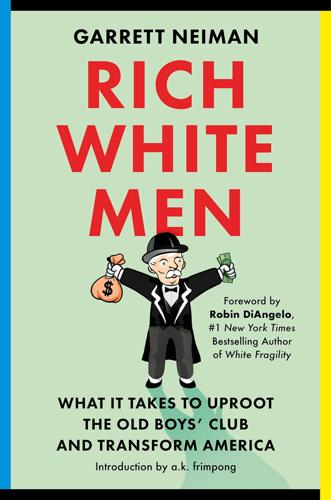
Rich White Men: What It Takes to Uproot the Old Boys' Club and Transform America
by
Garrett Neiman
Published 19 Jun 2023
Eugene Smolensky and Robert Plotnick, “Inequality and Poverty in the United States: 1900 to 1990,” Institute for Research on Poverty, Discussion Paper no. 998-93, University of Wisconsin–Madison, March 1993, https://www.irp.wisc.edu/publications/dps/pdfs/dp99893.pdf. 15. Andre M. Perry and Tawanna Black, “George Floyd’s Death Demonstrates the Policy Violence That Devalues Black Lives,” The Avenue (blog), Brookings Institution, May 28, 2020, https://www.brookings.edu/blog/the-avenue/2020/05/28/george-floyds-death-demonstrates-the-policy-violence-that-devalues-black-lives/. 16. Angela Davis, “The Meaning of Freedom,” speech, Metropolitan State College, Denver, CO, February 15, 2008, Alternative Radio https://www.alternativeradio.org/products/dava013/. 17.
…
These rich white men relish Owens’s claims that Black culture is “broken,” Black people are “pretending to be oppressed,” and Black Lives Matter activists are “domestic terrorists.”19 Owens is a spokesperson for Turning Point USA, a conservative nonprofit organization led by Charlie Kirk, a wealthy white man who has called George Floyd a “scumbag” and characterized Democratic immigration policies as “diminishing and decreasing white demographics in America.”20 Turning Point’s board of directors is composed exclusively of rich white men. Its major backers include members of the Koch Network—which has hosted semiannual meetings for wealthy right-wing donors since at least 200621—like Richard Uihlein, a billionaire who backed Roy Moore’s candidacy for one of Alabama’s US Senate seats even after he was accused of sexual misconduct with underage girls.22 Rich white men like Uihlein stay out of the public eye while funding people like Owens and Kirk to do their dirty work.
…
The whole world doesn’t need to be upended for HBS to increase its appreciation for the value these students would bring. In 1969, the year after Dr. Martin Luther King Jr. was murdered, the number of Black students enrolled at HBS grew tenfold, to about sixty students.30 Over the past fifty years, Black enrollment has stayed around that same level. Then, after the uprisings following George Floyd’s murder, HBS immediately enrolled dramatically more Black students.31 Neither of these changes occurred because the K–12 system or corporate America was reformed overnight. They happened because those in power—the people who decided which students were worthy—altered their perspectives, or at least felt external pressure to walk back inequitable policies.

Please Don't Sit on My Bed in Your Outside Clothes: Essays
by
Phoebe Robinson
Published 14 Oct 2021
Simply put, summer 2020 was a gut-wrenching, soul-crushing, blood-boiling, debilitating, and scarring season that galvanized not just America, but the world. Racial uprisings happening against a backdrop of a global pandemic is something that no one should live through, and as heartbreaking as it was to have footage of George Floyd’s murder circulating all over social media and news outlets,* it created a collective fury. While the jury is still out on whether that passion will bring about substantive change, there’s no denying that it was a historic summer. A groundswell of outrage, marches, and demands to defund the police mixed with a “Well, the world is on fire, so I gotta do something” energy was a chaotic combination that birthed something no one expected and very few wanted: social justice “warriors.”
…
The point is my man likes to fix things, because that’s his love language, but even he knew his helpful nature was no match for what summer 2020 wrought. So he followed my lead. Held me when I wanted to cry. Reminded me to take breaks from the news for my mental health. Listened when I needed to vent and stopped talking when I told him that I couldn’t have any more discussions about George Floyd on a particular day. And, even though he couldn’t go to marches with me because of the potential of him getting arrested, which would lead to his automatic deportation, he would check in via text frequently to see how I was doing and if I felt safe. When he didn’t understand something, he wouldn’t burden me with the task to teach him, but instead looked up the information to fill in the blanks.
…
But it appeared these simple tasks were either inexplicably difficult for plenty of white people to do or, more accurately, were an option they lacked the presence of mind to realize even existed. Baekoff declined to participate in performative allyship, and that was a much-needed salve. Performative allyship or performative activism rose in popularity during the uprisings and protests following George Floyd’s murder, but the concept has been around for several decades. It was first featured in Barbara Green’s 1997 book about the Federation era of women’s suffrage in Australia, entitled Spectacular Confessions: Autobiography, Performative Activism, and the Sites of Suffrage 1905–1938. Other notable mentions were in 2015 articles for Hyperallergic, a Brooklyn-based arts mag, and Atlas Obscura, another online magazine and travel company.
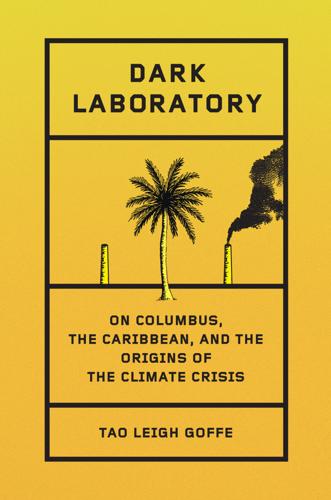
Dark Laboratory: On Columbus, the Caribbean, and the Origins of the Climate Crisis
by
Tao Leigh. Goffe
Published 14 Mar 2025
Guano teaches us these lessons, the most important being the category of labor and how it should be defined by having the inalienable right to say no. 6 Colonialism, the Birder’s Companion Guide Hours before George Floyd was pronounced dead on May 25, 2020, Christian Cooper and Amy Cooper collided in what would become known as the Central Park bird-watching incident.[1] Who was watching whom? Climate and racial crisis converged as, in the video Mr. Cooper filmed of a histrionic and deceitful performance, Amy Cooper cried wolf, calling the police to arrest Mr. Cooper. The video went viral, with over forty million views, and viewers cannot decouple its circulation from the virality of the filmed police murder of George Floyd. Most news reports noted “(no relation)” in their coverage of the two names at stake, clumsily trying to articulate the American conundrum of shared last names between African American and European American families.
…
On April 20, 2021, the Derek Chauvin verdict coincided with the global reckoning for Katricia Dotson and others murdered in the MOVE bombing of 1985 in West Philadelphia. I was devastated by the thought of the burned bones being bandied about in classrooms of institutions I had been proud to attend years ago. The state-sanctioned murder of Black people in the United States is an unmistakable pattern of violence. The police officer who murdered George Floyd was found guilty of unintentional second-degree murder, third-degree murder, and second-degree manslaughter on that day. The Penn Museum continues to be under siege and interrogation by the public for its human holdings. The museum’s management of the remains from 1985 serves as a way to hold Katricia and other African American people hostage as targets of the state.
…
In major and minor ways, coalitions of Black people across the sciences have been interrogating the role of race in the foundation of these academic disciplines. Black squares were quickly posted across institutional and personal accounts on Instagram and other social media platforms. A digital public relations disaster and performance of mourning for George Floyd, these squares soon came to signify the shallow commitments of lip service to diversity, equity, and inclusion across the world. * * * Watching is an American pastime. Being seen is not. * * * From the eighteenth-century Lantern Laws of New York City, we know this is true.

We're Not Broken: Changing the Autism Conversation
by
Eric Garcia
Published 2 Aug 2021
calls for the arrests of the officers who killed her: Aja Romano, “‘Arrest the cops who killed Breonna Taylor’: The power and the peril of a catchphrase,” Vox, August 10, 2020, https://www.vox.com/21327268/breonna-taylor-say-her-name-meme-hashtag. video was captured of George Floyd’s murder: Evan Hill et al., “How George Floyd Was Killed in Police Custody,” New York Times, May 31, 2020, https://www.nytimes.com/2020/05/31/us/george-floyd-investigation.html. Jacob Blake’s shooting in Kenosha, Wisconsin: Christina Morales, “What We Know About the Shooting of Jacob Blake,” New York Times, September 10, 2020, https://www.nytimes.com/article/jacob-blake-shooting-kenosha.html.
…
In 2020, America—and the world—was shocked and horrified when a Minneapolis police officer killed George Floyd, a Black man, by placing a knee directly on his neck. In March of that year, Breonna Taylor, an emergency medical technician, was shot and killed by police officers who had barged into her apartment in Louisville, Kentucky. There were widespread calls for the arrests of the officers who killed her, and that became a rallying cry for many and on social media. The fact that video was captured of George Floyd’s murder and, later, Jacob Blake’s shooting in Kenosha, Wisconsin, seemed to finally make white Americans see that their Black countrymen and women were not being hyperbolic when they said they feared police.

Essential: How the Pandemic Transformed the Long Fight for Worker Justice
by
Jamie K. McCallum
Published 15 Nov 2022
Is Shutting Down the Ports on Juneteenth,” In These Times, June 16, 2020, https://inthesetimes.com/article/juneteenth-ilwu-dockworkers-strike-ports-black-lives-matter-george-floyd. 26. Clarence Thomas, “‘The Most Effective Way to Stop Police Terror Is Action at the Point of Production,’” interview by Eric Blanc, Jacobin, June 9, 2020, https://jacobinmag.com/2020/06/george-floyd-ilwu-work-stoppage-antiracism. 27. “ILWU Stands Down at West Coast Ports.” 28. Joe DeManuelle-Hall, “West Coast Dockers Stop Work to Honor George Floyd,” Labor Notes, June 11, 2020, https://labornotes.org/blogs/2020/06/west-coast-dockers-stop-work-honor-george-floyd; Thomas, “‘The Most Effective Way to Stop Police Terror’”; “ILWU Stands Down at West Coast Ports.” 29.
…
According to Strikewave, over twenty-eight thousand healthcare workers had participated in almost thirty strikes from March to September 2020. They’ve also founded more than one hundred new unions in twenty-two states.22 Given all he faced in 2020, it’s no wonder Chris Smalls ended up outside Jeff Bezos’s house in August with a personalized guillotine. In May, George Floyd was killed by Minneapolis police officer Derek Chauvin, who knelt on Floyd’s neck long after he had stopped breathing. As many as twenty-six million people are estimated to have joined the thousands of Black Lives Matter protests across the country that followed that summer—there was a protest in 40 percent of US counties.

Limitless: The Federal Reserve Takes on a New Age of Crisis
by
Jeanna Smialek
Published 27 Feb 2023
In the years leading up to the pandemic, the nation had been grappling with the harsh reality that Black people were regularly killed at the hands of the police who were meant to protect them, with protests at times sweeping American cities. The nine minutes that helped to turn the reaction to that centuries-long drumbeat of injustice into an even more momentous movement came on Tuesday, May 25, 2020. That was the day that Minneapolis police arrested George Floyd, a forty-six-year-old Black man who a convenience store clerk said had bought cigarettes with a counterfeit $20 bill. A white officer named Derek Chauvin kneeled on Floyd’s neck until he died, a slow-motion killing that was captured on video and circulated across the internet. Hundreds of protesters flooded Minneapolis’s streets starting the next day, and by May 27 they were marching across major cities from Memphis to Los Angeles.
…
Hundreds of protesters flooded Minneapolis’s streets starting the next day, and by May 27 they were marching across major cities from Memphis to Los Angeles. Photos of people of all colors and creeds gathering in solidarity, holding posters emblazoned with the phrase “I Can’t Breathe”—George Floyd’s last words—dominated social media, alongside images of boarded-up storefronts and broken glass. The protests quickly became another partisan dividing line, with much of the left embracing them as some on the right painted them as disorderly riots. Chauvin was arrested and charged for Floyd’s death on May 29, the same day that Trump posted on Twitter that the Minneapolis protesters were “thugs” and warned that “when the looting starts, the shooting starts.”[7] The phrase, which had a racist history tracing back to the 1960s Civil Rights movement, was widely slammed for glorifying violence.[8] * * * — The 2020 Black Lives Matter protests were an important moment for America.
…
He had long been bothered by the fault lines dividing society in the twenty-first century, many of which were both economic and racial—so bothered, in fact, that he had years earlier launched an Opportunity & Inclusive Growth Institute to research the ways that the economy distributed its winnings. Much of its work mirrored research that was happening across the Fed’s twelve-bank system, but Kashkari was especially active in communicating that it was happening, drawing news coverage and stoking conversation on social media. In the tense early hours after George Floyd’s murder, as Kashkari watched the city around him react with shock and sadness and shared in the protesters’ outrage, he decided to talk about it on Twitter. On May 27, he posted a two-tweet series condemning police action. “It was as if they were saying: this is what we’ve been trained to do.

Health and Safety: A Breakdown
by
Emily Witt
Published 16 Sep 2024
When the pandemic stopped we could hire a house cleaner; I would stop complaining about the division of labor, stop trying to keep accounts. Andrew was right: I needed to be less concerned. If we shared everything, we were in this together. I was much too obsessive about equality. 17 On Memorial Day, Monday, May 25, a white police officer named Derek Chauvin murdered a Black man named George Floyd outside a convenience store in south Minneapolis, kneeling on his neck for nine minutes and twenty-nine seconds while three other police officers stood by and watched Floyd die. Later that night, a high school junior named Darnella Frazier, who witnessed the murder, posted a video recording of it on Facebook.
…
When I sat on my couch and watched the Third Precinct burn I knew that the particular political sentimentalism of the city was finally converging with the empirical reality of inequality, segregation, and police murder, and that it was extremely likely that at least some of the people setting Lake Street on fire that night were white kids—not accelerationist outsiders but people equally enraged in the moment. (Of the four people later convicted of arson, two were Black and two were white. All four said they had been motivated by their anger that the police had killed George Floyd, although one of the white guys later told Al Jazeera that he had been in the middle of a prolonged manic episode at the time.) In the days that followed I saw commenters from elsewhere impose all kinds of theories and paradigms on the city’s rage and what had fueled it, and draw from conclusions that seemed divorced from the specificity of the place.
…
Taylor was a twenty-six-year-old Black emergency-room technician who was shot and killed by members of the Louisville Metro Police Department on the thirteenth of March, during a botched raid on her apartment. The killing had happened as the country was going into lockdown because of the pandemic, and her death did not receive much national attention until the protests began after the murder of George Floyd. On the twenty-eighth of May, after the Courier Journal published a transcript of Taylor’s boyfriend’s frantic 911 call in the aftermath of the shooting, and as Minneapolis inspired marches across the country, people in Louisville had started demonstrating to call for the firing and arrest of the officers responsible.
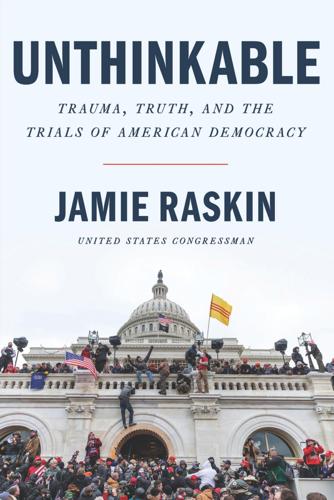
Unthinkable: Trauma, Truth, and the Trials of American Democracy
by
Jamie Raskin
Published 4 Jan 2022
He turned everything into a learning adventure, and was obviously still outraged about the grisly killing of George Floyd. We drove down to Lafayette Square and found lots of elaborate Trumpian military fencing under construction as COVID-safe masked crowds of nonviolent youthful protesters gathered to chant support for the sweeping reforms contained in the George Floyd Justice in Policing Act. The homemade signs were vivid: “If You Don’t Like Wearing Your Mask Every Day, Try Breathing While Black,” “Black Lives Matter/Black Votes Matter,” “Who Do You Call When a Cop Is the Murderer?” and “George Floyd Mattered.” We wended our way through the crowd in our masks, trying to maintain social distance as best as we could, even as we warmly greeted constituents who were excited to bump into me there.
…
Protracted social isolation gave Americans the chance to witness and then really see the continuing brutal violence wielded by certain police officers and certain police forces against African American citizens. The defining event in our household, as in millions of others across America, was the ghastly murder of George Floyd by Officer Derek Chauvin in Minneapolis on May 25, 2020. “Dad, watch this,” Tommy said. He was in our kitchen when he handed me his phone. I watched the excruciating scene of a sadistic white police officer pressing his knee on the neck of a prone, handcuffed African American man, George Floyd, until he was asphyxiated. Tommy looked heartbroken and astonished, as though his mind and heart could not assimilate the reality of so much viciousness and cruelty being densely concentrated in one man, a lawless agent of the state.
…
Tommy looked heartbroken and astonished, as though his mind and heart could not assimilate the reality of so much viciousness and cruelty being densely concentrated in one man, a lawless agent of the state. He was shell-shocked. I tried to comfort him, and we talked about what we might do in response. In the House Judiciary Committee, we went to work on the George Floyd Justice in Policing Act, legislation to ban chokeholds and strangleholds, require the use of dashboard and body cameras, establish a nationwide database of disciplined officers, forbid lethal force in all cases except to repel lethal force, and get rid of corrupt judge–made doctrines like “qualified immunity,” which made lawless cops essentially untouchable.

Work Won't Love You Back: How Devotion to Our Jobs Keeps Us Exploited, Exhausted, and Alone
by
Sarah Jaffe
Published 26 Jan 2021
Every person who walked out today is an owner, and the owners say: Time’s up.” 46 That organizing was followed by demands, in the summer of 2020, that Google end its contracts with police departments. Tech workers joined in solidarity with protesters across the country, calling for defunding and abolishing policing after a Minneapolis officer killed George Floyd. A letter signed by more than 1,600 Google employees read, in part, “Why help the institutions responsible for the knee on George Floyd’s neck to be more effective organizationally?” Amazon programmers, meanwhile, had been organizing to support the company’s warehouse workers, protesting their dangerous working conditions during the COVID-19 pandemic. In both cases, the tech workers were taking their lead from those on the front lines. 47 Suddenly the tech industry no longer seemed so impenetrable.
…
It was one of those moments, just a reminder that they see me as somebody who is obviously doing this work. ” Those connections were especially valuable to her students in the middle of the Trump administration’s crackdown on immigrants, during the coronavirus pandemic, and in the upswell of protest after the police killings of George Floyd and Breonna Taylor in 2020. For her, all of these issues were intertwined, and they all underlined the question of sanctuary at school. When the schools shut down to prevent further spread of COVID-19, Jimenez’s school managed to distribute a number of laptops to students, but, she noted, it was still incredibly difficult to translate classroom teaching to virtual learning.
…
Kaepernick, like Muhammad Ali before him, sent a signal to the owners and to the world that they could not control him, and he has used his fame since then to give high-profile donations to social justice organizations and to hold “Know Your Rights” camps for young Black men in cities across the country. But Kaepernick said he wanted to keep playing, and the NFL still refused to let him. 48 In spring 2020, the eruption of nationwide protests at a scale never before seen, after a Minneapolis police officer killed George Floyd, vindicated Kaepernick. NFL owners and coaches tripped over themselves scrambling to apologize, plastering their social media accounts with “Black Lives Matter” statements. Jim Harbaugh, Kaepernick’s coach in San Francisco, said he was proud of the player (though he’d opposed the protest at the time) and called him a “hero,” comparing him to Jackie Robinson and Ali.

On Breathing
by
Jamieson Webster
Published 20 Feb 2025
In the summer of 2020, the politics of breathing took a sudden turn, from COVID to the issue of racism. The Black Lives Matter movement rallied around the slogan “I Can’t Breathe,” the last words spoken by Eric Garner, caught on video, while he was suffocated by a police officer, in 2014, and in 2020 uttered repeatedly by George Floyd over eight minutes while his neck was crushed under the knee of police officer Derek Chauvin. The murder of George Floyd set off a series of protests in cities across the United States. Having stared at this word fentanyl on respiratory machines for weeks, I decided to leave the hospital for good, joining the protests in Brooklyn where I live. This was a moment when thousands of people suddenly broke lockdown protocols and reclaimed shared space, now as a space for political contest.
…
We are still trying to understand the internet—a paradoxical space of connection in isolation, a breathless reading of and writing to a world we are not in when we are in this. In our age of information, we are learning how powerless knowledge can be in the face of fantasy, and how easily manipulated it is (and we are). I recently saw a picture reposted of Donald Trump after his indictment for fraud that said: “he is our George Floyd.” The reposter wrote: “the internet was a mistake.” It’s hard to disagree with this sentiment, while we have to admit how well the internet puts on full display the powerful, complex, and entangled desires we have for connection with one another. Even as the internet might pervert these basic human wishes, the capacity to be in touch with so many inhabitants of the globe, to have access to this much information, is astonishing.
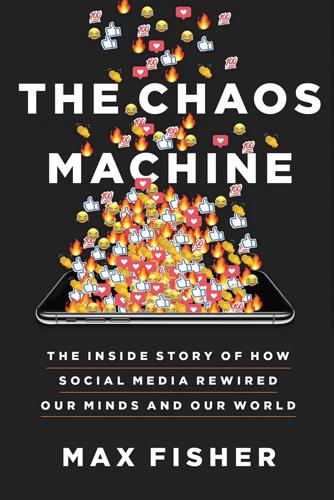
The Chaos Machine: The Inside Story of How Social Media Rewired Our Minds and Our World
by
Max Fisher
Published 5 Sep 2022
Black Lives Matter activists leveraged it to attract attention to violence that mainstream outlets tended to gloss over. Christian Cooper’s video resonated so powerfully in part because those activists had primed millions of people to see its significance. That same day, a Minneapolis police officer knelt on the neck of a Black man named George Floyd for nearly nine minutes, killing him. Millions gathered in weeks-long, city-by-city protests that were the culmination of on-the-ground organizing as well as a nationwide wellspring of moral outrage that had played out, to a significant degree, through social media. Sexual assault allegations against movie producer Harvey Weinstein had also prompted a cycle of escalating online outrage—first against him, then Hollywood, then the abusive men named in countless personal stories shared on Twitter—that became the MeToo movement.
…
QAnon memes and references especially dominated militia pages, escalating their sense that violence would be both righteous and inevitable. In late May, Ivan Hunter, the Boogaloo member with whom Carrillo had texted about an “op,” drove with several others to Minneapolis, where protests were raging over the police killing of George Floyd, an unarmed Black man. The men gathered outside a police precinct that had been taken over by a few hundred protesters. Hunter yelled, “Justice for Floyd,” raised a Kalashnikov-style rifle, and fired thirteen times into the building. No one was injured. He had likely hoped, as Boogaloos often wrote online, to spark violence between protesters and police that would escalate into war.
…
Though the suit’s odds are poor, it represents a sense that Silicon Valley’s seeming complicity in the nation’s disintegration over 2020 could not be ignored—a sense that, within hours of Carrillo’s crime, had already begun extending into the companies’ own workforces. 3. Friction ON MONDAY, JUNE 1, one week after George Floyd’s murder and three days after Carrillo’s attack, a few hundred Facebook employees set out-of-office messages announcing that, for one day, they were refusing to work. Some signed petitions demanding personnel and policy changes from their bosses. Many, in a first, publicly condemned their employer.
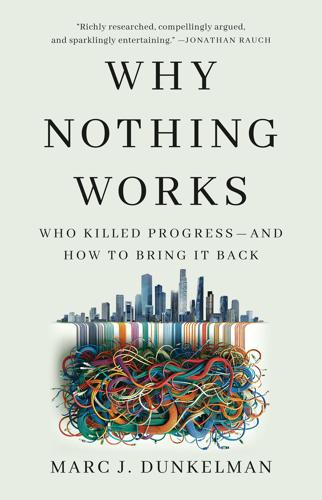
Why Nothing Works: Who Killed Progress--And How to Bring It Back
by
Marc J Dunkelman
Published 17 Feb 2025
Set amid various tragedies of the common, progressivism’s first narrative dreams of pulling power up and into a node of authority equipped to make things better from above.17 A relief agency, a benevolent bureaucracy, a Herbert Hoover in Belgium, a Mother Teresa in Calcutta, an Admiral Thad Allen in Louisiana.18 The second narrative is born not from chaos but from tyranny. Centralized authority, in this frame, is less a salve than a menace. King George. The slave driver. The bureaucrat requiring a rape victim to bring her pregnancy to term. The cop with his knee on George Floyd’s neck. Robert Moses. In these circumstances, the progressive impulse isn’t to push authority up—it’s “to speak truth to power,” to cashier the tyrant and shield the victim.19 As one liberal once explained on Facebook during a period of intense debate over the war between Israel and Hamas that began in October 2023: “I will ALWAYS stand beside those with less power.
…
Decades later, many progressives coming late to the scene would presume that these guardrails were the handiwork of archconservative villains—legislators eager to carry water for the police unions in exchange for campaign donations and endorsements. In the 2010s and 2020s, as demonstrators filled streets across America in protest of the police killings of Michael Brown, Tamir Rice, Breonna Taylor, and, most pointedly, George Floyd, progressives typically derided LEOBORs. Arduous due process protections made it impossible, in many cases, to get wayward officers fired from the force. Bad cops appeared free to wreak havoc without repercussion. Racist cops patrolled with impunity. Similarly frustrating, LEOBOR-connected confidentiality provisions prevented chiefs from commenting on accusations of misconduct, giving communities the impression that their complaints were falling on deaf ears—and, in some cases, they certainly were.
…
Citizens were wary of the police. Officers faced skepticism from the people they had sworn to protect. And police departments found it increasingly difficult to recruit good new cops. A vicious cycle. Nationally publicized instances of police brutality—most notably Derek Chauvin’s videotaped 2020 murder of George Floyd—sparked demonstrations and spurred a renewed interest in LEOBOR reform. But more mundane episodes of impunity were born of the same dynamic. In 2021, the City of North Providence, Rhode Island, tried to fire Scott Feeley, a police sergeant charged with a whole rash of violations. He’d been insubordinate to his superiors.
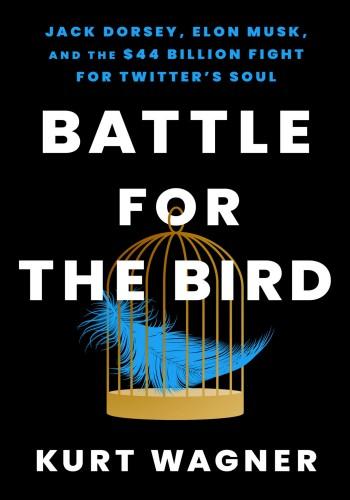
Battle for the Bird: Jack Dorsey, Elon Musk, and the $44 Billion Fight for Twitter's Soul
by
Kurt Wagner
Published 20 Feb 2024
Tell that to your hater @yoyoel.” Twitter, May 28, 2020, 9:44 a.m., https://twitter.com/realDonaldTrump/status/1266047584038256640. Tim Walz activated the National Guard: Derrick Bryson Taylor, “George Floyd Protests: A Timeline,” New York Times, November 5, 2021, https://www.nytimes.com/article/george-floyd-protests-timeline.html. “These THUGS… the shooting starts. Thank you!”: Donald Trump (@realDonaldTrump), “These THUGS are dishonoring the memory of George Floyd, and I won’t let that happen. Just spoke to Governor Tim Walz and told him that the Military is with him all the way. Any difficulty and we will assume control but, when the looting starts, the shooting starts.
…
Tell that to your hater @yoyoel.” Twitter ended up keeping twenty-four-hour security stationed outside Roth’s house for months. The fact-check labels were just the beginning of Twitter’s clash with Trump that week. Across the country, protests had erupted after a white police officer in Minneapolis killed a black man, George Floyd, after pinning him down and kneeling on his neck. Video of Floyd’s death was shared on social media, prompting marches and protests across the country as people, many in masks to help prevent the spread of Covid, marched against police brutality. Protests in Minneapolis quickly turned dangerous as protesters vandalized cop cars and storefronts and police fired tear gas and rubber bullets into the crowd.
…
Protests in Minneapolis quickly turned dangerous as protesters vandalized cop cars and storefronts and police fired tear gas and rubber bullets into the crowd. As the protests continued for a second day, and then a third, Minnesota governor Tim Walz activated the National Guard. Eventually, Trump weighed in on Twitter, posting two tweets just before 1 a.m. on May 29, just a few days after Floyd’s death. “These THUGS are dishonoring the memory of George Floyd, and I won’t let that happen,” he wrote about the protesters. “Just spoke to Governor Tim Walz and told him that the Military is with him all the way. Any difficulty and we will assume control but, when the looting starts, the shooting starts. Thank you!” Dorsey was awake at his home in San Francisco when the tweet came in, and Twitter’s executives scrambled to get online and figure out what to do.

Who’s Raising the Kids?: Big Tech, Big Business, and the Lives of Children
by
Susan Linn
Published 12 Sep 2022
So rather than writing, I spent the first months of the pandemic engaging with young children in live video chats with my puppet, Audrey Duck—figuring I could at least provide a respite for kids abruptly deprived of their peers and for stressed parents working from home or suddenly unemployed. The increasing evidence that Black and Brown people were disproportionately dying from COVID, the horror of George Floyd’s tortuous murder under the knee of a white policeman, and the wave of protests that followed only pulled me further away from writing. My concerns about immersing children in our hypercommercialized culture seemed so beside the point. But I was wrong. While out-of-control commercialism is not the root cause of the aforementioned problems, I came to realize that our marketing-saturated culture exacerbates these and other social ills.
…
Jessica Guynn, writing in USA Today about the “three Black teenagers” results, framed the problem this way: With cuts to public education and increased reliance on technology to deliver answers, search engines wield more power than ever before in deciding what information is seen and what information is important. People view Google as an unassailable source of credible and reliable information. Yet, what’s often missing in search results that are not curated by a thoughtful hand, say a librarian or teacher: awareness of gender stereotypes and racial biases.19 Like so many companies responding to George Floyd’s murder and the ensuing Black Lives Matter protests, Google put out a statement touting its commitment to “racial equity” and detailing its plan to achieve it. The plan included admirable goals like increasing minority hiring, committing funds to antibias education, and creating products that will be useful to the Black community.
…
Take Meta, which also owns Instagram and has sometimes been lauded for promoting social justice movements like Me Too and Black Lives Matter.24 Yet the company has also been under fire for its long history of encouraging hate speech and perpetuating the growth of white supremacy groups.25 Within a week of George Floyd’s murder, a video claiming that his murder was faked reached 1.3 million Facebook users—mostly in groups run by avowedly white supremacists.26 To understand how the racism promoted by social networks and other popular tech platforms is linked to commercialism, we need to remember that algorithms governing what content we see and don’t see are created by people who, in addition to having their own biases, often work for huge conglomerates whose primary priority is to generate profits for their stockholders.
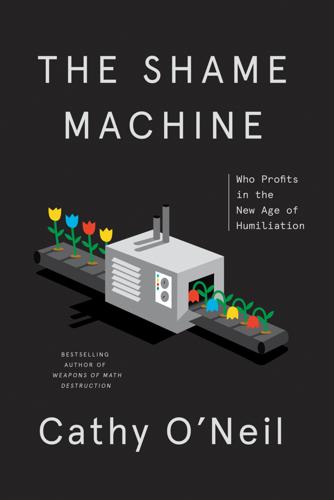
The Shame Machine: Who Profits in the New Age of Humiliation
by
Cathy O'Neil
Published 15 Mar 2022
In fact, she might have gotten sympathy from the cops, and even appreciation for alerting them to a potential problem. Within her cohort, the suggestion that she was a racist might have seemed outlandish. That was her uncle, who dropped the N-word at Thanksgiving dinner, or the Minneapolis cop, Derek Chauvin, who clamped his knee on the neck of George Floyd and suffocated him—on the very same day as the Central Park bird-watching incident, as it happens. Those people were racists. But a person reporting a threatening man? In the past, that was seen as acceptable behavior.[*2] Yet now, thanks to changing norms, that same behavior turns her into a monster, with shame leveled at her from around the world.
…
Others listed a progressive catechism, avowing support for immigrants, science, feminism, the LGBTQ community, and so on. Many of the people posting those signs no doubt felt that they had “passed” the racism test. They never used improper language. They voted for candidates committed to equality. Many went out into the streets and marched following the police murder of George Floyd in Minneapolis. Given those post-racial credentials, it seemed safe to assume that they had overcome raw racism and moved past the performative victimhood of white fragility. Having acknowledged America’s race problems, these progressive urbanites appeared to have reached the acceptance stage.
…
To understand the situation from other perspectives, we should hold calm and nonpartisan truth and reconciliation proceedings of our own. There are signs of movement in that direction. With the rise of the #MeToo movement, women have started to emerge from shame and victimhood to tell their stories. They’re testifying. And the protests following the 2020 police murder of George Floyd advanced what could become a national, and even global, discussion of race and justice. These are a promising beginning, though still far from delivering a thorough and unbiased analysis of the forces at play. Only with greater openness and disclosure will the blueprint of the shame machines come into focus.
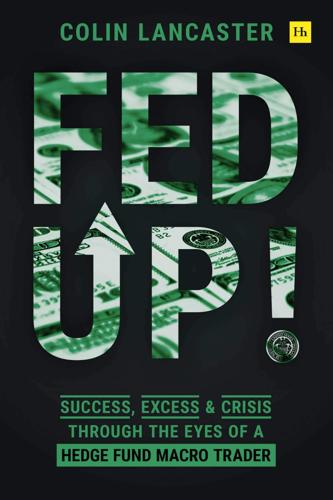
Fed Up!: Success, Excess and Crisis Through the Eyes of a Hedge Fund Macro Trader
by
Colin Lancaster
Published 3 May 2021
A man named George Floyd was killed in Minneapolis when a white police officer pressed his knee on Mr. Floyd’s neck for nearly nine minutes. The cop suffocated him in the middle of the street because he thought Mr. Floyd might have passed a counterfeit $20 bill. Mr. Floyd told the officers that he could not breathe. The pandemic-induced tinder box was set on fire when the Big D seemingly threatened protesters. He loves confrontation. When images of fires and destructive protests in Minneapolis hit the airwaves, the Big D tweeted: “These THUGS are dishonoring the memory of George Floyd, and I won’t let that happen.
…
Chapter 8 Economic Data Worse than the Great Depression May 2020 5/1/20—ISM manufacturing drops to 41.5. 5/1/20—FDA approves remdesivir for emergency use. 5/5/20—ISM nonmanufacturing declines to 41.8. 5/5/20—Fed eases liquidity requirement for banks participating in emergency lending facilities. 5/6/20—US reports 90K nurses contracted COVID-19, 260 dead. 5/8/20—Payrolls -20.5M; unemployment rate to 16%; “real” unemployment to 22.8%. 5/15/20—Fed loosens bank capital requirements again. 5/17/20—Germany and Japan enter technical recessions based on Q1 data. 5/27/20—US fatalities top 100K. 5/31/20—George Floyd protests increasing in major cities; looting and riots in some. Month-end: UST 10s at 0.65%; S&P +4.8%; Nasdaq +6.8%. I gotta get the fuck out of London. It’s probably two months behind the USA in terms of the virus, and it’s not going to open any time soon. I can’t wait another sixty days.
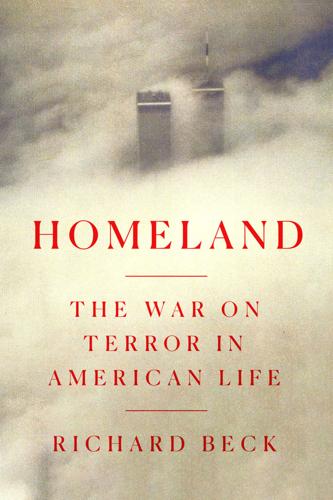
Homeland: The War on Terror in American Life
by
Richard Beck
Published 2 Sep 2024
Then, previewing the self-pitying logic that “Blue Lives Matter” conservatives would adopt toward the end of the Obama administration, he said, “I can’t help but think that the people who are trying to stop this just don’t think police officers’ lives are worth saving.”[53] Billions of dollars’ worth of equipment have since been handed over to America’s cops.[54] Six years after Eric Garner’s death, American law enforcement put on an even bigger spectacle while putting down a new wave of antiracist protests. The rallies, marches, and riots that followed the police murder of George Floyd in Minneapolis represent the peak of twenty-first-century American protest so far. Protests took place in all fifty states, with as many as twenty-six million people participating. Once again, people’s disbelief at the impunity of America’s police both amplified and focused anger at their treatment of African Americans. To watch George Floyd repeat Eric Garner’s dying words as his life ended under the knee of the Minneapolis police officer Derek Chauvin—“I can’t breathe”—was to understand that American law enforcement still regarded the scope of its punitive authority as unlimited.
…
BACK TO NOTE REFERENCE 54 Tobi Haslett, “Magic Actions,” n+1, no. 40 (Summer 2021), www.nplusonemag.com/issue-40/politics/magic-actions-2. BACK TO NOTE REFERENCE 55 Matthew Impelli, “54 Percent of Americans Think Burning Down Minneapolis Police Precinct Was Justified After George Floyd’s Death,” Newsweek, June 3, 2020, www.newsweek.com/54-americans-think-burning-down-minneapolis-police-precinct-was-justified-after-george-floyds-1508452. BACK TO NOTE REFERENCE 56 Tanya Kerssen (@tkerssen), Twitter, May 30, 2020, 10:37 p.m., twitter.com/tkerssen/status/1266921821653385225. BACK TO NOTE REFERENCE 57 Tom Cotton, “Tom Cotton: Send in the Troops,” New York Times, June 3, 2020, www.nytimes.com/2020/06/03/opinion/tom-cotton-protests-military.html.
…
When the woman turns the camera back to the glass-paned door, a bright light is visible, shining up from the street. The police are waiting to see whether the “threat” will reemerge.[57] In early June 2020, the Arkansas senator Tom Cotton published an op-ed in The New York Times. “The rioting has nothing to do with George Floyd,” he wrote. “On the contrary, nihilist criminals are simply out for loot and the thrill of destruction.” He called on the Trump administration and the rest of the federal government to “employ the military” to mount “an overwhelming show of force.”[58] Perhaps he had not noticed that a majority of the country’s governors were doing just that.

Shutdown: How COVID Shook the World's Economy
by
Adam Tooze
Published 15 Nov 2021
The “American economy” that the protesters sought to defend was that of tattoo parlors, barbershops, tanning salons, bars, and gyms.2 Dark money of the Koch brothers played its part from offstage.3 This was a strange form of class struggle that aligned enraged petty capitalists and right-wing oligarchs against corporate liberalism. And then a far deeper wound in American society was torn open. On May 25 a police officer in Minneapolis handcuffed a Black man, George Floyd, forced him to the ground, and knelt on his neck until he died.4 It was not in itself an unusual event. Black men often die at the hands of America’s police. But this incident triggered an amplification effect in an extraordinary upsurge in protest across the country. America’s Black population suffered disproportionately from the pandemic.
…
By the summer of 2020, both had taken a turn for the better. The labor market situation was less dire than in the spring. The stock market was bouncing back. Even the least well-off Americans saw a significant improvement in their situation through to July. In one jaw-dropping press conference, Trump invoked the spirit of the murdered George Floyd, who, he claimed, would have taken satisfaction from the good job numbers.23 After all it was Black men, historically, who benefited most from lower unemployment. There were gloomsters and doomsayers. The Trump entourage were once again taking potshots at Jerome Powell and the Fed. “I do think Mr.
…
Levitz, “Corporate America Loves Increasing Racial Inequality,” Intelligencer, June 16, 2020. 9. L. Seligman, “Esper Orders Hundreds of Troops from 82nd Airborne Home from D.C. Area,” Politico, June 4, 2020. 10. A. Nally, “The Curfews in Place in US Cities and States After the Death of Black Man George Floyd,” ABC News, June 2, 2020. 11. F. Finchelstein, “Trump’s Mount Rushmore Speech Is the Closest He’s Come to Fascism,” Foreign Policy, July 8, 2020. 12. D. Choi, “G7 Countries Fail to Deliver a Joint Statement Because US Insists on Saying ‘Wuhan Virus’ for the Coronavirus,” Insider, March 25, 2020. 13.
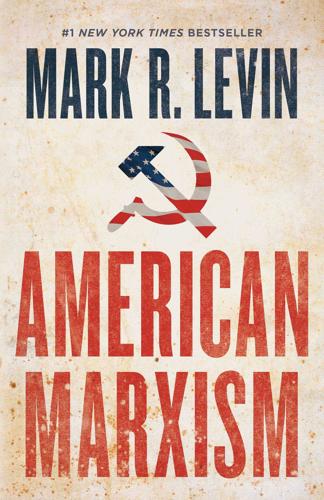
American Marxism
by
Mark R. Levin
Published 12 Jul 2021
But then it is also the case that significant change-oriented movements are not likely to emerge except during periods of economic and social instability.”53 If this seems familiar, it is. This strategy has also largely played out in America’s streets and politics, as Antifa, BLM, and other Marxist-anarchist groups exploited both the initial economic collapse due to the coronavirus and the death of George Floyd. These groups and others have been key in fomenting violent rioting mostly but not exclusively in the inner cities, militant confrontations with law enforcement, the destruction of public monuments and targeting of a federal courthouse and the White House, occupying parts of cities, and assaulting and threatening citizens at restaurants and other public places.
…
However, even before the 1619 Project, the media embraced and promoted Critical Race Theory, setting the stage for the violent riots that have engulfed numerous cities. Zack Goldberg, a doctoral candidate in political science at Georgia State University, undertook what may be the most extensive examination of media reporting on race and racism in recent years. “In the wake of the protests, riots, and general upheaval sparked by the police killing of George Floyd in Minneapolis,” wrote Goldberg, “the United States is experiencing a racial reckoning. The response from America’s elite liberal institutions suggests that many have embraced the ideology of the protesters. Here, for instance, is a sampling of the titles of opinion pieces and news stories published over the past month by the country’s two most influential newspapers, The Washington Post and The New York Times: “When black people are in pain, white people just join book clubs” “Black Activists Wonder: Is Protesting Just Trendy for White People?”
…
Indeed, as the Law Enforcement Legal Defense Fund reports, “across major US cities, tangible de-policing occurred June 2020 through February 2021 after anti-police protests, officials’ statements, and policy decisions, and as arrests and searches plummeted—homicides soared in the months since the George Floyd incident…. Last year [2020], the United States tallied over 20,000 murders—the highest total since 1995 and 4,000 more killings than in 2019. Preliminary FBI data for 2020 points to a 25% surge in murders—the largest single year increase since the agency began publishing uniform data in 1960.”7 Police officers are leaving and retiring in droves.8 And major cities are depopulating as people are now leaving in unprecedented numbers due, in significant part, to the increase in crime.9 Especially pernicious is the American Marxist’s control over our public school and college classrooms, with the full support and active role of the two national teachers’ unions—the National Education Association (NEA)10 and the American Federation of Teachers (AFT)11—where your children and grandchildren are being taught to hate our country and are brainwashed with racist propaganda.
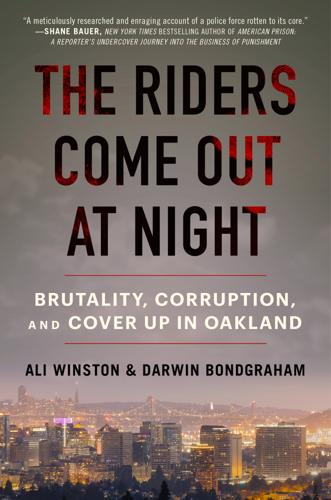
The Riders Come Out at Night: Brutality, Corruption, and Cover-Up in Oakland
by
Ali Winston
and
Darwin Bondgraham
Published 10 Jan 2023
Because of the inordinate power bestowed on law enforcement, these abuses cause immense damage to society. This is why tens of millions of Americans, and people around the world, marched in the streets in the summer of 2020—amidst a global pandemic—to call for an end to police killings of Black people, and a reimagining of public safety. The street demonstrations following the murder of George Floyd, a forty-six-year-old Black man whose neck was knelt on by a Minneapolis police officer for over eight minutes because he was suspected of buying cigarettes with a counterfeit twenty-dollar bill, were estimated to be the largest in the nation’s history. Without a doubt, Americans want fundamental change.
…
Armstrong was steeped in the department’s recalcitrant culture in the early 2000s. But he became an active member of the Oakland Black Officers Association, a loyal opposition group that raised concerns about racism within the department. Twenty years later as chief, Armstrong showed a willingness to work with the police commission and bring the OPD into the post–George Floyd era. Unlike prior chiefs, he acknowledged when the department was wrong. Armstrong’s most stunning admission came one year after the protests and civil unrest of 2020. He apologized for making false statements that justified police use of tear gas against a youth-led march. There hadn’t been anyone at the June 1 protest preparing to lob Molotov cocktails at police.
…
However, following research and interventions, Oakland cops have been able to steadily dial back their most problematic enforcement activities that result in the greatest racial disparities. As a result, Oakland is one of the only law enforcement agencies in America that could actually show (before the George Floyd protests) that it took action to reduce racial profiling. While the Oakland PD undertook these reforms, its officers showed that they could still effectively fight violent crime. The city’s Ceasefire program, while it received attention at the highest levels from the mayor and police chief, played a key role in intervening in the social networks where feuds created the majority of gun violence afflicting the city.
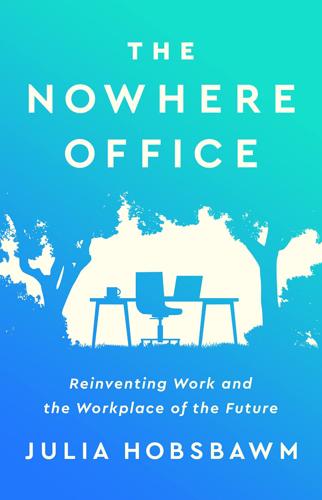
The Nowhere Office: Reinventing Work and the Workplace of the Future
by
Julia Hobsbawm
Published 11 Apr 2022
Race identity also took centre stage during the first wave of the pandemic, triggered by the death of George Floyd and the rise of Black Lives Matter as a campaigning force, which included a challenge to existing workplace culture in many institutions, not just the police. In the summer of 2021, Dame Vivian Hunt, a senior partner of McKinsey and one of the most prominent black women in business, reposted a quote on LinkedIn by seventeen-year-old Darnella Frazier who filmed the police attack on George Floyd and tagged it with the stark prediction: ‘Change come fast and change come slow but change come.’

An Ugly Truth: Inside Facebook's Battle for Domination
by
Sheera Frenkel
and
Cecilia Kang
Published 12 Jul 2021
On May 29, 2020, Twitter took the unprecedented step of slapping a warning label on one of Trump’s tweets. At 1 a.m., the president had posted a message on his Facebook and Twitter accounts about the protests roiling American cities. Americans had taken to the streets in response to the death of George Floyd, a forty-six-year-old Black man whose neck was pinned under the knee of a Minneapolis police officer for over nine minutes for the crime of purchasing a pack of cigarettes with a counterfeit twenty-dollar bill. Trump wrote that he was concerned about the protests and was in contact with Minnesota governor Tim Walz, to offer the assistance of the U.S. military.
…
Anthony, 266 Fearnow, Ben, 70–73, 76 Federal Trade Commission (FTC) Cambridge Analytica and, 153–154 Facebook’s Instagram acquisition and, 230–231 investigation into Facebook and monopoly power, 241 Open Graph and, 199 possible fines in 2019, 225–227 principles for self-regulating of behavioral advertising, 46 privacy fine of Google in 2012, 225 suit against Facebook, 1–3 2009 concerns about user data, 66–68 Zuckerberg and Sandberg’s testimony before, 295–296 Floyd, George, Trump’s comments about looting after death of, 268–273 Flynn, Michael, 144 Forbes, 229 Ford, Christine Blasey, 200 Fortify Rights, 185 France, election of 2017 and, 118, 124–125 Franzese, Derek, 38 freedom of speech issues Christchurch, New Zealand, shooting videos, 237 civil rights and, 232, 247–251, 254–255, 257, 259–260, 273, 275–277 election campaign of 2016 and, 11–17, 83–86 Facebook’s global expansion without oversight, 179–182 Facebook’s News Feed algorithms and prioritizing of posts, 182–185 genocide in Myanmar and, 85, 169–173, 176, 178–182, 185–187, 293–294 George Floyd’s death and Trump’s comments on looting and shooting, 268–273 Holocaust deniers and, 205–207, 276–278, 281, 283–285 manipulated video of Pelosi and, 236–240 QAnon and Kenosha Guard and, 278–281 Swisher’s interview of Zuckerberg and, 205–207 Trump’s accusations of voter fraud in 2020 election and, 273–275, 290 Trump’s incitement of violence in January 2021 and later banning of, 286–292, 294 U.S.
…
See freedom of speech issues Hemphill, Scott, 229–232, 261 Hertz, Jessica, 297 Hoefflinger, Mike, 55 Holocaust deniers, Facebook policy and, 205–207, 276–278, 281 Holt, Lester, 257–258 Horowitz, Ben, 191–192 Hughes, Chris New York Times op-ed, 219–222 on origins of Facebook, 253 Wu and, 231–232 Zuckerberg’s “pivot to privacy” and, 224–227 Ifill, Sherrilyn, 255 Independent Investigative Mechanism for Myanmar, of UN, 186 Information Technology Industry Council, 165 Infowars, 204 Instagram, 7, 8, 166, 193–194, 221, 222, 253, 259, 295 Facebook’s “pivot to privacy” and, 222–224 Federal Trade Commission (FTC) and, 68 interoperability of messaging apps and, 227–228 Russian Internet Research Agency and, 133 Trump and, 267, 288–290, 292 Wu and Hemphill’s evaluation of Facebook’s acquisition of, 230–231 Zuckerberg’s broken commitment to founders of, 2, 194, 227–229 International Association of Privacy Professionals, 64–65 International Criminal Court, 185–186 Internet Association, 241 Internet Research Agency (IRA), of Russia, 130–134, 137, 143, 144–145 Internet.org, 175–177 iSEC Partners, 101 James, Letitia, 1–2, 3 “JJDIDTIEBUCKLE” (leadership principle), 246 Jobs, Steve, 48, 51, 174 Jones, Alex, 82, 204–205, 206 Kalanick, Travis, 207 Kang-Xing Jin, 51 Kaplan, Joel, 197, 241, 260, 276, 278 Biden administration and, 297–298 Cambridge Analytica and, 150 election of 2016 and, 81, 108–109, 111–112, 123, 125 Kavanaugh hearings and, 200–203 manipulated video of Pelosi and, 236, 238 personality of, 14 political contributions and, 164–165 Sandberg and, 14, 87 Trump administration and, 161, 243–247 Trump and COVID-19, 267–268, 269 Trump’s anti-Muslim rhetoric and hate speech issues, 11–15 Kaplan, Laura Cox, 200 Kavanaugh, Ashley Estes, 200 Kavanaugh, Brett, 200–203 Kaye, David, 174–175 Kellogg, Hansen law firm, 295 Kendall, Tim, 36–37, 51 Kennedy, John, 153 Kenosha Guard, 279–281 Kimmel, Jimmy, 166 King, Bernice, 254, 259 Kirkpatrick, David, 114–115 Klobuchar, Amy, 153 Kogan, Aleksandr, 152–153, 155 Koum, Jan, 194, 229 Kraff, Brian, 41 Krieger, Mike, 228–229 Kushner, Jared, 15, 243–244, 256 Kustomer, acquired by Facebook, 299 Le Pen, Marine, 118 Lean In (Sandberg), 79, 127, 157–158 Leibowitz, Jonathan, 67, 154, 199 Leone, Isabella, 131 Lewandowski, Corey, 112–113 Libra (blockchain currency), 241–242, 256–257, 300 LinkedIn, 175 London, Eric, 155 Losse, Katherine, 49, 50, 124 Lynton, Michael, 56 Ma, Olivia, 26 Mac, Ryan, 272 Macron, Emmanuel, 118, 124–125, 219, 221, 237 Martin, Jenny Beth, 81 Martin, Kevin, 80, 112 Mauer, Greg, 80, 112, 140 Mayer, Marissa, 102–103 McKinsey and Company, 41, 50 McNamee, Roger, 44, 232 Mercer, Robert, 149 MeToo movement, 150, 200–201, 203 Microsoft, 31, 165, 174, 175, 241 advertising and, 51, 53, 54 Modi, Narenda, 106 Montgomery, Kathryn, 58, 60 Moran, Ned, 95–98, 100–101, 105, 129–132, 147 Moskovitz, Dustin, 31 Mossberg, Walt, 43 Mosseri, Adam, 114, 228, 261 Moveon.org, 59 Mubarak, Hosni, 157 Mueller, Robert, 147 Murphy, Laura, 248, 249 Myanmar, hate speech against Rohingya and, 85, 169–173, 176, 178–182, 185–187, 293–294 Narendra, Divya, 21 “net neutrality,” 230 Netscape, 25, 52 New Republic, The, 287 New York Times, 88, 272, 285 Cambridge Analytica and, 149 Chester on behavioral advertising and, 59 Clegg’s op-ed in, 240 Federal Trade Commission (FTC) and, 1 Hughes’ op-ed in, 219–222 Myanmar and, 186 Russian election interference and, 130, 215 New Yorker, The, 66 Newsom, Gavin, 266 Next One Billion project, of Facebook, 176–177 Nielsen, 56 Nuland, William, 147 Nuñez, Michael, 70–79 Oath Keepers, 287–288 Obama, Barack and administration of, 11, 67, 82, 118, 121, 138, 146, 184, 230, 236, 248, 251, 252, 255 Observer, 149 Ocasio-Cortez, Alexandria, 257 Oculus VR headset, 80, 81, 190 O’Donnell, Nora, 157–159 Olivan, Javier, 194, 195, 260 Onavo, 195–196, 260 O’Neill, Catlin, 140, 236, 297 Only the Paranoid Survive (Grove), 192 Open Society Foundation, 108 Option B (Sandberg), 79, 258 Overstock, 59–60 Page, Larry, 43, 44, 65, 192 Palihapitiya, Chamath, 51 Parakilas, Sandy, 152, 164 Parikh, Jay, 9, 10 Parker, Sean, 26, 28, 44, 221 Parscale, Brad, 15, 247 Pearlman, Leah, 62–63 Pelosi, Nancy, 233–234, 297 Facebook and manipulated video of, 234–240 Pence, Mike, 290 Philippines, 85, 106, 177, 291 Phillips Exeter Academy, 19–20 Pichai, Sundar, 198 “Pizzagate,” 278 Podesta, John, 100 politics, and Facebook Biden administration and, 286, 296–298 Clegg’s policy of not fact-checking political ads, 249–252 Facebook’s PAC for political contributions, 164–165 liberal favoritism at Facebook, 12–13, 74–75, 78 political ads on Facebook, 212–214 Trump administration and Facebook executives, 243–247 see also election of 2016; election of 2020; freedom of speech issues Price, Bill, 89–92 Pritchett, Lant, 41 Proceedings of the National Academy of Sciences, 182–183 Proud Boys, 288 Putin, Vladimir, 121, 123 QAnon, 278–279, 281 Red-State Secession group, 288 Reich, Robert, 226 Reynolds, Tom, 141, 145 Rice, Brian, 141 Robinson, Rashad, 249, 251, 276–277 Rose, Dan, 44, 45, 46, 51 Rosen, Guy, 195, 260, 285 Rosensweig, Dan, 43–44 Rubio, Marco, 161 Russian disinformation, on Facebook platform, 3, 282 Congressional interest in, 127–128, 133–134, 139–145 Facebook board of director’s interest in, 134–137 Facebook employees and, 190 Facebook public relations team and, 208–215 Facebook’s security team’s investigation of, 117–127 French election of 2017 and, 118, 121 Russian Internet Research Agency and, 130–134, 137, 143, 144–145 Sandberg and, 215–217 U.S. election campaign of 2016 and, 95–101, 105–109, 124–125, 248 Zuckerberg and, 196, 204, 215–217 Ryan, Paul, 78 Sai Sitt Thway Aung, 169 Sandberg, Michelle, 43, 44 Sandberg, Sheryl backlash to Lean In and, 157–158 behavioral advertising and data collecting, at Facebook, 2–3, 45–46, 51–56, 59, 60–63, 67, 87, 225 Biden administration and, 297 books by, 79, 127, 157–158, 258 Cambridge Analytica and, 153, 154–156, 159, 160–161 Capital Building storming in January 2021 and, 286–287 Congress and, 153, 170–171, 197–200 Couric’s interview of, 258–260 cyber security and, 97–98, 210 diversity and gender equity and, 50, 202–203, 273 education and professional positions before Facebook, 39–43, 46–47, 50, 52–53 election of 2016 and conservatives, 82–83 election security and, 210 Facebook and privacy, 67 Facebook’s earnings call in 2021 and, 298–299 Federal Trade Commission (FTC) and, 45, 295, 296 Goldberg’s death and, 79–81, 233 hate speech issues and, 11–14, 275–277 Hillary Clinton and, 79, 111–112, 243–244 Instagram and WhatsApp and, 228–229 Kaplan and, 14, 87 Kaplan and Kavanaugh hearings and, 201–202 manipulated video of Pelosi and Facebook debates about, 234–240 meets Zuckerberg, 4 Nuñez’s reporting and, 79 organizational changes in 2018 and, 194 parents and siblings of, 41, 44 Pelosi and, 233–234 personal life of, 41, 43, 258, 295 personality of, 2, 45, 199–200 as protective of her image, 4 reaction to emotional contagion research, 183 response to criticisms of Facebook, 156–157 responsible growth and, 86 Russian disinformation investigation and, 118–119, 120, 121, 122–123, 126, 127–128, 134, 136, 139, 143–144, 147, 196–197 Schrage and, 87–88, 89–92 Stamos and, 10–11, 103–104 Zuckerberg hires, 43–48 Zuckerberg’s working relationship with, 54–57, 86–87, 190, 260–261 Sanders, Bernie, 100, 132, 140, 221, 226 Sandy Hook Elementary School, shooting at, 82, 157, 204–205 Sanghvi, Ruchi, 32, 34, 274 Saverin, Eduardo, 30 Scavino, Dan, 243 Schatz, Brian, 166, 236 Schiff, Adam, 140, 142–144 Schissler, Matt, 171–173, 177–182 Schmidt, Eric, 42, 44, 46, 62, 192, 207 Schrage, Elliot Definers Public Affairs and, 216–217 Russian disinformation and, 119, 123, 125–126, 134–135 Sandberg and, 87–88, 89–92 Schumer and, 66–67, 88 Trump’s 2015 anti-Muslim rhetoric and hate speech issues, 12, 13 Schroepfer, Mike, 194, 291 Schumer, Chuck, 66–67, 68, 88 Scott, Kim, 47 Secureworks, 98 Segall, Laurie, 160 Sidley Austin law firm, 295 Smith, Matthew, 185–187, 294 Snapchat, 240, 253 Snowden, Edward, 8 Sorkin, Andrew Ross, 156 Soros, George, 108, 156–157, 215–216, 226 South Park Commons, 274 Sparapani, Tim, 65, 66 Sperling, Gene, 248 Stamos, Alex background before Facebook, 101–103 election of 2020 and, 283–284 investigation and report on Russian meddling and disinformation, 97, 100, 103–107, 116, 117–127, 130, 132, 145–147 2015 report on security of user’s information, 7–11 2018 Facebook reorganization and, 194 as “warranty canary,” 103, 134, 145 Standard Oil, Facebook’s parallel with, 230 Steyer, Jim, 89, 91, 232, 261, 275–276 Stop the Hate for Profit, 275 “Stop the Steal” groups, 288, 292 Stretch, Colin Cambridge Analytica and, 150 Russian disinformation and, 97, 100, 107, 119–120, 125, 135, 144–145, 146, 147 Students Against Facebook News Feed, 34, 35 Sullivan, Joe, 103–104 Summers, Lawrence, 39-42, 47 Swisher, Kara, 29–30, 43, 203–208 Systrom, Kevin, 194, 228–229 Talking Back to Facebook (Steyer), 89, 91 TechCrunch, 64, 65 TechCrunch Disrupt conference, 88, 174 Thiel, Peter Facebook’s board of directors and, 30, 81, 86, 202 Gawker lawsuit and, 202 Zuckerberg and, 25, 29, 31, 206, 244, 256 ThreatConnect, 98 Tiger, Roi, 195 TikTok, 240, 245, 253 Tillery, Kristopher, 20 Time magazine, 127, 177 TPG Capital, 89 Traynham, Robert, 271 Trump, Donald J., 213, 221, 232 Access Hollywood tape and, 100 accusations of voter fraud in 2020 election and, 273–275, 283–285, 290 accused of inciting violence in January 2021 and banned from Facebook, 286–292, 294 anti-Muslim rhetoric and hate speech and, 11–17, 85, 249 comments after George Floyd’s death, 268–273 Facebook and COVID-19 and, 267–268 hackers and 2016 campaign, 105–106, 140 meeting with Facebook executives, 161, 243–247 number of Facebook followers and interactions with, 244, 283 Pelosi and, 234, 235 on Twitter, 232, 244–245, 268–271, 276 Zuckerberg and, 256 Twitter, 15, 37, 63, 75, 98, 231, 240, 253, 287 Cambridge Analytica and, 153 election interference and, 98, 142, 144–145 privacy and, 56, 63–64 Sandberg and, 197–198 Trump and, 232, 244–245, 268–271, 276 Ukraine, Bidens and, 251 United Kingdom, Brexit and, 154 Vaidhyanathan, Siva, 61 Vargas, Jose Antonio, 66 Verge, the, 272 Villarreal, Ryan, 73, 76 Vladeck, David, 199 Vox, 154, 166 Walk Away campaign, 292 Wall Street Journal, 1, 43, 47–48, 88 Walz, Tim, 268 Warner, Mark, 127–128, 132, 246 Warren, Elizabeth, 221, 226, 242, 259, 295 Washington Post, 24, 26–29, 30, 47, 84, 141, 164–165, 234, 236, 272 Wasserman Schultz, Debbie, 100 Waters, Maxine, 256–257 WeChat, 175, 245 Weedon, Jen, 108–109, 129, 147 Weibo, 175 Wexler, Nu, 83 What You Do Is Who You Are (Horowitz), 191–192 WhatsApp, 71–72, 166, 193–194, 221 data security and, 8, 222 Facebook’s acquisition of, 196, 295 Federal Trade Commission and, 68 interoperability of messaging apps and, 227 “pivot to privacy” and, 222–224 Wu and Hemphill’s evaluation of Facebook’s acquisition of, 230–231 Zuckerberg’s broken commitment to founders of, 2, 194, 227–229 Whetstone, Rachel, 204, 206–207 Wicker, Roger, 162 Williams, Maxine, 272–273 Willner, Dave, 92–93 WilmerHale law firm, 160, 197 Winklevoss, Cameron, 21 Winklevoss, Tyler, 21 Wirathu, Ashin, 172 Women@Google, 50 World Anti-Doping Agency, data stolen from, 99 Wu, Tim, 229–232, 261 Xi Jingping, 176 Yahoo, 8, 26–27 global expansion and, 42, 175 Goldberg and, 43–44 offer to buyout Facebook declined by Zuckerman, 30–32, 44 Stamos and, 101–103 Yang, Jerry, 42 Zients, Jeff, 297 Zuboff, Shoshana, 3, 61 Zucked (McNamee), 232 Zuckerberg, Ethan, 163 Zuckerberg, Mark Beacon feature and, 57–63 Black Lives Matter memo and, 71–73 Cambridge Analytica and, 16, 153, 154–156, 160, 204 coding at Phillips Exeter, 19–20 “company over country” and, 124 cyber security and, 97–98 decline of Yahoo’s buyout offer, 30–32, 44 earnings call in 2021 and, 298–299 election of 2016, 113–116 election security and, 210 employees’ internal conversations and, 70 Federal Trade Commission (FTC) and, 295–296 free speech issues and, 74–75, 252–261, 263, 269, 281 goals of global expansion and end of economic inequality, 173–177 Goldberg’s death and, 79 hate speech and disinformation issues, 11, 193, 204–208, 275–277 hearing regarding Libra and, 256–257 Kaplan and Kavanaugh hearings and, 201–202 Kaplan’s organization of dinners with politicians, 243–247 manipulated video of Pelosi and, 236–240 meets Sandberg, 4 News Feed and apology for, 32–36 Nuñez’s reporting and, 79 personal privacy and image guarded by, 4, 65–66 personality of, 29–30, 45–46, 48–49 philanthropy of, 174, 262 “pivot to privacy” and reactions to, 222–227, 235 plans for Facebook’s future, 299–300 portrayed in attorneys general complaint, 2 public opinion and, 257–258 reaction to Hughes’ New York Times op-ed, 219–222 reaction to Stamos’ 2015 report on data security, 7, 8–10 reorganization of Facebook in 2018 and, 193–194 responsible growth and, 86 reversing of promises made when acquiring Instagram and WhatsApp, 2, 194, 227–229 Russian disinformation investigation and, 117, 118–119, 120, 121, 126, 134, 136–137, 139, 142, 147, 196, 204 Sandberg’s hiring and, 43–47 testimony before Congress, 150–151, 153, 160–167, 210 Trump banned by, 290–292, 294 “wartime” leadership philosophy and, 189–193, 207 working relationship with Sandberg, 54–57, 86–87, 190, 260–261 yearly goals of, 261–263 About the Authors Sheera Frenkel covers cybersecurity from San Francisco for the New York Times.

Cheap Land Colorado: Off-Gridders at America's Edge
by
Ted Conover
Published 1 Nov 2022
I’d catch glimpses of his goats, his turkeys, his horses, Willow’s daughter, the hay in the back of his pickup truck. The sun would flare into the picture and you’d know he was on the move, impatient, restless. Everyone else’s Zoom image was static, but Matt’s was a live-action video. I sat in my home office in New York and wished I were there. With the police killing of George Floyd in Minneapolis later that spring, things around the country got worse. New York was among the many cities rocked by protests starting at the end of May. My students joined some of the marches, as did journalist friends who got roughed up by police. A colleague watched as a peaceful march from Brooklyn “devolved into pandemonium” in lower Manhattan when looters swooped in.
…
Rather, they had seen aggrieved posts from Pruitt’s family and supporters. It was as though the pandemic had ushered in a new, expanded role for virtual communities: not only did the fight that brought Marshall and Pruitt together have roots on Facebook, it was now the scene of the aftermath. Ever since George Floyd had been killed and Black Lives Matter protests had begun, I had noticed on social media that the blocking of roads by protestors, the impeding of travel, hit a particular sore spot among conservatives.[*1] Chants like “Whose streets? Our streets!” upset them. At Troy’s annual Fourth of July potluck, I played devil’s advocate a little bit, broaching the idea that Pruitt’s aggressive driving might have contributed to his fate, but this was always rejected.
…
In addition to the deaths, it said there were 420 known infections in the six counties of the valley, 98 of which had resulted in people seeking medical care. I handed the phone to him, and he read it. “Okay, well, I believe you about this,” he said. But there was so much disbelief. A friend of the Grubers’ had shared a post on Facebook that purported to demonstrate that the George Floyd video was faked. There was broad support for Trump’s threats to send troops to cities such as Portland, Oregon, and Seattle, which had “lost control.” Matt Little, to my surprise, told me that the pandemic was intentional. Did he mean that China had released the virus on purpose? No, he meant that unnamed global elites had released it expressly to “start a race war” so they could impose further lockdown restrictions “and martial law,” leading to gun confiscation.
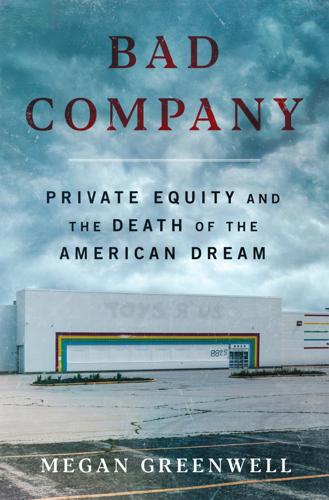
Bad Company
by
Megan Greenwell
Published 18 Apr 2025
Cameron was in kindergarten, attending Zoom school while she supervised and Rashad went to work at his new job as an information technology specialist. One morning she was brushing her teeth when she heard an adult woman’s voice yelling over the computer speakers, so she rushed out and demanded to know what was going on. It turned out that the teacher was talking to the students about George Floyd—a lesson plan that had been approved by the school district—when a white mom came on-screen, furious that her child was learning about police brutality. The mother complained to the principal, who instructed the teacher not to talk about Floyd or related topics—at a school where more than half the students were Black.
…
Jax and Cam had to know they were safe, that they were loved, that they were going to achieve great things. That’s why she had to run the drug dealers out of their building on Princess Street. That’s why she had to fight the white parents who wouldn’t let Cameron’s kindergarten class learn about George Floyd. That’s why she had to get them into a better living situation as quickly as possible. After four years in public housing, moving into Southern Towers felt like a dream. The complex was across the street from Rashad’s office and just down the road from both boys’ schools. The kids could walk to the 7-Eleven, the playground, and the swimming pools without ever leaving the property.
…
Record numbers of newsrooms formed new unions in the first year of the pandemic, including at multiple Gannett newspapers, though just 16 percent of all journalists were unionized by 2022. Newspaper workers were worried about pandemic-related safety protocols, and they brought a renewed focus on racial justice after George Floyd’s murder in May 2020. The most important reasons for the wave, though, were the same everywhere: too much work, not enough pay. One of the biggest new Gannett unions was formed at the Austin American-Statesman, in Natalia’s home state. When the pandemic began, a number of Statesman journalists were furloughed for one week every month, effectively cutting their pay by nearly 25 percent.
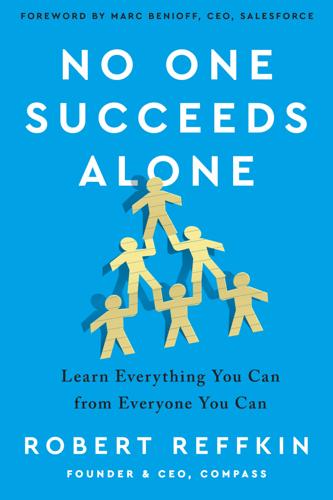
No One Succeeds Alone
by
Robert Reffkin
Published 4 May 2021
But in cases like President Trump’s executive order in early 2017 barring entry into the United States by people from certain countries with Muslim-majority populations, often called the “Muslim ban,” the White supremacist and neo-Nazi rally that took place in Charlottesville, Virginia, in August 2017, the separation of immigrant children from their families at the border, and the murder of George Floyd by Minneapolis police in 2020, I chose to share my personal views with the entire Compass community and the public. When I’m in that rocking chair in thirty years, I’m pretty sure I’ll be proud of those decisions to speak up. Twenty-two items from the bucket list I wrote at age twenty-two When I was having a hard time getting over the breakup with my college sweetheart, I decided to dream my way out of the pain by envisioning a positive future.
…
I wasn’t going to let anyone stop me from living my dreams. For two decades, because of the type of person that I am, that approach worked fairly well for me. No, it wasn’t always easy, but I was so focused on not being consumed by negativity that I learned to keep moving no matter what. Then George Floyd was murdered by police in Minneapolis and the entire country saw that heartbreaking video. The protests that sprung up across the nation and the world, and the moral reckoning that followed, were unlike anything I’d ever seen in my life. For the first time, it felt like non-Black people finally saw that there was real racism in the world, that they genuinely cared about the suffering of Black people, and that they wanted to do something about it.
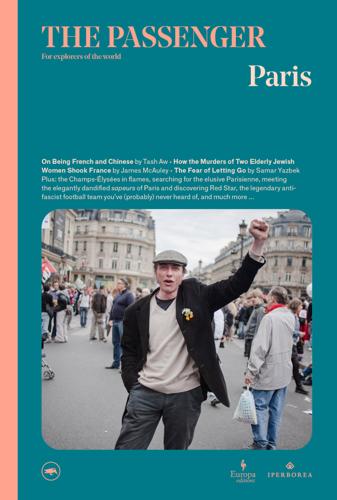
The Passenger: Paris
by
AA.VV.
Published 26 Jun 2021
Young people aged eighteen to twenty-five perceived to be black or Arab are twenty times more likely to be stopped by the police than their white peers. In the wake of the protests that broke out in the USA following George Floyd’s death in 2020, the Comité Adama’s struggle gained resonance at a national level and beyond. Tens of thousands of people came out on the streets to protest about police violence, with banners repeating the slogans seen in the USA: ‘BLM – Black Lives Matter’ and ‘Je n’arrive plus a respirer’ (‘I can’t breathe’), the last words of both Adama and George Floyd. ‘Walter Benjamin wrote in The Arcades Project that the “mighty seek to secure their position with blood (police), with cunning (fashion), with magic (pomp)”.
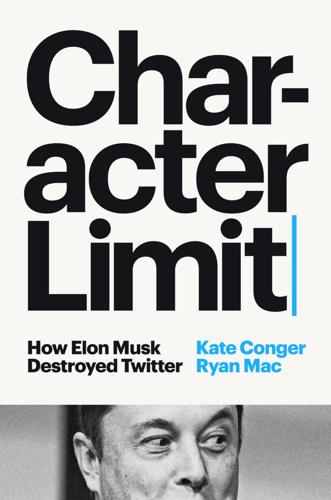
Character Limit: How Elon Musk Destroyed Twitter
by
Kate Conger
and
Ryan Mac
Published 17 Sep 2024
He had rarely entangled himself in politics, but his tirades against COVID lockdowns and his crusade to keep Tesla factories open drew him into political sparring matches on Twitter. He believed his critics were infected by a “woke mind virus” that sought to destroy the country and limit progress by focusing on divisive issues of racial and social justice. He was disdainful of the social justice movements that had gripped the U.S. in 2020, following the murder of George Floyd, and hated the resulting pushes for diversity, equity, and inclusion that swept corporate boardrooms in the months after. Like many white male tech CEOs, he saw his companies as pure meritocracies, where hard work and smarts rose to the top. To Musk, diversity initiatives were antithetical to success, watering down his workforces with underqualified female or minority candidates and discriminating against white or male applicants.
…
The name drop caused a few in the room to raise their eyebrows. Musk was citing advice from a Hollywood mogul. The head of revenue forecasting tried his best to explain that Twitter had seen drops in advertising revenue due to the war in Ukraine, the pandemic, and racial justice protests around the police murder of George Floyd, and noted that large global events had a way of impacting how advertisers allocated money. Musk nodded along before asking how Twitter handled the Great Recession of 2008. After someone chimed in that the company wasn’t making money back then in its early days, Musk went on an extended discussion on how the recession almost led to the end of Tesla.
…
The shirts had been created after the Ferguson protests by Blackbirds, a Black employee resource group, and had been popularized by Dorsey, who proudly wore one at public events to bring attention to the disproportionate amount of police violence faced by African Americans. Musk cut off funding for employee resource groups like Blackbirds, while also making other symbolic changes. He ordered the teardown of a Black Lives Matter mural, which had been put in the San Francisco office following the George Floyd protests. Musk’s team put up their own decorations. Near the tenth-floor conference room that he often inhabited while in the office, they put up a Galerie de Meme, or meme gallery, framing printouts of some of the billionaire’s favorite juvenile internet jokes. Other interior design changes seemed like attempts to stoke Musk’s ego.
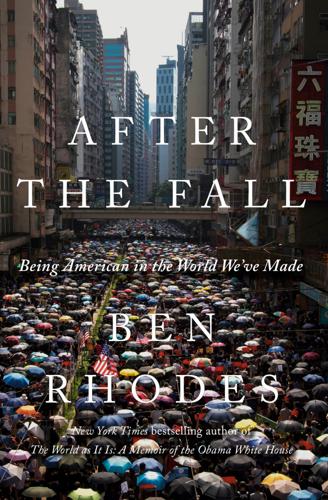
After the Fall: Being American in the World We've Made
by
Ben Rhodes
Published 1 Jun 2021
We are a country that killed hundreds of thousands of people through our own unique blend of incompetence and irrationality; a place where we condemned our children to a much lengthier period of trauma from their distorted and disorienting reality. A few months into the pandemic, a police officer in Minneapolis killed a forty-six-year-old Black man named George Floyd by kneeling on his neck for over eight minutes. Protests started to pick up around us. The COVID-shuttered shops on the main artery of our Venice neighborhood were boarded up. People painted murals and tributes on the shops, pictures of Black people who’d been killed by the police—George Floyd, Breonna Taylor, Tamir Rice, Michael Brown, Trayvon Martin. I walked by the pictures with my masked daughters. My older daughter asked who the people were.
…
It felt, in that moment, as if I had completed some transformation that had been taking place over the last few years, a brief flicker of experience for a privileged person like me to learn what it feels like to hate the country where they live. The next day, I heard shouts outside my house and wandered in the direction of the same street where the soldiers had been. A march for Black lives was moving slowly, chanting the names of Breonna Taylor and George Floyd. As I fell into the crowd, I felt my identity being subsumed into a collective, voices chanting in unison. I looked at the Black faces in the crowd, people who had far more reason than I did to be angry, to feel hatred when it came to America. What an extraordinary thing it is, I thought, that they are not simply giving up on this place.

The Equality Machine: Harnessing Digital Technology for a Brighter, More Inclusive Future
by
Orly Lobel
Published 17 Oct 2022
Technology connected us during isolation, provided care and interaction for the elderly and the sick, assisted the transition to remote work, helped mobilize civil rights activism, kept live records of systemic abuse by law enforcement and private corporations, and made those records known. The mobile capture and widespread social media dissemination of the video of George Floyd’s murder at the hands of a Minnesota police officer are but one example. Data mining also helped policymakers and scientists assess risks, monitor compliance with shelter-in-place ordinances, and accelerate the race for mass Covid-19 vaccination and herd immunity. When the application of technology fails—as with racially biased facial recognition algorithms, for instance—these failures can be better exposed than past wrongs that were hidden from sight and not recorded.
…
For example, in 2020, Goldman Sachs announced that it would not support companies in going public unless their boards are diverse, with a focus on women. Lampkin envisions this kind of diversity scoring as the equivalent of U.S. News and World Report’s annual college and university rankings. She says that since the killing of George Floyd in particular, and amid the twenty-first-century global movement for racial justice more broadly, employers have promised more diversity. But, strikingly, BlendScore found companies that have made statements about hiring more diverse employees to be less diverse than those that did not. Lampkin recently moved from Silicon Valley to Washington, D.C., to be closer to public initiatives for more data collection and transparency.
…
In the United States, the Women’s March on Washington became the largest globally coordinated public event of all time, born from the 3-million-member Facebook group Pantsuit Nation. Black Lives Matter—with its hashtag #BLM—similarly brought people together, organizing protests and calling for reforms with the support of online campaigns. A bystander’s video of George Floyd’s murder in May 2020 spread over social media, sparking outrage and inspiring tens of millions of Americans to take to the streets in protest. In the month after Floyd’s death, 37 percent of Americans who use social media reported posting or sharing content about race or racial equality.5 With digital connectivity, organizers leading the movement have been able to reach and engage people around the world.
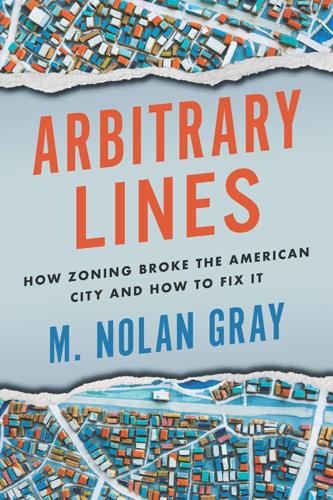
Arbitrary Lines: How Zoning Broke the American City and How to Fix It
by
M. Nolan Gray
Published 20 Jun 2022
But to the extent that we can clear a path for the small, courageous act of moving to opportunity, we have an obligation to remove that barrier. CHAPTER 5 Apartheid by Another Name Over the summer of 2020, the United States underwent a long-overdue reckoning in the aftermath of the murder of George Floyd at the hands of Minneapolis police officers. Across virtually every city in the country, an estimated fifteen to twenty-six million Americans protested the continued mistreatment of Blacks by the criminal justice system.1 Whether the Black Lives Matter movement will translate into meaningful policy reform remains to be seen.
…
For a robust defense of growth, see Tyler Cowen, Stubborn Attachments: A Vision for a Society of Free, Prosperous, and Responsible Individuals (San Francisco: Stripe Press, 2018). CHAPTER 5: APARTHEID BY ANOTHER NAME 1. Larry Buchanan, Quotrung Bui, and Jugal K. Patel, “Black Lives Matter May Be the Largest Movement in U.S. History,” New York Times, July 3, 2020, https://www.nytimes.com/interactive/2020/07/03/us/george-floyd-protests-crowd-size.html. 2. Jessica Trounstine, Segregation by Design (Cambridge: Cambridge University Press, 2018), 94. 3. As Rothstein, Color of Law notes, a majority of the committee that drafted the Standard Zoning Enabling Act, as well as many early zoning framers, were vocal segregationists. 4.
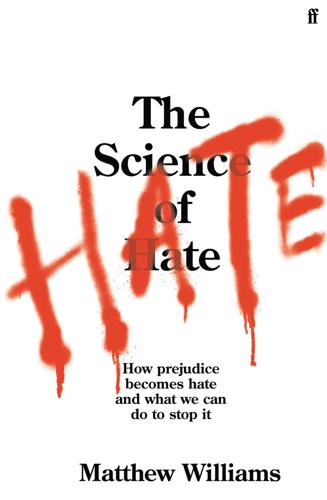
The Science of Hate: How Prejudice Becomes Hate and What We Can Do to Stop It
by
Matthew Williams
Published 23 Mar 2021
At worst, this results in the breakdown of social order as citizens question and wilfully break the laws officers are employed to enforce. At best, citizens disengage from the police – they refuse to cooperate with inquiries, to come forward as witnesses and to report crimes. Both of these responses were seen across the US in the aftermath of the murder of George Floyd by Minneapolis police officer Derek Chauvin in May 2020. Trust in police and the corresponding willingness to engage can shape the hate crime count. Even when someone knows they have been a victim of a hate crime, reporting it to the police is dependent on trust. In Russia, Alexei never reported the attacks he had suffered because he feared further persecution, and even if he had it is doubtful the police would have taken the report seriously.
…
Many cases have attracted widespread news attention, including those of Frank Jude Jr and Lovell Harris in Milwaukee, Wisconsin in 2004, Sean Bell in New York City, New York in 2006, Oscar Grant in Oakland, California in 2009, Trayvon Martin in Sanford, Florida in 2012, Michael Brown in Ferguson, Missouri in 2014, Breonna Taylor in Louisville, Kentucky in March 2020, George Floyd in Minneapolis, Minnesota in May 2020, Tony McDade in Tallahassee, Florida in May 2020, and Rayshard Brooks in Atlanta, Georgia in June 2020. Research by Professor Matthew Desmond and colleagues at Harvard, Yale and Oxford Universities noted that in the US there are clear racial disparities in police use of force.
…
A year later a Department of Justice investigation found the Ferguson Police Department had engaged in misconduct by discriminating against African Americans. As a result of the shooting, Obama committed to spend $75 million on police body-worn cameras to provide more evidence in future trials of this nature. The police killing of George Floyd by strangulation in Minneapolis in 2020 resulted in the officer concerned being charged with unintentional second-degree murder, and in violence-inciting tweets from President Trump, demonstrations globally, and the worst widespread civil unrest in the US since the assassination of Martin Luther King Jr in 1968.

Death Glitch: How Techno-Solutionism Fails Us in This Life and Beyond
by
Tamara Kneese
Published 14 Aug 2023
From the start of the pandemic, coronavirus-related campaigns flooded crowdfunding platforms, as individuals, cultural institutions, and activist organizations struggled to raise money for their survival.33 Like passing the collection basket in a place of worship or offering other in-person material assistance such as food, flowers, or hugs as part of collective mourning, crowdfunded funeral campaigns provide a way for communities to bury their dead with dignity. During moments of mass protest, such as the 2020 uprisings in response to the police murders of Breonna Taylor and George Floyd, for people who could not join mass protests (because of their own vulnerabilities or caretaking responsibilities), online acts of mutual aid, such as providing masks or food to protestors or contributing to bail funds through commercial payment systems like Venmo, Kickstarter, PayPal, and GoFundMe, provided a way to contribute to collective care movements.
…
Communication Review 18, no. 1 (2015): 14–22. Baym, Nancy. Personal Connections in the Digital Age. Cambridge, U.K.: Polity, 2010. Beech, Chace. “How Do You Foster ‘a Good Death in a Racist Society’?” Los Angeles Times, June 25, 2020. www.latimes.com/california/story/2020-06-25/black-death-doulas-react-to-george-floyds-death. Bell, Genevieve, and Joseph Kaye. “Designing Technology for Domestic Space: A Kitchen Manifesto.” Gastronomica 2, no. 2 (2002): 46–62. Bell, Gordon, and Jim Gemmell. Your Life, Uploaded: The Digital Way to Better Memory, Health, and Productivity. New York: Plume, 2010. Beller, Jonathan.

Uprooting: From the Caribbean to the Countryside - Finding Home in an English Country Garden
by
Marchelle Farrell
Published 2 Aug 2023
But I know that I cannot – when I tried to go out a few minutes before, I was overwhelmed with uncontrollable fits of sneezing and coughing, and became so wheezy that I had to use my inhaler. So I have sealed the doors and windows of the house, and myself within it, cut off from the beauty outside. I look at the rest of English life happening through a pane of glass, at some remove, as ever. *** The viral footage of the death of George Floyd has fallen like a spark on the tinder of collectively heightened emotions. A wildfire of reaction rages across the globe. People burst out of the homes they have been locked into for weeks and months, and take to the streets. Stories burst forth, the ones that have been repressed, suppressed, ignored and shouted down again and again.
…
The face that looked down upon us out there was one twisted into a cruel sneer of contempt. I had just seen those cruel sneers on the footage of crowds marching through London, raising Nazi salutes and chanting racist slogans in angry reaction to the outpouring of rage and grief around the world evoked by the viral footage of the death of George Floyd at the end of the previous month. Something was shifting in the collective psyche as it was changing in my own. The projections that had upheld the fantasy illusions of great British values were being forcibly reincorporated, and the psychic pain of all that had been split off being returned was intolerable.
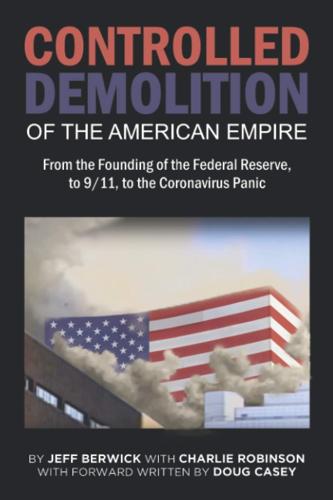
The Controlled Demolition of the American Empire
by
Jeff Berwick
and
Charlie Robinson
Published 14 Apr 2020
They feel the lack of protection from those sworn to defend them, and they recognize the conflict of interest between the media and the government. They are waking up to the disaster that people face with the destruction of the healthcare system. They know about the water in Flint, Michigan. They watched the video of Eric Garner being choked to death by a group of psychopathic cops. Then they watched the video of George Floyd being choked to death in exactly the same way – and being told that the cause of death was not asphyxiation. They look up and see the Chemtrails being sprayed on them. They know people that lost their houses to the banks after the crash in 2008 as they are losing their own homes now. They are in an ever-downward spiral of debt because of the continuous printing of dollars by the Federal Reserve Printing Press.
…
America has been turned against itself, just like Clower & Piven theorized that it would, but the amplification of the division by the corporate media was probably something that they could only dream of. And nowhere has it been more evident than in the convenient changing-of-the- narrative than circa May 2020; George Floyd’s death by Covid-19 and the start of The Great 21st Century Race War – turning family against family, friends against friends, and black & white against white & black. Division By All Means The clearest division of the public is through skin color and ethnicity, though these days the country is appearing more and more homogenized.
…
We’ve certainly practiced the scenario once or twice or a thousand times…Let’s shoot those who loot, they react and then we can accelerate the passing of gun control legislation to be followed by the abolishment of personal gun ownership and a campaign of gun confiscation. Want war? Create a martyr. It has worked for hundreds of years. And so George Floyd, martyr of the people, became a homicide victim three times over: First, his livelihood was murdered by the people who executed the Coronavirus plandemic when Minnesota’s governor issued a stay-at-home order causing him to lose his job as a bouncer at a restaurant. Then he was suffocated and silenced by the Controllers’ armed and dangerous police puppets.
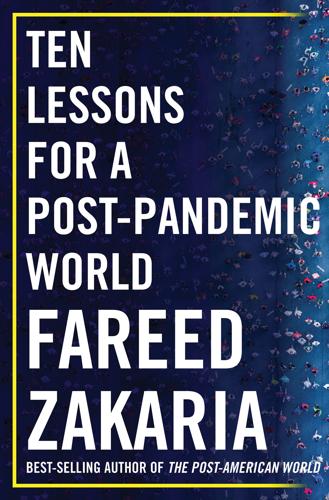
Ten Lessons for a Post-Pandemic World
by
Fareed Zakaria
Published 5 Oct 2020
Almost every important political, social, and economic movement began in a city. Even many of the most effective environmental groups were founded by city slickers—from the Sierra Club to Greenpeace. And it was in America’s cities that protesters gathered to demand policing reforms after the murder of George Floyd. Urbanization will continue apace in developing countries. In fact, by 2030, they will be home to some 80% of the world’s megacities. But in the developed world, urbanization has probably peaked. In the United States, the share of the urban population is currently 83%. It may creep up to 89% by 2050, but the share seems to be approaching a natural limit.
…
Most striking of all might be the emotional and psychological impact of this disparity: one-third of African Americans say they personally know someone who has died of Covid-19, compared to only 9% of Whites. Grief, despair, and growing awareness of the pandemic’s disproportionately harsh impact on Black America may have contributed to the upswell of activism after George Floyd’s killing. Racism’s contribution to inequality goes back centuries, but recent structural shifts are also fueling it. For one thing, the financial benefits of a college education have risen steadily as the economies of the industrial world become more digital and service-oriented. America has simply not found ways to move poor bright children up the educational ladder.

The Perfect Police State: An Undercover Odyssey Into China's Terrifying Surveillance Dystopia of the Future
by
Geoffrey Cain
Published 28 Jun 2021
Amazon wanted to measure the temperatures of its workers. Amazon didn’t appear to violate US sanctions. But the Bureau of Industry and Security warned that “transactions of any nature with listed entities carry a ‘red flag’ and recommends that U.S. companies proceed with caution with respect to such transactions.”16 [ ] George Floyd’s death in May 2020 ignited hundreds of police brutality protests in Minneapolis, Chicago, Portland, Washington, DC, and elsewhere during the summer. In the middle of a public debate about how technology could fight a pandemic, the controversy accelerated over how police might be using it. American technology giants faced a public backlash and government concerns that these technologies were prone to discriminate against minorities, and were being deployed for nefarious means.
…
Selam Gebredikan, “For Autocrats, and Others, Coronavirus Is a Chance to Grab Even More Power,” New York Times, March 30, 2020, https://www.nytimes.com/2020/03/30/world/europe/coronavirus-governments-power.html. 16. Krystal Hu, “Exclusive: Amazon Turns to Chinese Firms on U.S. Blacklist to Meet Thermal Camera Needs,” Reuters, April 29, 2020, https://www.reuters.com/article/us-health-coronavirus-amazon-com-cameras-idUSKBN22B1AL. 17. Sam Biddle, “Police Surveilled George Floyd Protests with Help from Twitter-Affiliated Startup Dataminr,” Intercept, July 9, 2020, https://theintercept.com/2020/07/09/twitter-dataminr-police-spy-surveillance-black-lives-matter-protests/. 18. IBM, “IBM CEO’s Letter to Congress on Racial Justice Reform,” June 8, 2020, https://www.ibm.com/blogs/policy/facial-recognition-sunset-racial-justice-reforms/. 19.

On the Edge: The Art of Risking Everything
by
Nate Silver
Published 12 Aug 2024
GO TO NOTE REFERENCE IN TEXT Clinton email scandal: Nate Silver, “The Real Story of 2016,” FiveThirtyEight, January 19, 2017, fivethirtyeight.com/features/the-real-story-of-2016. GO TO NOTE REFERENCE IN TEXT amid sometimes violent: Brakkton Booker et al., “Violence Erupts as Outrage over George Floyd’s Death Spills into a New Week,” NPR, June 1, 2020, sec. National, npr.org/2020/06/01/866472832/violence-escalates-as-protests-over-george-floyd-death-continue. GO TO NOTE REFERENCE IN TEXT over the murder: The police officer Derek Chauvin, who knelt on Floyd’s neck for nine minutes, asphyxiating him, was convicted of murder. Amy Forliti, Steve Karnowski, and Tammy Webber, “Chauvin Guilty of Murder and Manslaughter in Floyd’s Death,” AP News, April 21, 2021, apnews.com/article/derek-chauvin-trial-live-updates-04-20-2021-955a78df9a7a51835ad63afb8ce9b5c1.
…
Riverians think that partisan position taking often serves as a shortcut for the more nuanced and rigorous analysis that public intellectuals ought to engage in. They think these problems were particularly apparent during the COVID-19 pandemic and that the Village often adopted nakedly partisan positions—from endorsing public gatherings for the George Floyd protests after weeks of telling people to stay at home, to pushing to discourage Pfizer from making any announcement of the efficacy of its COVID-19 vaccine until after the 2020 presidential election—under the guise of scientific expertise. Riverians also think that Villagers are too conformist and not aware of the degree to which their views are influenced by confirmation bias and political and social fads within their communities.
…
Campaigns have hundreds of staffers and ultimately only one real test—election night—of how well they did, which is often determined by circumstances outside the campaign’s control. Relationships matter more than merit. So people get ahead by going with the program. Shor learned this the hard way. In 2020, amid sometimes violent protests over the murder of George Floyd, he was fired from his job at the Democratic data firm Civis Analytics. What was Shor’s crime? He’d sent out a tweet pointing toward an academic paper by a Princeton professor that found race riots had tended to reduce the Democratic share of the vote while peaceful protests increased it. In retrospect, it can be challenging to explain why Shor’s post caused such a stir.
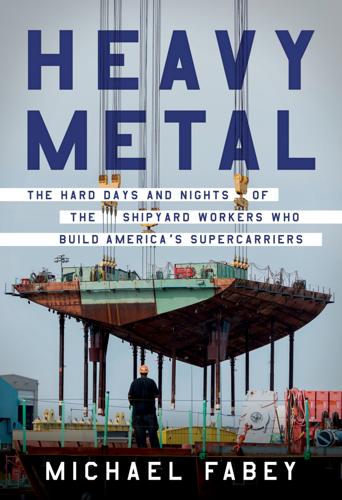
Heavy Metal: The Hard Days and Nights of the Shipyard Workers Who Build America's Supercarriers
by
Michael Fabey
Published 13 Jun 2022
Not only did Covid-19 change the way people went about their daily business, but the politics of the virus turned folks against one another in a way beyond partisanship—and how anyone could politicize an indiscriminate killer and crippler like this bug was beyond the understanding of most of the shipbuilders. Then, a White police officer in Minneapolis named Derek Chauvin knelt on the neck of a Black man named George Floyd for eight minutes and forty-six seconds on May 25 while Floyd lay handcuffed on the ground in custody, at least two minutes after he stopped breathing—all of this captured on iPhone video, which every media outlet in the country, if not the world, broadcast by that evening. After that, the world outside the shipyard gates seemed to shift into a whole new higher gear of crazy.
…
After that, the world outside the shipyard gates seemed to shift into a whole new higher gear of crazy. Around the country—and then the world—city streets erupted in protests led by Black Lives Matter, opposed by counterprotesters of self-appointed “militias.” Addressing the naval community through self-recorded video about the death of George Floyd and the subsequent unrest, CNO Admiral Michael Gilday on June 3 said, “We need to listen. We have Black Americans in our Navy and in our communities that are in deep pain right now. They are hurting. I’ve received e-mails, and I know it’s not a good situation. I know that for many of them, they may not have somebody to talk to.

Stakeholder Capitalism: A Global Economy That Works for Progress, People and Planet
by
Klaus Schwab
Published 7 Jan 2021
Indeed, “in March 2019 she pushed through a resolution that penalized educators who displayed racist behaviour towards Sheedi students,” the Shapers wrote,66 and “she is also leading a protest resolution in the provincial assembly against anti-Black racism in the US, in the wake of the killing of George Floyd.” It seems quite obvious that Qambrani's fight against Sheedi discrimination, together with various grassroots movements will be a long one, with ups and downs, given the systemic nature of the discrimination they face. But one important lesson is that hers and other struggles for social justice are accelerated when minorities or other advocacy groups get a seat at the table.
…
Representatives can help point to the issues minorities or other groups face and help establish credibility in their fight for justice. Reuters, the international press agency, for example, in June 2020 reported on the protest resolution Qambrani submitted in the Sindh parliament against a “wave of racism” after the killing of African American George Floyd in the US. Similarly, our Shapers wrote an article for the World Economic Forum's Internet Agenda, again hailing Qambrani as a community leader and drawing parallels between the Black Lives Matter fight for social justice in the US and that of the Sheedi in Pakistan. In both cases, Qambrani's status as MP helped establish the credibility of the article and with it, the cause it was about
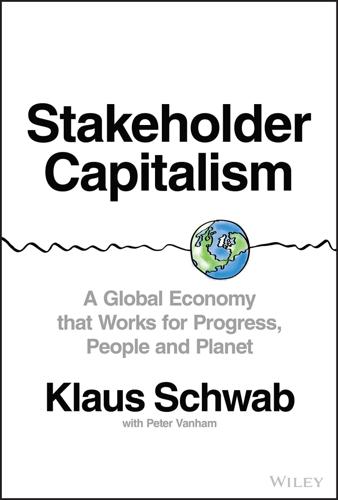
Stakeholder Capitalism: A Global Economy That Works for Progress, People and Planet
by
Klaus Schwab
and
Peter Vanham
Published 27 Jan 2021
Indeed, “in March 2019 she pushed through a resolution that penalized educators who displayed racist behaviour towards Sheedi students,” the Shapers wrote,66 and “she is also leading a protest resolution in the provincial assembly against anti-Black racism in the US, in the wake of the killing of George Floyd.” It seems quite obvious that Qambrani's fight against Sheedi discrimination, together with various grassroots movements will be a long one, with ups and downs, given the systemic nature of the discrimination they face. But one important lesson is that hers and other struggles for social justice are accelerated when minorities or other advocacy groups get a seat at the table.
…
Representatives can help point to the issues minorities or other groups face and help establish credibility in their fight for justice. Reuters, the international press agency, for example, in June 2020 reported on the protest resolution Qambrani submitted in the Sindh parliament against a “wave of racism” after the killing of African American George Floyd in the US. Similarly, our Shapers wrote an article for the World Economic Forum's Internet Agenda, again hailing Qambrani as a community leader and drawing parallels between the Black Lives Matter fight for social justice in the US and that of the Sheedi in Pakistan. In both cases, Qambrani's status as MP helped establish the credibility of the article and with it, the cause it was about
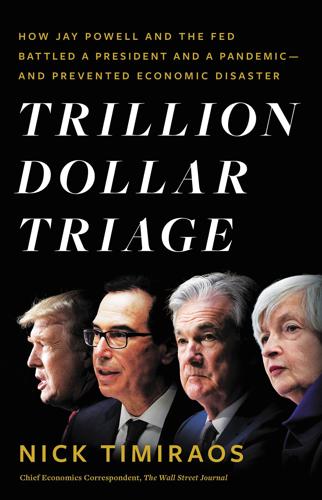
Trillion Dollar Triage: How Jay Powell and the Fed Battled a President and a Pandemic---And Prevented Economic Disaster
by
Nick Timiraos
Published 1 Mar 2022
“But we have a modern-day image of what 20 percent unemployment looks like. It looks like Englewood on the South Side of Chicago.” It was in this context that a third crisis boiled over: broad social unrest broke out after a white Minneapolis police officer was videoed pressing his knee on the neck of George Floyd, a Black man who pled for his life before dying. Floyd’s May 25 death, which a jury would rule a murder the next year, led to protests across the country. Some turned violent. The wrenching divisiveness of 2020 overshadowed a surprisingly good jobs report that came out on Friday, June 5. Employers had added a record 2.5 million jobs, defying economists’ predictions of 8 million additional job losses.
…
The unexpectedly early turnaround in hiring was the shot in the arm his reelection bid desperately needed. After the meeting broke up, the advisers joined Trump under the hot sun at a Rose Garden ceremony lasting nearly an hour, where the president addressed the myriad crises facing the country. At one point, he bizarrely invoked the deceased George Floyd. “Hopefully, George is looking down right now and saying, This is a great thing that’s happening for our country. This is a great day for him,” said Trump. “It’s a great day for everybody. This is a great, great day in terms of equality.” Date 2020 Covid-19 Cases Covid-19 Deaths Dow Jones Average VIX Fear Index Friday, June 5 1,895,109 105,128 27,111 (↑ 829) 24.52 (↓1.29) Back to the boardroom Four days later, on June 9, Powell sat down at the end of the massive table inside the Fed’s boardroom to open a two-day meeting of the Federal Open Market Committee.

Limitarianism: The Case Against Extreme Wealth
by
Ingrid Robeyns
Published 16 Jan 2024
Individual tragedy once again sparked international uprising following the death of George Floyd, an African-American man who was killed by Derek Chauvin, a white police officer, in Minneapolis in 2020. This horrible, racist murder sparked massive protests and saw the Black Lives Matter movement take root in countries all around the world. The movement has turned into such a political force that discussions about a society’s social contract are much more attuned to the question of racial justice. One of the people I interviewed, who advises US-based philanthropists, mentioned that the death of George Floyd and the rise of Black Lives Matter protests also opened the eyes of some philanthropists, who had not given much thought until then to the pronounced racial nature of wealth inequalities.
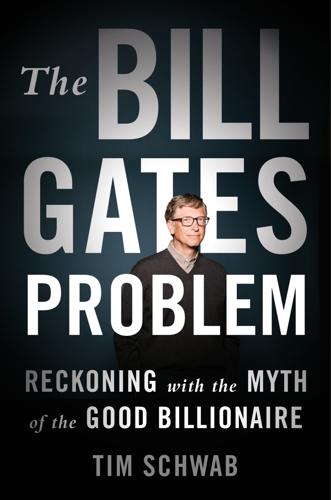
The Bill Gates Problem: Reckoning With the Myth of the Good Billionaire
by
Tim Schwab
Published 13 Nov 2023
McCoy identified: McCoy et al., “The Bill & Melinda Gates Foundation’s Grant-Making Programme for Global Health,” 1645–53. the racism he experienced: Daniel Kamanga, “I’ve Had Racism’s Weight of Knee on My Neck; Will George Floyd’s Death Give Me a Chance to Breath?,” LinkedIn, June 5, 2020, https://web.archive.org/web/20220104010414/https://www.linkedin.com/pulse/ive-had-racisms-weight-knee-my-neck-george-floyds-death-kamanga/. accusations of racist behavior: Das, Flitter, and Kulish, “A Culture of Fear at the Firm That Manages Bill Gates’s Fortune.” Lucica Ditiu: Apoorva Mandavilli, “A Global Health Star Under Fire,” New York Times, September 12, 2020, https://www.nytimes.com/2020/09/12/health/ditiu-stoptb-united-nations.html
…
Though institutional racism at the foundation remains virtually unexamined by researchers and reporters, in recent years, the foundation has nevertheless faced a growing body of public allegations. Daniel Kamanga, cofounder of Africa Harvest Biotech Foundation International—one of the Gates Foundation’s earliest and best-funded agricultural projects—penned an essay on LinkedIn about the murder of George Floyd by Minneapolis police officer Derek Chauvin, who knelt on Floyd’s neck until the life was taken from him. For Kamanga, the atrocity brought to mind the racism he experienced working with Western donors. “I felt the full weight of the knee of racism engaging with donor organizations. I almost couldn’t breathe during numerous engagements with the Bill and Melinda Gates Foundation.
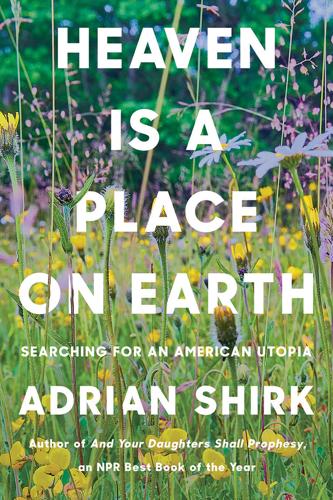
Heaven Is a Place on Earth: Searching for an American Utopia
by
Adrian Shirk
Published 15 Mar 2022
Sweeney would make regular trips down to the Bronx to run errands for him, and sometimes we’d go together, arriving home upstate ashen-faced and exhausted, and constantly feeling like we were awaiting his death. What does it matter to make something good, if it’s available to only a few? We were repeating the same sorts of structures that we’d decried. A suburb. A closed door. A pastoral exit. Then Breonna Taylor and George Floyd were murdered by the police, and the country rose up in protest. And because so many people didn’t have jobs at that moment, people made it their job to sustain the protest against police for as long as it would take. And maybe because so many people, some reluctantly, were finally watching the system they thought just might work reveal itself as the monster it always had been right in front of their eyes, this moment of emergency didn’t require that everyone protesting be on the same page, didn’t require that everyone have the same impetus and analysis, only the same enemy.
…
And when I say utopian thought, I guess, by this point, I just mean establishing modes of living that you think are alternatives to the death machine, for however long they last. Though “longevity has its place,” few things should ever last very long. In an essay by Keno Evol following the conviction of Derek Chauvin for George Floyd’s murder, which itself was immediately preceded by the police murder of Duante Wright, he says, “In organizing circles, one could say—and historians often do—that the history of the left is the history of failed utopias. To be a utopian thinker is to be one interested in the study of failure. The poet often has to say to the historian: There were friendships at that site of failure, at the rebellion that didn’t succeed.
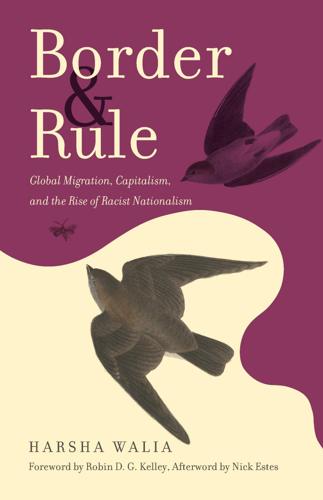
Border and Rule: Global Migration, Capitalism, and the Rise of Racist Nationalism
by
Harsha Walia
Published 9 Feb 2021
The consolidation of spatial carcerality through prisons and borders correlates with wealth concentration, dismantling of public services, and the simultaneous manufacturing and disciplining of surplus populations. Contemporary Black-led abolitionist uprisings in response to the cold-blooded police murders of George Floyd, Breonna Taylor, Ahmaud Arbery, and countless others expose the crisis of legitimacy for the state, capitalism, and carceral regimes. Police, prisons, and borders operate through a shared logic of immobilization, containing oppressed communities under racial capitalism. Notably, the word “mob,” a criminalizing vocabulary used to link large groups of poor, racialized people to social disorder, including in inner cities and at the border, derives from the word “mobility.”7 Even as explicitly racist prohibitions on people of certain races or national origins have been removed from most states’ immigration policies in an era of alleged “color blindness,” mobility continues to be restricted and contained along color, class, and caste lines.
…
The entanglements of border formation in imperial expansion, anti-Black enslavement, and Indigenous elimination are mirrored in our contemporary moment with border agents patrolling alongside the military in Iraq and Afghanistan, policing Black neighborhoods in the aftermath of Hurricane Katrina, repressing Indigenous water protectors at Standing Rock, and using counterinsurgency tactics, including the snatching of protestors in Portland in July 2020, to suppress uprisings across the US after the cold-blooded police murder of George Floyd. War veterans, in fact, comprise one-third of Border Patrol agents.80 This is not a coincidence; there is a homology to domestic and foreign conquest. The formation of the US–Mexico border and immigration as a race-making regime cannot be analyzed outside the reciprocal processes of empire building and genocidal violence.
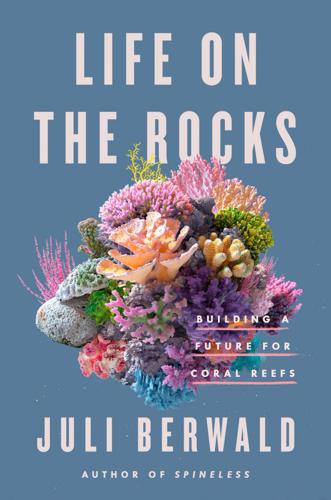
Life on the Rocks: Building a Future for Coral Reefs
by
Juli Berwald
Published 4 Apr 2022
Breonna had been up late playing video games, like I had so many nights, trying to ward off stress. But she didn’t have the chance to wake up and reach for her phone on her nightstand like I had. What made even less sense was that, despite its incomprehensibility, the story faded from the news. Seventy-three days later, George Floyd was murdered in Minnesota when a police officer kneeled on his neck for eight minutes and forty-six seconds. This time, in part because the heinousness was caught on video, the story did not fade from the news. It seemed that because we’d been in the relative quiet of quarantine, we were finally able to make room for this kind of story.
…
Protests broke out around the world in opposition to the systemic racism that results in Black Americans’ dying at the hands of police at twice the rate of white Americans. It’s the same systemic racism that results in the percentage of incarcerated Black people being almost three times higher than their percentage of the U.S. population. For Hispanic people, it’s almost one and a half times higher. The day George Floyd died, a white woman in New York’s Central Park called the police to report that a Black man was harassing her. He was simply out bird-watching. Twitter lit up in outrage. In response, a herpetologist helped create #BlackBirdersWeek. It went viral; thousands of Black people posted pictures of themselves out in nature, binoculars in hand.

Chokepoint Capitalism
by
Rebecca Giblin
and
Cory Doctorow
Published 26 Sep 2022
For social causes, like Black Lives Matter and #MeToo, which get less nuanced coverage than they need and deserve (this is exacerbated by fears around brand safety, which see advertisers increasingly sheer away from content deemed controversial—including by blocking their ads from being served on content that mentions terms like “Black Lives Matter,” “George Floyd,” and even “Black people”20). For the planet, with too few reporters to do justice to cataclysmic climate change, the biggest, slowest-moving story to ever break. And of course, for writers: not only by making it far harder for journalists to make a living, but by eviscerating a revenue source that once subsidized the birth of so many books.
…
While news co-ops have real potential to help journalism, we don’t think advertising should be the main funding source going forward. We alluded to its failures earlier—like the way brands, trying to avoid having their ads associated with “controversial” content, blocked terms like Black Lives Matter, protest, and anything involving queer and trans communities. A Vice investigation found news content relating to George Floyd’s death was monetized at a rate 57 percent lower than other news.9 In this environment, anodyne content pays much more than reportage on vital social issues, making the latter even harder to sustain. Subscriptions can’t provide the whole answer either. As Current Affairs editor Nathan Robinson has pointed out, paywalls have been inadvertently contributing to the fake news epidemic: “The truth is paywalled but the lies are free.”10 One alternative is to squeeze news funding out of the platforms themselves.
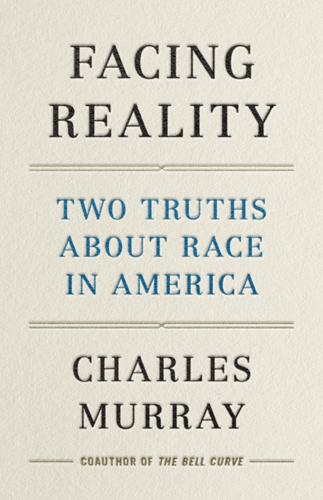
Facing Reality: Two Truths About Race in America
by
Charles Murray
Published 14 Jun 2021
By the end of the year it was clear that identity politics had become the consensus ideology of the left wing of the Democratic Party, not just the most extreme elements. Some of the Democratic candidates openly embraced identity politics. Others were more moderate and probably harbored reservations, but no major candidate for the nomination challenged identity politics aggressively. When the protests and riots over the death of George Floyd erupted in the summer of 2020, identity politics demonstrated how far it had spread and how much influence it wielded not only over the Democratic Party and academia, but over corporate America too, as famous companies scrambled to condemn their own White privilege and promised to make amends.
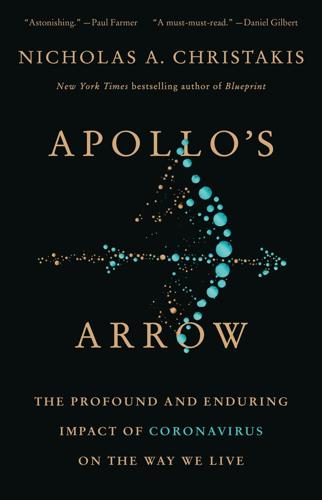
Apollo's Arrow: The Profound and Enduring Impact of Coronavirus on the Way We Live
by
Nicholas A. Christakis
Published 27 Oct 2020
And just as we saw that fear might offer some upside to pandemic response, I suppose denial might also offer some advantages—for instance, by allowing people to go about their lives despite the threat.61 A similar sort of wishful thinking emerged during the profound protests after the brutal murder of George Floyd in Minneapolis on May 25, 2020. The forty-six-year-old black man was already handcuffed and on the ground when a police officer knelt on his neck until he died. This, coming on the heels of many similar cases, led to massive protests erupting around the nation.62 In large part, these were due to pent-up anger about racial inequality, but the high levels of unemployment, the long periods people had been cooped up at home, the emotionally demanding experiences (including deaths of loved ones) that many people had suffered, and the disillusionment with the president all surely facilitated the protests.
…
Segalov, “‘The Parallels between Coronavirus and Climate Crisis Are Obvious,’” The Guardian, May 4, 2020. 60 J. Bert, A Historical Relation of the Plague at Marseille in the Year 1720, trans. Anne Plumptre, London: Billingsley, 1721. 61 D.D.P. Johnson and J.H. Fowler, “The Evolution of Overconfidence,” Nature 2011; 477: 317–320. 62 D.B. Taylor, “George Floyd Protests: A Timeline,” New York Times, July 10, 2020; W. Lowery, “Why Minneapolis Was the Breaking Point,” The Atlantic, June 12, 2020. 63 D. Diamond, “Suddenly, Public Health Officials Say Social Justice Matters More Than Social Distance,” Politico, June 4, 2020. 64 M. Bebinger et al., “New Coronavirus Hot Spots Emerge across South and in California, As Northeast Slows,” NPR, June 5, 2020. 65S.
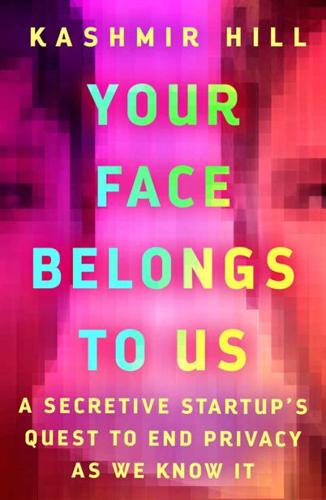
Your Face Belongs to Us: A Secretive Startup's Quest to End Privacy as We Know It
by
Kashmir Hill
Published 19 Sep 2023
If Hoan Ton-That had created a facial recognition app for use on police officers to hold them accountable and the government didn’t like it, the ACLU might have defended his First Amendment right to create and distribute such an app. A scenario like that arose in Oregon right around the same time. Portland, like many other American cities that summer, was the site of frequent protests following the police killing of a Black man named George Floyd. Police patrolling protests that were about them created volatile situations that sometimes turned violent. Some officers began hiding their badge numbers to make it harder to identify them, ostensibly for their own safety. After being tear-gassed at a protest, a self-taught coder named Christopher Howell resolved to create a face recognition database to identify these police officers, using a Google tool called TensorFlow.[*3] But when the Portland City Council passed a law soon afterward prohibiting police, corporations, and private entities from using facial recognition technology to identify unknown people, Howell got worried that what he was doing was illegal.
…
We could set these cameras up on every road and automatically ticket each and every aggressive driver, but we have chosen not to, even if it results in more accidents on the roads. It wasn’t just activists pushing for regulations; even technology companies began asking for them. Faced with public unease about face tracking, the concerns of academics about racial disparities in the technology’s deployment, and protests against police power following George Floyd’s death, IBM, Amazon, and Microsoft, which all offered computer vision enterprise products, announced that they would not sell their face recognition algorithms to U.S. law enforcement agencies until the government came up with rules for ethical use. Microsoft president Brad Smith said the pressure is building around facial recognition technology, and that relevant laws will need to be passed.

Rationality: What It Is, Why It Seems Scarce, Why It Matters
by
Steven Pinker
Published 14 Oct 2021
Yet 9/11 led to the creation of a new federal department, massive surveillance of citizens and hardening of public facilities, and two wars which killed more than twice as many Americans as the number who died in 2001, together with hundreds of thousands of Iraqis and Afghans.24 To take another low-death/high-fear hazard, rampage killings in American schools claim around 35 victims a year, compared with about 16,000 routine police-blotter homicides.25 Yet American schools have implemented billions of dollars of dubious safety measures, like installing bulletproof whiteboards and arming teachers with pepperball guns, while traumatizing children with terrifying active-shooter drills. In 2020 the brutal murder of George Floyd, an unarmed African American man, by a white police officer led to massive protests and the sudden adoption of a radical academic doctrine, Critical Race Theory, by universities, newspapers, and corporations. These upheavals were driven by the impression that African Americans are at serious risk of being killed by the police.
…
Schelling 1960, p. 90; see also Tooby, Cosmides, & Price 2006. Pearl Harbor and 9/11 as public outrages: Mueller 2006. 28. Chwe 2001; De Freitas, Thomas, et al. 2019; Schelling 1960. 29. Baumeister, Stillwell, & Wotman 1990. 30. Hostility to data on public outrages: Pearl Harbor and 9/11, Mueller 2006; George Floyd killing, Blackwell 2020. 31. Made popular by the Obama chief of staff Rahm Emanuel, but first used by the anthropologist Luther Gerlach. Thanks to Fred Shapiro, editor of The Yale Book of Quotations. 32. For an extended argument of this kind regarding terrorism, see Mueller 2006. 33. https://twitter.com/MaxCRoser/status/919921745464905728?
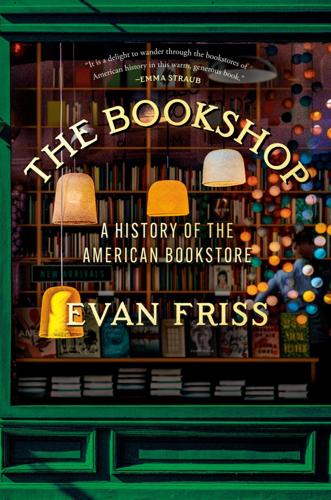
The Bookshop: A History of the American Bookstore
by
Evan Friss
Published 5 Aug 2024
When COVID-19 came in the spring of 2020, it sent Marcus Books reeling. Friends donated tens of thousands of dollars to save the store, contributions to keep a for-profit business alive. Just as things seemed bleakest, sales at Marcus and other Black-owned bookstores skyrocketed. In May, a white Minneapolis police officer murdered George Floyd, and interest in books about race and racism soared. Carts and tables with “antiracist” texts were set up at independents across the country. Antiracist syllabi encouraged Americans to educate themselves by reading books like White Fragility and How to Be an Antiracist, as well as those written by celebrated contemporary Black authors like Ta-Nehisi Coates (whose father owned a Black bookstore in Baltimore) and Colson Whitehead—and to buy them at Black-owned bookstores.
…
See also The Strand Bass, Fred, 141–44, 146, 149, 150–51, 153–54, 260 Beach, Sylvia, 104, 117 Beat literature, 118–19 Beattie, Ann, 147 Beckett, Samuel, 123 beer, 35 Bel Canto Books, 301 Belfer, Jhoanna, 301 Bellow, Saul, 123, 146–47 Bender’s bookstore, 131 Benét, William Rose, 67, 117 Bercu, Steve, 248 bestsellers, 31, 256, 259, 275, 301 Bezos, Jeff, 268, 273–78, 280, 284 biblichor, 35 bibliosmia, 34 Biblo, Jack, 136–37, 138, 139 Biblo & Tannen, 136–37 Birchbark Books & Native Arts, 297 birth of modern American bookstore, 38 Bishop, Elizabeth, 116, 117 Black bookstores and booksellers Anti-Slavery Book Store, 211 on Book Row, 212 closures of, 223 customers of, 222, 223 and George Floyd’s murder, 223 Hoover on rise of “extremist,” 213 Liberation Bookstore, 212 Marcus Books, 222–23 Michaux’s (National Memorial African Bookstore), 210–11, 211, 213, 222–23 number of, 212, 223 promotion of, 224 Sixth Avenue sidewalk booksellers, 256–57 Solid State Books, 282, 301 and Spearman’s Tattered Cover, 224 See also Drum & Spear Black consumers, 80 Black Lives Matter, 306 Black Power, 227 Bloomingdale’s, 95 Blume, Judy, 298 book binding, 38, 47, 48, 138 Book Caravan, 69–70 book fairs/festivals, 84, 92 Book Mark’et, 307 Book Row in New York about, 129 Black bookstore on, 212 Book Row Gang, 136 bookstalls on, 134, 139 collegial/cooperative spirit among booksellers, 135, 139–40, 140 decline of, 142, 149 and discounting practices of stores, 133 disdain for contemporary fiction, 138 emergence of, 130–31 erotica/smut sold on, 136–37 expertise of booksellers on, 134 and financial challenges, 140–41 and Fourth Avenue Booksellers’ Association, 139–41, 142–43 and Fourth Avenue street signs, 142 origin of term, 132 popularity of, 133–34 range of shops on, 133 scouts working on, 135 Steloff’s work for Schulte on, 101 stock acquired for, 133–34 stolen merchandise in, 135–36 and the Strand, 141, 155 The Book That Changed My Life (Coady and Johannessen, eds.), 181 Bookmasters, 234–35 bookmobiles, 64, 71, 299 Book-of-the-Month-Club, 91, 114, 149 BookPeople, 248 Books & Books, 204–5, 247, 298 Books & Co., 148, 239–40 Books Are Magic, 267, 268, 298, 310 Books ’N Things, 142 Books of Wonder, 310 Books-A-Million, 290, 291 Booksellers’ Code, 168–69 Booksellers’ League of New York, 139 bookshop.org, 305 bookshops (term), 1, 29 #Bookstagram, 267 bookstore (term), 1, 15, 29 Bookstore Training Group, 284 “book-tasting,” 43 Bookworm Express, 69 Borders and Amazon, 280 bankruptcy of, 244 book lights of, 243 book sales of, 240 and BookPeople, 248 closures of, 290, 296, 299 and independent bookstores’ struggles, 228 origins of, 237 and publishers, 238 Borges, Jorge Luis, 205 Boston, Massachusetts bookstores in colonial, 17–19, 30 cluster of book trade companies in, 38, 39 first known image of bookstore in, 29 and Franklin, 19 number of bookstores in, 53 and Revolutionary War, 30 sidewalk booksellers in, 252 in summertime, 48 See also Old Corner Bookstore Boswell Book Company, 292 bouquinistes, 250–51 #BoxedOut campaign, 281–82, 282 Boyd, Helen, 69, 70 Brentano’s bookstore, 78, 91, 101, 229–30, 232, 234, 237 Breton, André, 108, 109 Brinster, Kim, 202 Britton, Burt, 144–49, 146, 239–40 Britton, Korby, 146 Brown, Andreas “Andy,” 121–24, 147 Brown, H.

Fulfillment: Winning and Losing in One-Click America
by
Alec MacGillis
Published 16 Mar 2021
The news organizations that had already lost the majority of their advertising revenue to Silicon Valley were now losing what little remained as a result of the halt in commerce—to try to survive, many furloughed their entire newsrooms, on rotating shifts, leaving them understaffed to cover first one huge story, the pandemic, and then another, the protests over George Floyd’s death at the hands of a police officer in Minneapolis. By August, things had grown so dire that one chain of papers, Tribune, announced it was shuttering its physical newsrooms for good at, among others, The New York Daily News, Orlando Sentinel, and Allentown Morning Call, the newspaper that had broken the 2011 story about workers passing out from heat exhaustion at the local Amazon warehouse.
…
But then they adapted: Pencil Cup saw an unmet demand and started delivering janitorial and sanitation supplies to all the businesses and families encountering empty shelves in stores and price-gouging online. In Seattle, Katie Wilson and the other members of the Transit Riders Union were taking part in some of the city’s protests over George Floyd’s death, which eventually led to the creation of an “autonomous zone,” decreed to be free of police officers, in the heart of Capitol Hill, the hipster neighborhood near downtown. The protests stirred Katie’s activist spirit, but she had suffered too much disappointment at the hands of powerful opponents to get her hopes up.

Like, Comment, Subscribe: Inside YouTube's Chaotic Rise to World Domination
by
Mark Bergen
Published 5 Sep 2022
But as the year progressed, the company had to reckon with this question again. When it did, those affected by the answer, as usual, found it capricious and unfair. Others felt it came far too late. * * * • • • America’s tense summer began when a Minneapolis police officer knelt on George Floyd’s neck and took his life, igniting the nation’s largest mass protests since Vietnam. YouTube attempted to rise to the occasion. It put “Black Lives Matter” on its home page and managers spoke to the historic moment. (Sometimes clumsily: in one company meeting about the protests a white executive recruited to lead Trust and Safety told staff that he loved John Legend and that one of his groomsmen was Black.)
…
She devoured YouTube’s full madness, its stuff that “no gatekeeper would ever permit,” she said. “I loved that.” In 2020 one of YouTube’s most chaotic stars surprised everyone with a political gesture. Early in June, Logan Paul uploaded footage of his podcast Impaulsive on YouTube; since his debacle in Japan, the Gen-Z Adonis had added podcasting and boxing to his YouTube repertoire. George Floyd had just been murdered. Paul titled this video “America Is Racist” and went straight to his point: “I’m embarrassed that it has taken me twenty-five years to realize this: it is not enough to be ‘not racist.’ You have to be antiracist.” Paul read off a script but delivered his lines passionately.
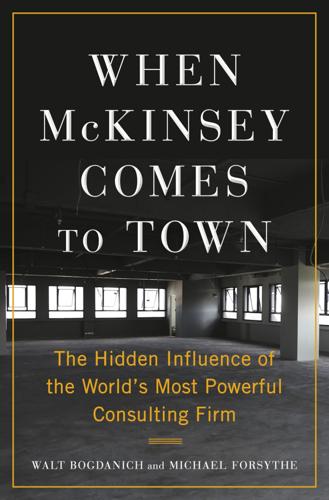
When McKinsey Comes to Town: The Hidden Influence of the World's Most Powerful Consulting Firm
by
Walt Bogdanich
and
Michael Forsythe
Published 3 Oct 2022
McKinsey didn’t take out ads or sign any letters in support of the Hong Kong demonstrators, and likewise raised no public objections when Beijing extinguished Hong Kong’s democracy movement, and with it the city’s civil liberties, with a draconian new national security law. In contrast, when massive protests erupted across the United States after the murder of George Floyd, McKinsey was quick to ally itself with the cause. The firm was among the signatories of a full-page ad in The New York Times dedicated to Floyd’s memory. Sneader’s name appeared under the company’s logo. It was an inconsistency not lost on a young McKinsey associate in the United States who had spent time in China.
…
See also specific companies Mandela, Nelson, 224, 225 Manfred, Rob, 219–21 Mango, Paul, 65–66 Manners, Michael, 192, 194 Manufacturing Jobs Initiative, 8 Mao Zedong, 92, 100, 104 Market Unbound (Farrell), 186 Markovits, Daniel, 38 Marks, Peter, 68–69 Marlboro cigarettes, 114, 120 Marshall Field’s, 34 Massachusetts, 148 Massachusetts General Hospital, 123 Massachusetts Institute of Technology (MIT), 211 Masters, Adrian, 267 Masters of the Universe (documentary), 261 maternal mortality rates, 259 matrix management, 175–79 Mayer Brown law firm, 184 McCall, Billy, 6, 7–9 McCollom, James P., 177, 179 McDonald, Duff, 19, 38–39, 209 McDonald’s, 98 McKinsey, James O., 3–4, 19, 34, 174 McKinsey & Company Abdulaziz suit vs., 255–56 ACA and, 62–65 accountability and, 16, 25, 28, 236–41, 277 addictive products and, 129, 278 Al-Elm Information Security and, 256–57 Allstate and, 192–203, 212 alumni network, 17–18, 22, 38, 93, 161, 272 Alzheimer’s drug approval and, 67–68 Aramco and, 243–44, 247–48 Arkansas Medicaid program and, 57, 60–62 Aspen Ideas Festival and, 149–51, 153–55 AT&T and, 48–49 at-risk contracts and, 232–34 Australian Green Team and, 159 autocratic states and, 25–28, 74, 108–9, 279 China, 92–109, 257 Russia, 108, 257 Saudi Arabia, 108, 243–57 Ukraine, 257, 279 auto industry and, 29, 32–33, 37 auto insurance and, 191–94 auto loans and, 172, 182, 182–84 Azar as HHS and, 146–47 banks as clients and, 172–89 matrix management, 175–79 securitization of credit, 182–89 BCG as rival of, 246, 248–49 Belt and Road strategy and, 101–3 Britain and Chairman’s Dinners, 262 “clubbable” consultants, 260–61, 275 Health and Social Care Act, 271–74 manufacturers in, 261–62 NHS cost-cutting, 259, 262, 264–75, 280 rail privatization, 263–65 steel privatization, 261 Budlender report and, 236–38 Buttigieg as consultant for, 26–27, 76 campaign contributions and, 65–66 carbon emissions and messaging by, 150–55, 159, 161–62, 164–70 CBP and, 83, 87 Centene purchase of AT Medics and, 274 Center for Drug Evaluation and Research and, 141–42, 145–46 Center for Societal Benefit Through Healthcare created by, 144 Chase as client of, 177–78, 180 Chevron and, 163 China and, 26, 46, 91–109, 165–66, 257, 279 consultants and, 95–103 financial crisis of 2007–10 and, 189 Muslim Uyghur detentions and, 105–6 SOEs and, 26, 91–93, 96–102, 107–8 Chinese copycat of, 99 client and billing lists and, 55, 107–8, 162–63, 168, 278, 280 client interests and, 18–19, 22, 24–25 clients and regulators both represented by, 22–23 clients competing in same market and, 22–23, 278, 281 client selection democracy index, 108–9 harms and, 25–28, 30–31, 143, 154, 161, 278 new oversight of 2019, 257 public-sector work, 242 values of, 18, 23–31, 108–9, 161–62 climate change and, 150–55, 166–69 CMS contract and, 70 coal-mining clients of, 28, 156–58, 160–69 companies acquired by, 30 compensation system of, 180–81 confidentiality and, 18, 22–23, 25, 28–29, 59, 66–67, 69–70, 83–84, 107–8, 168–69, 239, 278, 281 conflicts of interest and, 22, 35, 55–56, 59, 61–62, 66, 68, 74, 120, 123–29, 145–46, 238, 272, 278, 281 consultants advancement by, 21–22, 28, 38, 160 ability to do good, 20–21, 25 ability to opt out on ethical grounds, 28, 78, 158–60 China-based, 95–98, 103, 108 earnings and investments by, 180 number of, 22, 30–31 “on the beach” status, 22, 158–60 recruitment and training, 17, 19–22, 25, 28–31, 152–53, 161–63, 167, 249 up-or-out policy and, 38, 207 consultants’ dissent and, 24–28, 31, 278 disallowed in Saudi Arabia, 249–50 Edstrom, 160–62, 167 Elfenbein, 83–85, 88–90 ICE revelations and, 76–79, 83–90 Naveed, 169–70 opioid work and, 148 polluting clients and, 155–63, 167–70 Continental Illinois collapse and, 177–80, 186 corporate downsizing and, 33, 36–39 COVID-19 and, 71–73, 274–75 data analytics and, 204–22 athlete injury prediction, 210–12 Houston Astros, 204–6, 212–22 prescriptions, 130–31, 139–40 Davos and, 149–50 Disneyland and, 9–16, 281 Earth Day and, 168 Elixir bought by, 249–50 employee layoffs by clients of, 27–29, 34, 37–41, 44–46, 48–49 Enron and, 25, 42, 173, 187, 190, 204–9 environmentally focused work of, 152, 158–61, 165, 170 Eskom and Trillian and, 231–37, 239–42 executive compensation vs. worker wages and, 32–35, 41–43, 50, 180–81, 194, 198 FARA filings and, 246 FDA as client of, 22, 66–70, 145–46, 281 cigarettes and, 73, 120–22 contracts awarded 2008–2021, 145–46 e-cigarettes and vaping, 122–29 fees, 66, 68, 120, 145–46 no-bid contracts, 69–70 opioids and, 132, 134, 137, 141–42, 144–47, 280 pharmaceutical clients and, 22, 66–69, 141, 145–47, 281 federal contracts COVID-19, 71–73 GSA, 69–70 health-care industry, 65–72 ICE, 74–90 Federal Reserve report on, 186 financial industry and, 171–90 deregulation, 171–74 financial crisis of 2008–10 and, 173–74, 176–77, 188–90, 265 Financial Institutions Group, 180 financialization and, 180, 194, 196–97 foreign governments as clients of, 18 Britain, 258–75 corruption and, 25–28, 279 secrecy and, 239 Saudi Arabia, 108, 243–57, 279–80 South Africa, 223–42 fossil fuel companies and, 26, 156–59, 162–64, 166, 168 founding of, 3–4, 19, 159 Gary, Indiana, and, 1–9 George Floyd protests and, 107 globalization and, 41, 43, 189 Global Energy and Materials team, 166 global reach of, 18, 20, 39, 43, 94, 97, 189–90 GM and, 32–33, 37, 260 gold-mining clients of, 162 greenwashing and, 162, 165, 169 GSA on federal contracts with, 69–71 health-care benefits by clients of, 45–47 health-care industry clients of, 61–66, 148, 280 ACA and, 62–65 Centene, 274 NHS overhaul and, 259, 262, 264–75 state and federal clients and, 51–73, 280 home mortgage lending and, 181–82, 187–89 homeowners’ insurance, 194, 199–200 human rights and, 31, 99–101, 104–7 Chinese Uyghurs, 100, 104–6, 160 Hong Kong protests, 106–7 Moscow protests, 31 ICE and, 26, 74–90, 279 Illinois Medicaid program and, 51–57, 61 inequality and, 27–28, 32–50, 147–48, 278 influence and status of, 17–23, 28, 30, 64, 199, 278 insurance claims payouts and, 180, 191–203 Interior Department contract and, 70 job security and loyalty downplayed by, 37–38, 44–45 Johnson & Johnson as client of, 133–35 Juul as client of, 123–29 Khashoggi murder and, 253–54, 256–57 Made in China 2025 and, 102–3 maintenance cuts advised by, 1–16, 264, 280–81 Malaysia and, 26, 102 management philosophy and, 2–3, 17–18 shift to strategic planning, 36–37 management structure and style of, 26, 121, 278 managing partners Barton, 63, 86, 99, 101–2, 106, 165, 238, 241, 257, 272 Bower, 19, 32–33 Daniel, 98, 181 Davis, 98, 241, 249 Gupta, 39, 206 Sneader, 29–31, 74–75, 86, 90, 106–7, 143, 168, 239, 241, 254, 255, 257 Strenfels, 127–30, 168–70 Marshall Field’s and, 34 Massachusetts future of work study and, 148 matrix management and, 175–79, 260 media exposés of, 23, 25–28, 74–76, 79–85, 107–8, 133, 146, 148, 168–69, 257 Missouri Medicaid program and, 57–61 MLB review by, 221 Monitor as client of, 266–69 multinationals and, 95–96, 98–99 New York City contracts and, 225 New York Knicks and, 211 NOAA contract and, 70 nondisclosure agreements and, 27, 278 oil and gas companies and, 155–58, 162–64, 166 Aramco, 156, 243–44, 248 BP, 164 Chevron, 163–64 China and, 99 Enron and, 206–9 ExxonMobil, 20, 156–57, 163 Gazprom, 163, 257 PDVSA, 156 Pemex, 156 Royal Dutch Shell, 156, 163, 260–61 Texaco, 156–57 outsourcing and offshoring and, 33, 39–46, 49–50 partners compensation of, 18, 135 election of, 22 number of, 30 Peters’s critique of, 27–28, 36–37, 179 pharmaceutical companies and, 20, 22, 73, 281 FDA and, 66–69 opioids and, 26–27, 74, 109, 130–48, 280 opioid settlement and, 143, 148 polluters as clients of, 162, 164–70, 278 profit maximization and, 35–39, 198 public scrutiny of, 25–28, 74, 107, 148, 277–78 public-sector practice begun, 94 Purdue Pharma and, 109, 131–45, 148, 280 QuantumBlack bought by, 210–12 Railtrack maintenance and, 263–64 revenues and profits of, 24, 242, 257 Rice as consultant for, 224 Russia and, 26, 31, 108, 257 Saudi Arabia and, 108, 243–57, 279–80 consultants hired in, 248 ministries as clients of, 243–45, 249–51, 256 NEOM project and, 247, 256 purge of 2017 and, 250 sentiment analysis and, 251–57 “Saudi Arabia Beyond Oil” report and, 247–48 Saudi Center for International Strategic Partnerships and, 247 Seafirst and, 177–78, 180 secrecy and, 18, 25, 27, 54–58, 107, 111–12, 120, 136, 162, 168, 256–57, 277–78 securitization of credit and, 172 Enron and, 187, 207–9 financial crisis and, 188–90 launched by Bryan, 182–87, 189–90 Shanghai urban planning and, 99 shareholder profits and stock prices and, 24, 27–28, 36, 38–39, 42–43, 49–50, 198 shell companies and, 18 smart cities and, 103–4 South Africa and, 26, 30, 74, 223–42, 250, 257, 279–80 state capture investigations and, 236–42 South African Airways and Regiments and, 239–40 sovereign wealth funds and, 18, 165, 257 sports and, 209–22 steel industry and British, 261 coking coal and, 164–66 maintenance and safety in, 1–9, 280–81 U.S. steel, 1–10, 16, 280–81 St.

Born in Flames
by
Bench Ansfield
Published 15 Aug 2025
These claims reached a crescendo amid heavy losses from the 1992 Los Angeles uprising, after the acquittal of four police officers in the beating of Rodney King, then again during the 1995 settlement of an NAACP anti-discrimination suit brought on behalf of Black homeowners in Milwaukee. Such periodic bursts of activism and visibility notwithstanding, the long campaign against insurance redlining has remained, in the words of one scholar and activist, “the ugly duckling of the fair housing movement.”63 After the killing of George Floyd by Minneapolis police in the late spring of 2020, calls to end redlining practices again echoed—however faintly—across the insurance world. Lloyd’s of London, for its part, took the occasion to officially apologize for its “shameful” role underwriting the transatlantic slave trade. The insurance behemoth made no mention of reparations, or of its more recent triangular trade in risk brought to light by the Sasse scandal.
…
As of this writing, FAIR plans are the largest providers of property insurance in numerous states, and their share of policyholders is expanding at a rapid clip, rising 29 percent nationally between 2018 and 2021. What drives their recent growth? It would be easy, though mistaken, to point to the 2020 George Floyd uprisings. Though the rebellion resulted in an unprecedented $2 billion in insurable losses in the U.S.—far higher than the cumulative damages from the 1960s uprisings—the property insurance industry did not lean heavily on the FAIR plans to manage the financial fallout, as it had decades earlier.

Waging a Good War: A Military History of the Civil Rights Movement, 1954-1968
by
Thomas E. Ricks
Published 3 Oct 2022
Then came more deaths: Michael Brown in Ferguson, Missouri; Eric Garner in New York City; and Tamir Rice in Cleveland, Ohio, all three in 2014. Freddie Gray in Baltimore, Maryland, and Jeremy McDole in Wilmington, Delaware, both in 2015. Philando Castile in St. Anthony, Minnesota, in 2016. Emantic Bradford, Jr., in Hoover, Alabama, in 2018. Breonna Taylor in Louisville, Kentucky; George Floyd in Minneapolis, Minnesota; Rayshard Brooks in Atlanta, Georgia; Daniel Prude in Rochester, New York; and Jonathan Price in Wolfe City, Texas, all five in 2020. Dominique Williams and James Johnson in Takoma Park, Maryland, and Daunte Wright in Brooklyn Center, Minnesota, all in 2021. A poll conducted in April 2021 showed that two-thirds of white Americans approve of how police operate; two-thirds of Black Americans do not.
…
“Activists picked places like Birmingham and Selma because there were these police chiefs with a hair trigger for violence who would engage in brutal repression in front of cameras,” he observes. “That would shock the conscience of these otherwise indifferent or even hostile actors outside the South. It changed public opinion.” So, he continues, “If you’re an activist on the ground thinking about and angry about this injustice against George Floyd and a long history of police violence in this country against African Americans, if you want to put that at the center of the national conversation, it’s important to be thinking about this: Is what we are doing on the ground elevating the justice frame or elevating the riots frame?” Having the discipline to emphasize justice, Wasow says, expands the base of support, while violence tends to drive away the wavering.
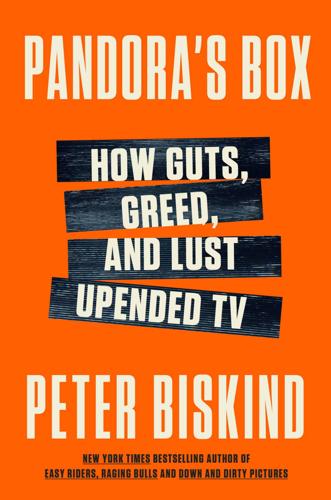
Pandora's Box: How Guts, Guile, and Greed Upended TV
by
Peter Biskind
Published 6 Nov 2023
Yost doesn’t like to think of Raylan as a good-bad guy, but as a genuine hero who just does things his own way. He admits, however, that he “did kill a lot of people. We were going to do a virtual Zoom panel about Justified for the Austin Television Festival in 2020,” he recalls, “and we decided to cancel it because it was right after George Floyd was killed. The guy who was going to moderate it asked, ‘Would you do a show about a law enforcement officer who takes the law into his own hands, now? What would be different?’ We just decided it’d be better not to do the panel because there was just no answer we could give, except to say, ‘Fuck no, we wouldn’t do it the same way.’”33 If any of the characters heralded the coming of Donald Trump, it was Boyd Crowder, says Yost, in that “he was a liar who lied to himself, lied to everyone around him, but had a certain charm and could behave badly without ever losing the audience.”34 He is played by Walton Goggins, aka Shane Vendrell in The Shield.
…
It was all safely nested within the protective conventions of a prison drama that allowed—nay, demanded—all those goodies that audiences expected from that genre: violence, rape, beatings, stabbings, murder, and, last but not least, black humor. Female prisoners, no matter what they looked like, had permission to be funny. For all Kohan’s dismissal of political correctness, Orange is steeped in contemporary, real-world conflict. In 2016, two years after Eric Garner died in a choke hold and four years before the death of George Floyd, Kohan devoted Season 4 to Black Lives Matter. Fan favorite Poussey Washington (Samira Wiley), a tiny Black woman, is crushed to death by a large white male guard who places his knee on her back. Still, in Kohan’s universe, character and the integrity of the story—that is, entertainment—come first, not issues.

The Land of Hope and Fear: Israel's Battle for Its Inner Soul
by
Isabel Kershner
Published 16 May 2023
Assigned to the Israeli embassy in London, he had represented Israel and was noted for his battles against the pro-Palestinian international boycott movement. Yet back in Jerusalem, he made the newspapers after he was pinned to the ground by irate guards at the Central Bus Station. They said he had provoked them by filming them on his phone after he was asked to undergo a security check. The incident occurred three weeks after the killing of George Floyd by police in Minneapolis, prompting the “I can’t breathe” protests. In a complaint to the police, Khaldi said the officers had knelt on his back and neck. “I screamed that I was choking and that I couldn’t breathe,” he said. In his case there was a happy ending. His superiors backed him up and soon after the incident Khaldi was appointed Israel’s first-ever Bedouin ambassador and posted to Eritrea.
…
They said they were just trying to get away after the officer began harassing them. Whatever the exact circumstances, Tekah’s supporters noted, an armed Israeli police officer would have been far less likely to feel “threatened” enough to open fire in a residential area had the youths in question not been dark-skinned. The killing occurred just weeks after George Floyd took his last breaths in Minneapolis, setting off a wave of protests that convulsed America. In Israel, the community’s resentment had only grown and erupted with a new level of pent-up fury. Tekah’s death sparked days of rioting by Israelis of Ethiopian descent across Israel. Rush-hour traffic was paralyzed for hours; police vehicles were overturned and set alight.

There Is No Place for Us: Working and Homeless in America
by
Brian Goldstone
Published 25 Mar 2025
We Are Hurt! Please Stop, was spray-painted across the wood. A digital billboard read: City of Atlanta Curfew Continues. 9PM to Sunrise. Across the country, in more than 140 cities large and small, the streets had exploded in recent days. The demonstrations following the gruesome murder of George Floyd at the hands of Minneapolis police were stunning in their breadth and scale and ferocity. People were protesting not only decades of racist and unrestrained police violence but the degradations and disparities that, for many Black Americans, had come to define everyday life. Minneapolis’s Third Precinct police station went up in flames, luxury stores in New York and Chicago and LA were pillaged and vandalized, and in Fayetteville, North Carolina, Floyd’s place of birth, crowds set fire to the historic Market House, where enslaved people had been bought and sold.
…
GO TO NOTE REFERENCE IN TEXT State leaders deployed: Anita Snow, “AP Tally: Arrests at Widespread US Protests Hit 10,000,” Associated Press, June 4, 2020. GO TO NOTE REFERENCE IN TEXT What got her were his words: Eric Levenson, “How Minneapolis Police First Described the Murder of George Floyd, and What We Know Now,” CNN, April 21, 2021. GO TO NOTE REFERENCE IN TEXT And then, three days earlier: Shelia M. Poole, “Pence Joins Others in Paying Tribute to Evangelist Ravi Zacharias,” The Atlanta Journal-Constitution, May 29, 2020. GO TO NOTE REFERENCE IN TEXT a galvanizing report: “Beltlining: Gentrification, Broken Promises, and Hope on Atlanta’s Southside,” Housing Justice League and Research Action Cooperative, October 2017.
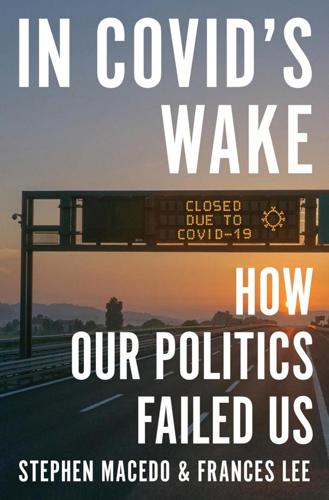
In Covid's Wake: How Our Politics Failed Us
by
Stephen Macedo
and
Frances Lee
Published 10 Mar 2025
The marked rise of crime in the United States in 2020 probably bears some relationship to the huge surge in firearm sales. Amid the fear and anxiety during the pandemic— especially immediately after the declaration of the coronavirus national emergency and during the unrest associated with the George Floyd protests—firearms sales set new records.125 Americans purchased more than 60 million new weapons between 2020 and 2022, with the number of FBI background checks increasing by 40 percent in 2020 relative to 2019.126 The unusually protracted school closures and associated rise in truancy probably also contributed to bigger rises in juvenile delinquency in the United States compared to peer countries.
…
If the problem of intolerance has been especially acute under Covid, the reasons stem from many c auses, which include polarization around the election of Donald Trump, the fact that having a four-year college degree is strongly associated with membership in the Democratic Party, the decline of mainstream media and the rise of social media, and moral outrage following the murder of George Floyd. All of these factors helped set the stage for our fateful and fearful encounter with the novel coronavirus. Conclusion The Covid fiasco bears some similarities to previous gross errors of policy such as Vietnam and the Iraq War. U nder Covid, as in t hose e arlier episodes, flawed policies w ere adopted and persisted due to groupthink.

Digital Empires: The Global Battle to Regulate Technology
by
Anu Bradford
Published 25 Sep 2023
For example, it took less than a year for the hashtag #MeToo to be shared over 19 million times globally, contributing to the social movement against sexual harassment.46 The hashtag #BlackLivesMatter was being shared on average 3.8 million times a day in the period following the brutal killing of an unarmed black man, George Floyd, at the hands of a white police officer in May 2020.47 These examples reveal how social media campaigns can be effective in elevating the political salience of issues and paving the way for social and political reforms. The US regulatory model rests on a belief that the internet contributes to vibrant democracy by fostering public debate and elevating diverse voices.
…
However, discontent among tech employees is growing more broadly. Employees are more outspoken about hate speech on social media platforms. In 2020, Meta’s employees were outraged by the company’s decision not to remove President Trump’s controversial post about the racial protests relating to the death of George Floyd, an African American who was brutally killed by a Minnesota police officer that May. Many viewed the post as glorifying violence. Twitter had decided to hide Trump’s post from view, while Meta took no action. In protest, as many as 600 Meta employees staged a “virtual walkout.”87 Some employees tweeted that they were going to leave the company, and others circulated internal petitions calling for all employees to voice similar commitments.88 At Twitter, employees took part in these virtual walkouts in solidarity with Meta employees,89 reinforcing the message that the industry had to adjust its ways.
…
Times, Aug. 5, 2021, https://www.ft.com/content/14440f81-d405-452f-97e2-a81458f5411f. 40.Adi Robertson, Apple’s Controversial New Child Protection Features Explained, Verge (Aug. 10, 2021), https://www.theverge.com/2021/8/10/22613225/apple-csam-scanning-messages-child-safety-features-privacy-controversy-explained. 41.Press Release, European Commission, Fighting Child Sexual Abuse: Commission Proposes New Rules to Protect Children (May 11, 2021), https://ec.europa.eu/commission/presscorner/detail/en/ip_22_2976. 42.Barbrook & Cameron, supra note 5, at 48. 43.Magaziner, Framework, supra note 18. 44.Hillary Clinton, Secretary of State, Speech at The Newseum: Remarks on Internet Freedom (Jan. 21, 2010) (transcript available at https://2009-2017.state.gov/secretary/20092013clinton/rm/2010/01/135519.htm). 45.Nathaniel Persily, The Internet’s Challenge to Democracy: Framing the Problem and Assessing Reforms 4–5 (2019). 46.Measuring the #MeToo Backlash, The Economist (Oct. 20, 2018), https://www.economist.com/united-states/2018/10/20/measuring-the-metoo-backlash. 47.Alexandra Kelley, #BlackLivesMatter Hashtag Averages 3.7 Million Times Per Day Following George Floyd’s Death, The Hill (June 11, 2020), https://thehill.com/changing-america/respect/equality/502353-blacklivesmatter-hashtag-averages-37-million-times-per-day. 48.See, e.g., Brian Miller, There’s No Need to Compel Free Speech: The Marketplace of Ideas Is Working, Forbes (Dec. 4, 2017), https://www.forbes.com/sites/briankmiller/2017/12/04/theres-no-need-to-compel-speech-the-marketplace-of-ideas-is-working/. 49.See generally Anupam Chandler, How Law Made Silicon Valley, 63 Emory L.

Futureproof: 9 Rules for Humans in the Age of Automation
by
Kevin Roose
Published 9 Mar 2021
In early 2020, when the Covid-19 pandemic hit the Bay Area, Marcus Books was forced to temporarily close its doors. And like a lot of businesses, it faced an uncertain future. But its community rallied behind it, starting a GoFundMe page and raising money to keep the store in business. Then, in May, George Floyd, an unarmed Black man, was killed by police in Minneapolis. Protests filled the streets of America’s cities, and orders started pouring into Marcus Books from all over the country from people who wanted to support its mission. It’s selling five times as many books as it was before the pandemic, and its GoFundMe donations ballooned to $260,000, more than enough to keep the store afloat.
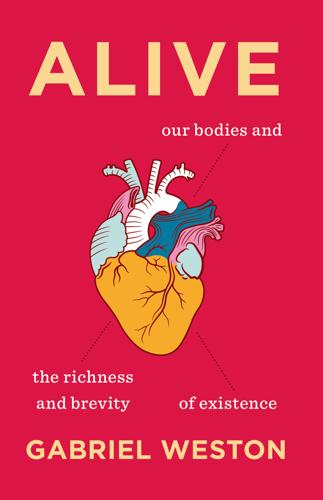
Alive
by
Gabriel Weston
Published 15 Aug 2025
But breathlessness isn’t just the literal consequence of inhaling bad air. A startling number of the world’s crises are manifested by this organ. Another group of migrants dies in the back of a lorry from asphyxiation. A four-year-old boy washes up dead on a beach in Greece, his lungs full of seawater. George Floyd lies on a road suffocating, with a policeman kneeling on his neck, while he begs, ‘I can’t breathe.’ Respiration is a political as well as a physiological act, our capacity to perform it not just a sign of life, but of freedom. The lungs bring some of our most intense personal experiences.
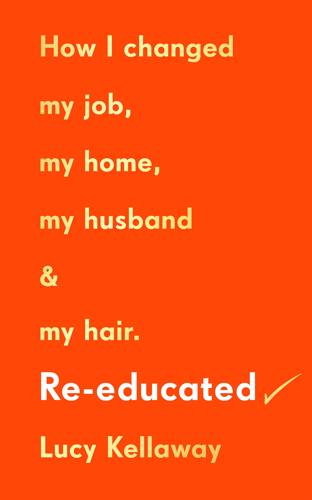
Re-Educated: Why It’s Never Too Late to Change Your Life
by
Lucy Kellaway
Published 30 Jun 2021
Before I started teaching I didn’t think much about racism. I told myself that things had got a lot better in the UK during my lifetime and I assumed they’d continue to improve. The answer was to provide good education to every student and then all races would live happily ever after. That was before the murder of George Floyd. It was also before I judged a public speaking competition open to all secondary schools in Hackney. Every school entered two 15-year-olds who each gave a speech on any topic they wanted to talk about. On the night I sat on the judges’ table in an assembly hall and listed to two dozen teenagers do something that I hadn’t known how to do when I was in my 40s, project my voice and speak from the heart, without notes.

The Aristocracy of Talent: How Meritocracy Made the Modern World
by
Adrian Wooldridge
Published 2 Jun 2021
The Black Lives Matter movement is one of the most powerful protest movements of recent years. Its prime target is brutality, particularly police brutality towards African-Americans – it was ignited by the killing of Trayvon Martin in 2012 by a member of the neighbourhood watch and then re-ignited, on an even larger scale, by the killing of George Floyd by a police officer, in 2020. But it has also popularized critical race theory, an ideology that was incubated on American campuses from the late 1960s onwards, and which provides the intellectual underpinnings of a succession of successful books, such as Reni Eddo-Lodge, Why I’m No Longer Talking to White People about Race (2017), Robin DiAngelo, White Fragility (2018) and Ibram X.
…
The Trump presidency also radicalized the left to a degree that hasn’t been seen since the late 1960s, with Bernie Sanders making a prolonged bid for the Democratic nomination and young radicals such as Alexandria Ocasio-Cortez trying to set the tone of the Congressional Democratic Party. The killing of an unarmed African-American, George Floyd, by a white police officer, Derek Chauvin, on 25 May 2020 provoked angry riots across America, particularly in the big cities, and turned Black Lives Matter into one of the most powerful forces in the country. The movement pointed out that by all sorts of measures America’s racial disparities were no better than they were when LBJ launched the Great Society – and were in some ways worse.
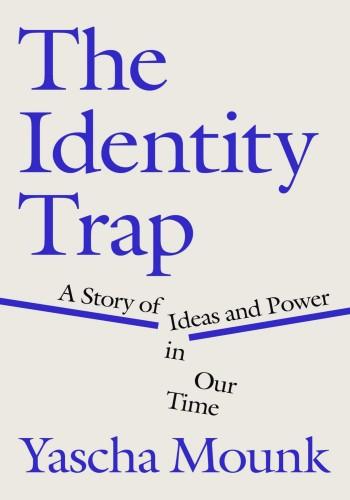
The Identity Trap: A Story of Ideas and Power in Our Time
by
Yascha Mounk
Published 26 Sep 2023
As John McWhorter has summarized her view, “If you object to any of the ‘feedback’ that DiAngelo offers you about your racism, you are engaging in a type of bullying ‘whose function is to obscure racism, protect white dominance, and regain white equilibrium.’ ” The effect of DiAngelo’s book was to mainstream a non-falsifiable theory: All white people are racist. And if you disagree, that merely proves how racist you are. When three policemen murdered George Floyd in the streets of Minneapolis on May 25, 2020, inspiring millions of Americans to protest against racial injustice, it was Kendi and DiAngelo who became overnight celebrities, setting the terms of mainstream discourse. Published in 2018, White Fragility became one of the most sold books of 2020, occupying top places on the New York Times bestseller list for more than a year.
…
See also Ailsa Chang, Jason Fuller, and Kathryn Fox, “Secret $6 Million Home Has Allies and Critics Skeptical of BLM Foundation’s Finances,” NPR, April 7, 2022, https://www.npr.org/2022/04/07/1091487910/blm-leaders-face-questions-after-allegedly-buying-a-mansion-with-donation-money. See further William Bredderman, “Inside Shaun King’s Shadowy $6.7 Million Nonprofit,” Daily Beast, Sept. 21, 2022, www.thedailybeast.com/inside-shaun-kings-shadowy-dollar67-million-nonprofit-grassroots-law-project-formed-after-george-floyds-death. GO TO NOTE REFERENCE IN TEXT extreme political causes: Thomas B. Edsall, “The Law of Unintended Political Consequences Strikes Again,” New York Times, Jan. 5, 2022, www.nytimes.com/2022/01/05/opinion/progressive-philanthropy-critics.html. A ballot measure to abolish the Minneapolis Police Department, for example, received major funding from the Open Society Policy Center; ironically, a majority of voters in some affluent and predominantly white parts of the city supported the measure, while a clear majority of those in less affluent and predominantly Black parts of the city voted it down.
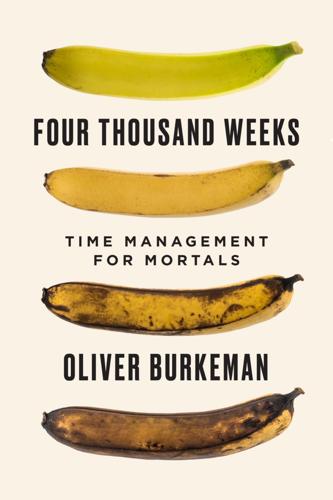
Four Thousand Weeks: Time Management for Mortals
by
Oliver Burkeman
Published 9 Aug 2021
“Totalitarian movements are mass organizations of atomized, isolated individuals,” wrote Hannah Arendt in The Origins of Totalitarianism. It’s in the interests of an autocrat that the only real bond among his supporters should be their support for him. On those occasions when synchronized action does pierce through the isolation, as during the worldwide demonstrations that followed the killing of George Floyd by Minneapolis police in 2020, it’s not unusual to hear protesters describe experiences that call to mind William McNeill’s “strange sense of personal enlargement”—a feeling of time thickening and intensifying, tinged with a kind of ecstasy. Like our other troubles with time, our loss of synchrony obviously can’t be solved exclusively at the level of the individual or the family.

Happy-Go-Lucky
by
David Sedaris
Published 30 May 2022
I just don’t necessarily need him by my side every moment that I’m awake. Sometimes it’s enough to press my ear against the living-room floor of the upstairs apartment and faintly hear him practicing piano down below, frowning at the keys, I suspect, and at the music before him, a boy again. So determined to get it right. Fresh-Caught Haddock When George Floyd was killed and seemingly overnight all of New York came to smell like fresh plywood, I thought of Schenectady. “Why there?” my sister Amy asked. She was with Hugh and me on the terrace of our apartment on the Upper East Side of Manhattan. From where we stood, we could hear the roiling cauldron twenty stories below us: sirens, shouting, the distant sounds of breaking glass—all blended together into a furious, muffled roar.

Still Broke: Walmart's Remarkable Transformation and the Limits of Socially Conscious Capitalism
by
Rick Wartzman
Published 15 Nov 2022
Several years ago, a group from Walmart, including the CEO, traveled to the South to learn more about Black history. People of color are overrepresented in low-paying jobs, and Walmart is the largest private employer of Black Americans in the country. McMillon has been taking executives on these tours for many years—long before the murder of George Floyd caused one corporation after the next to proclaim a commitment to diversity and inclusion. Bland, who has had friends and relatives who’ve worked at Walmart, enjoyed her time with McMillon. Sitting with him in Montgomery, she found him to be all the things he is: curious, humble, caring, sincere.

Stories Are Weapons: Psychological Warfare and the American Mind
by
Annalee Newitz
Published 3 Jun 2024
When I started researching this book in mid-2020, the world was locked down in a pandemic that was unleashing a torrent of propaganda the likes of which I had never seen. As a friend of mine lay dying of COVID on a ventilator, President Donald Trump promised that we could cure the disease with light and deworming medication for horses. After police killed George Floyd, I watched as disinformation about the Black Lives Matter movement piled up on social media,1 where anonymous accounts falsely blamed protesters for violence.2 A conspiracy theory from 2016 about pizza-eating pedophiles radicalized a huge number of right-wing extremists, who later joined crowds storming the Capitol, trying to murder the vice president and overturn the 2020 presidential election.

Flight of the WASP
by
Michael Gross
Though he saw the future, he was too tied to old ideas to fully inhabit it, even as he supported programs to educate the children of immigrants whom he considered inferior.98 The desire to reconcile science and religion faded, though it, like creationism, persists. So does the museum, where in 2020, after years of protests, and in the wake of the police murder of George Floyd in Minneapolis, the equestrian statue of Theodore Roosevelt at its entrance, with its mounted subject towering over figures of an Indian and an African, was removed. “Simply put, the time has come to move it,” the museum’s longtime president, Ellen V. Futter, said. As an Osborn biographer had already noted, “The museum is no longer a bastion of white male superiority.”99 Osborn embodied that obsolete notion.
…
After a few months, though, the COVID-19 pandemic shut down the NYPL and all the other libraries, repositories, and archives I’d hoped to visit. So I continued to do interviews by phone, placed more emphasis on secondary sources, and began to write, a process that seemed more urgent and fraught after the May 2020 death of George Floyd made Americans ask searching questions about their origins and identity. My next debt of gratitude is to the authors and researchers who preceded me in studying the individuals and families I’d decided to include. Their books are all in the bibliography and endnotes that follow, and anyone who wants to dig deeper into these families would do well to start there.
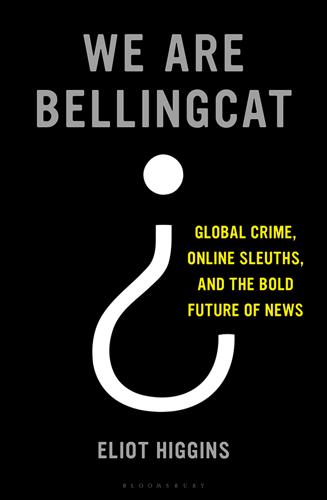
We Are Bellingcat: Global Crime, Online Sleuths, and the Bold Future of News
by
Eliot Higgins
Published 2 Mar 2021
For example, within a month of the World Health Organization designating Covid-19 a pandemic in March 2020, Bellingcat produced a range of material to involve citizens in online sleuthing on the subject, including a guide to debunking coronavirus disinformation; an article on scammers exploiting the disease on Facebook and YouTube; and a video segment on applying open-source tools to studying a world gone still during lockdown.96 When a police officer in Minneapolis killed an African-American suspect, George Floyd, setting off protests across the United States and beyond, we produced an explanatory article on the Boogalo movement that hoped unrest would degenerate into a second American civil war; we compiled an exhaustive list of attacks on journalists, geolocated and plotted onto an interactive map to involve the public in absorbing the dimensions of the efforts to suppress information; and we sought to inform citizens of our techniques via a new podcast, BellingChat.

Too Much and Never Enough: How My Family Created the World's Most Dangerous Man
by
Mary L. Trump
Published 13 Jul 2020
An effective response would have entailed a call for unity, but Donald requires division. It is the only way he knows how to survive—my grandfather ensured that decades ago when he turned his children against each other. I can only imagine the envy with which Donald watched Derek Chauvin’s casual cruelty and monstrous indifference as he murdered George Floyd; hands in his pockets, his insouciant gaze aimed at the camera. I can only imagine that Donald wishes it had been his knee on Floyd’s neck. Instead, Donald withdraws to his comfort zones—Twitter, Fox News—casting blame from afar, protected by a figurative or literal bunker. He rants about the weakness of others even as he demonstrates his own.
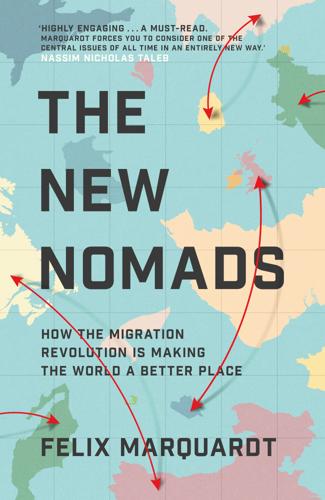
The New Nomads: How the Migration Revolution Is Making the World a Better Place
by
Felix Marquardt
Published 7 Jul 2021
He and Tamika, his partner at NMH to whom he is now married, taught me about what it felt like to be Black in white America; the subtle racism you were sure to endure – and the risks you took – merely by leaving the city; the nagging, recurring fear of being casually arrested, hurt or killed by police officers. After the brutal murder of George Floyd and the protests that followed, we hopped on Zoom. To them, what was happening in the US was hardly surprising. It was what happened when the institutionalised violence, racism and injustice of slavery and genocide the country was founded upon was multiplied by a factor of Covid-19. The most momentous travel experience of my youth took place when I was eighteen.
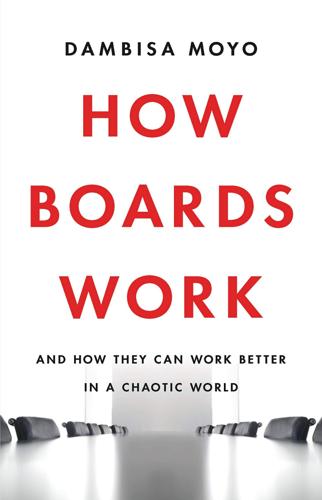
How Boards Work: And How They Can Work Better in a Chaotic World
by
Dambisa Moyo
Published 3 May 2021
As corporations have begun to focus on greater female board representation, they have also looked to add ethnic minorities and to ensure that diverse ideas and thinking are represented on the board. In this regard, many of the tools used to recruit diverse talent apply to all underrepresented groups. The demonstrations in May and June 2020 triggered by the death of George Floyd awakened long-standing concerns and frustrations around racial injustice and inequity, including in the corporate world. The demonstrations yielded a strong response from the private sector, with corporations swiftly conveying that they would not stand for racial injustice, and that they would actively work—unilaterally and in concert with others—to give racial minorities more access and opportunities.

Scary Smart: The Future of Artificial Intelligence and How You Can Save Our World
by
Mo Gawdat
Published 29 Sep 2021
Which of our choices are ethical and which should we revisit? Those moral codes will form the base from which the machines will learn. The focus of humanity, especially in advanced societies, has shifted away from adhering to the moral code to adhering to the legal code, or simply to getting away with it. So the killing of George Floyd, among thousands of other offences against people of colour, becomes the norm as long as it is not caught on camera. And the looting by angry protestors during the Black Lives Matter protests shows that if you’re masked and won’t be caught, it becomes easier to justify to oneself that stealing from the rich guy is okay.
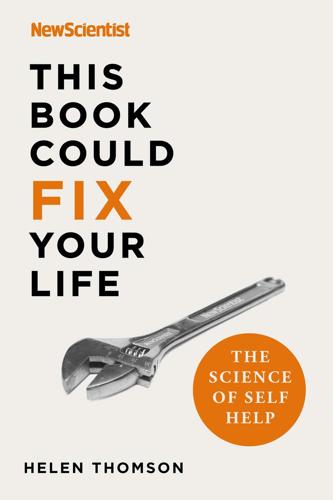
This Book Could Fix Your Life: The Science of Self Help
by
New Scientist
and
Helen Thomson
Published 7 Jan 2021
And one final piece of advice: the people closest to us may have a lot of information, but a few of them are also the most biased. This is especially true of your parents: when it comes to their opinion of you, take anything they say with a large pinch of salt. HOW TO AVOID UNCONSCIOUS BIAS The death of George Floyd under the knee of a police officer in Minneapolis in May 2020 shook the world to attention and gave a new impetus to the Black Lives Matter movement, but it was no isolated incident. Every day there are stories of people being treated with suspicion – or far worse – based on their skin colour while going about their daily lives.
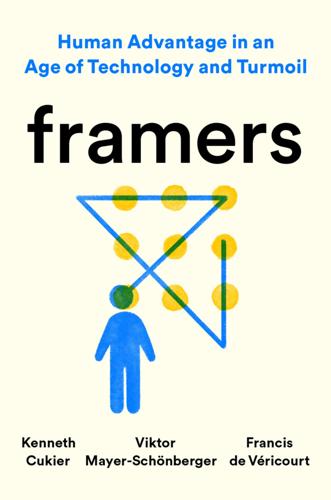
Framers: Human Advantage in an Age of Technology and Turmoil
by
Kenneth Cukier
,
Viktor Mayer-Schönberger
and
Francis de Véricourt
Published 10 May 2021
The job of officers was now to knock on the doors and introduce themselves; talk about citizens’ concerns and offer to help. The police began pop-up neighborhood parties, where they’d rock up with Mister Softee ice-cream trucks, grill hot dogs, play basketball with kids, and get to know the residents. Seven years later, when American cities were up in flames, literally, over the murder of George Floyd by a Minneapolis police officer and protesters chanted “Defund the police,” Camden was cited as a success story. Murders were down 60 percent, crime had almost halved, and complaints of excessive force by police had fallen by a stunning 95 percent. The reframing had worked. A symbolic moment came in June 2020.

Bootstrapped: Liberating Ourselves From the American Dream
by
Alissa Quart
Published 14 Mar 2023
A mother and adjunct professor of Chicana studies put it like this, “The funny part is now all of a sudden you have upper-class families talking about mutual aid.” She continued, “The term mutual aid is not radical! It’s, like, last semester, dude.” By that summer, some of the mutual aid-ers were thinking of ways to expand their group’s purview. For example, during the protests around George Floyd’s killing, Crystal Hudson shifted the focus of our neighborhood’s mutual aid group to include questions of race and policing. Hudson’s dream was that New York Police Department resources would be reallocated to programs like her grocery shopping efforts. As of this writing such dreams had not been realized.

Rule of the Robots: How Artificial Intelligence Will Transform Everything
by
Martin Ford
Published 13 Sep 2021
CONCLUSION TWO AI FUTURES AS ARTIFICIAL INTELLIGENCE CONTINUES TO ADVANCE AND EXTEND its reach into ever more facets of our lives, the risks associated with the technology will demand urgent attention. The intersection of the coronavirus crisis and widespread social upheaval in 2020 brought developments that suggest at least some of these issues are beginning to take a prominent place within public discourse. In the wake of the nationwide protests surrounding the killing of George Floyd by Minneapolis police officers in May, awareness of racial bias in facial recognition technology came to the forefront, and Amazon announced a one-year moratorium on sales of its Rekognition system to law enforcement agencies in order to give the U.S. Congress time to consider regulations on the technology.
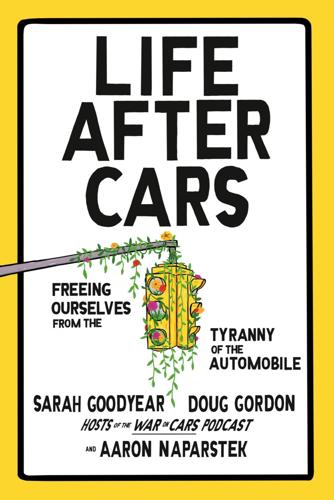
Life After Cars: Freeing Ourselves From the Tyranny of the Automobile
by
Sarah Goodyear
,
Doug Gordon
and
Aaron Naparstek
Published 21 Oct 2025
As a result, we now know the names of some of the countless people who have been killed by law enforcement officers while trying to move about the communities where they live. Michael Brown was walking down the middle of a street in Ferguson, Missouri, when he was shot by cops who told him to move onto the sidewalk and then blocked him with their SUV before killing him. In Minneapolis, George Floyd was pinned to the asphalt and killed in the street next to a police vehicle after being pulled from a car he had borrowed from a friend. Elijah McClain was injected with a fatal dose of ketamine after police confronted him for waving his arms while walking down a sidewalk in Colorado. Walter Scott was shot three times in the back when he tried to flee from a policeman who stopped him for a broken brake light in South Carolina.
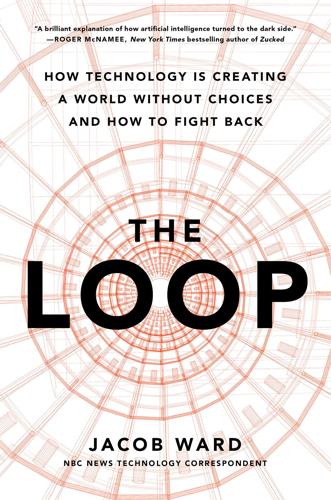
The Loop: How Technology Is Creating a World Without Choices and How to Fight Back
by
Jacob Ward
Published 25 Jan 2022
“We don’t want people to feel that way, at least that’s not our hope for what they’re gaining out of us. We want them to actually feel good that we’re more visible in the area in which they live.” It may be that some residents of that particular block will feel safer by having police come through more often. But for many, especially after the deaths of Oscar Grant, George Floyd, Breonna Taylor, and too many others, that’s unlikely to be the case. The objective function doesn’t benefit everyone. Professor Brantingham says the point of PredPol isn’t more arrests, just disrupting what the algorithm predicts will happen by exhibiting police presence. “It’s been known for quite a long time that there’s something called residual deterrence, a police officer shows up in a location, and when they leave, their effect persists for quite a long time.”
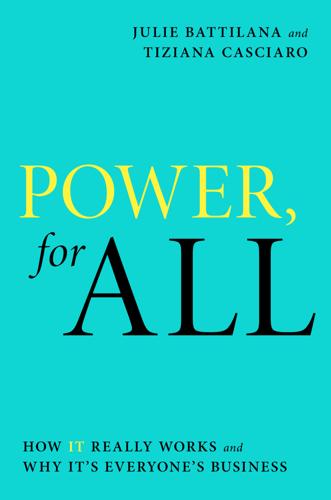
Power, for All: How It Really Works and Why It's Everyone's Business
by
Julie Battilana
and
Tiziana Casciaro
Published 30 Aug 2021
The Thirteenth Amendment may have banned slavery, but four hundred years after the first enslaved Africans set foot in Virginia, the myth of White supremacy still shapes American institutions, from the overrepresentation of Black people in the criminal justice system to their underrepresentation in corporate boardrooms. Black people in the United States are more likely to be politically disenfranchised, economically impoverished, and casually brutalized at the hands of the police. The murders of Breonna Taylor and George Floyd in the spring of 2020 were a stark reminder of the long history of violence, injustice, and trauma that Black people continue to suffer in the United States. Slavery, dynastic rule, systemic racism, and gender inequality: All are supported by the same kind of scaffolding, power hierarchies that have proven resistant to change.
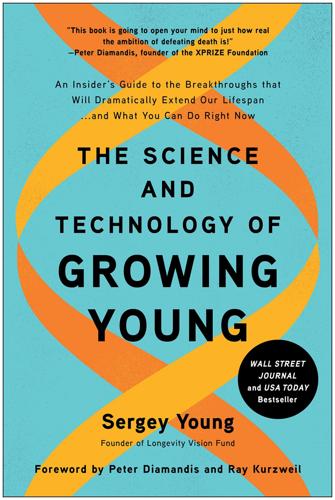
The Science and Technology of Growing Young: An Insider's Guide to the Breakthroughs That Will Dramatically Extend Our Lifespan . . . And What You Can Do Right Now
by
Sergey Young
Published 23 Aug 2021
In the United States, long considered the gold standard of economic opportunity, about a quarter of Americans live below the poverty threshold.25 Even before the devastating effects of the 2020 COVID-19 lockdown, the United States had already slipped to position number 27 in the global ranking of social mobility.26 Nobody should be surprised that the 2020 killing of George Floyd by police sparked such emotion among those fed up with economic and social injustice. Imagine, though, when one hundred years old is considered no more than “middle-aged.” Just think how much more money the “haves” will be able to amass! This was exactly what the Luggnaggians, of Gulliver’s Travels, feared.
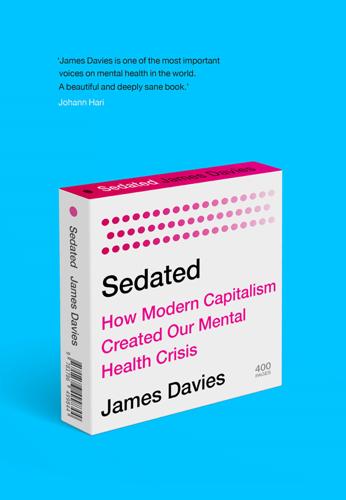
SEDATED: How Modern Capitalism Created Our Mental Health Crisis
by
James. Davies
Published 15 Nov 2021
These imbalances were compounded by the A level algorithm debacle, which lowered the grades of university-bound disadvantaged students more than it did those who were privately educated. As major social inequalities were foregrounded by COVID, protest movements like Black Lives Matter highlighted the linked themes of racism and social injustice, especially in the US. The killing of George Floyd symbolised the wide structural violence of racism and urban poverty. These iniquities were compounded by black, Asian and minority ethnic (BAME) people being dramatically over-represented in the COVID-19 death statistics.8 Their distress was not caused by strictly biomedical factors, as some would have it.
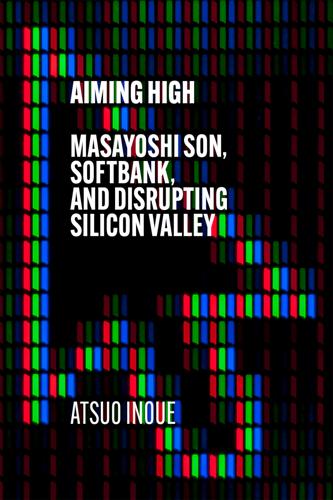
Aiming High: Masayoshi Son, SoftBank, and Disrupting Silicon Valley
by
Atsuo Inoue
Published 18 Nov 2021
On 3 June 2020, Son would go on to tweet: ‘Racism is a lamentable thing. The SoftBank Group will be setting up a 100-million-dollar fund so Black and Latinx entrepreneurs can find their way out of an unjust world and be successful.’ The United States have been very good to both Son and Claure. So, in a time of crisis such as the protests caused by the murder of George Floyd, they were not in a position to follow trends but tp lead by example. Across all the major news networks like CNN, most business leaders regardless of the sector – seemed to trot out the same line: ‘we stand with the Black community.’Claure comments on this, stating ‘What does it really mean to stand with someone though?
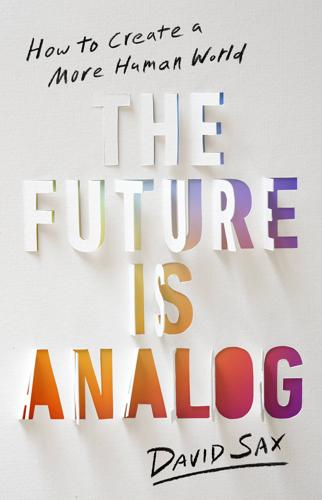
The Future Is Analog: How to Create a More Human World
by
David Sax
Published 15 Jan 2022
The weekend before we spoke, Riley, who is Black, had traveled to visit his brother in San Diego. One night during dinner, Riley’s brother’s father-in-law, who was white, got into a conversation with Riley about the recent racial justice protests around the United States following the high-profile death of George Floyd at the hands of Minneapolis police. “All that Black Lives Matter stuff is crap,” the father-in-law said. “All lives matter!” Rather than get angry or defensive or walk away, Riley did his best to make this man see his perspective and empathize with him. “I said, ‘Lemme walk you through the history of everything Black people went through in this country, and systematically how it worked.’”
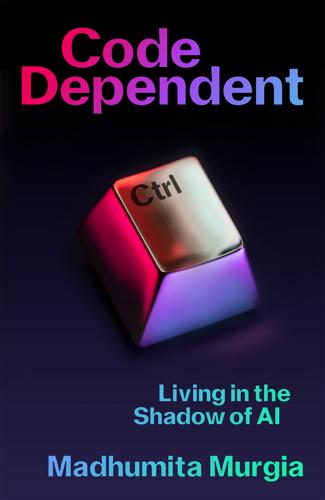
Code Dependent: Living in the Shadow of AI
by
Madhumita Murgia
Published 20 Mar 2024
When you hear about facial recognition in law enforcement going terribly wrong, it’s because of human errors, he said, referring to the over-policing of African American males and other minorities, and the use of unprovoked violence by police officers against black people like Philando Castile, George Floyd and Breonna Taylor. He knew the technology was rife with false positives, and that humans suffered from confirmation bias. So, if a police officer believed someone to be guilty of a crime, and the AI system confirmed it, they were likely to target innocents. ‘And if that person is black, who cares?’
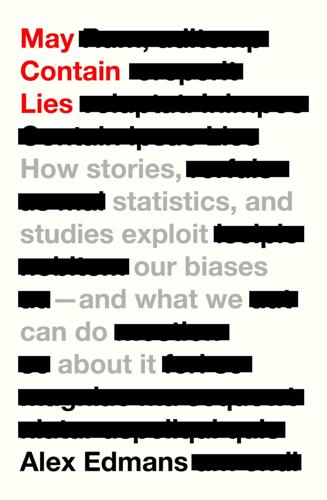
May Contain Lies: How Stories, Statistics, and Studies Exploit Our Biases—And What We Can Do About It
by
Alex Edmans
Published 13 May 2024
The third step is to check if the authors’ data matches their conclusions. A study may misportray not just whether the data shows a link but what the data is actually capturing. It might measure something quite different, miss a big piece of the picture, be self-reported or be circular. As an example of where the data measures something different, after George Floyd’s murder in May 2020 there were numerous Black Lives Matter protests to fight for racial justice. Some worried that mass protests might increase the spread of COVID-19, but a study claimed that ‘cities which had protests saw an increase in social distancing’.8 It was widely covered by the media, because their readers wanted this result to be true.
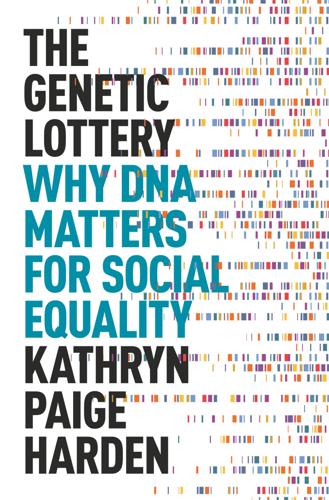
The Genetic Lottery: Why DNA Matters for Social Equality
by
Kathryn Paige Harden
Published 20 Sep 2021
Instead, if we are interested in making our commitment to racial equality “genetics-proof,” I think we must dismantle the false distinction between “inequalities that society is responsible for addressing” and “inequalities that are caused by differences in biology.”35 The mistaken idea that genetic causes operate as a boundary for social responsibility was evident in Sam Harris’s comments toward the end of our podcast conversation. We were speaking in the middle of a summer rocked by the murders of George Floyd and Breonna Taylor at the hands of police, with Black Lives Matter protests happening in cities around the world. The books White Fragility and So You Want to Talk about Race topped the New York Times bestseller list,36 signs of a national conversation that was happening about racial disparities in policing, housing, health care, education, wealth, and political power in America.
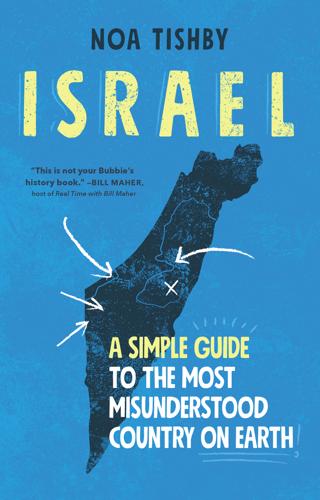
Israel: A Simple Guide to the Most Misunderstood Country on Earth
by
Noa Tishby
Published 5 Apr 2021
In 2019, the Anti-Defamation League found that antisemitic incidents reached an all-time high since it began tracking them in 1979, with a 56 percent increase in assaults.20 In Charlottesville, white supremacists chanted, “Jews will not replace us,” proudly and without even covering their faces, and in the Tree of Life Synagogue in Pittsburgh, eleven people were shot dead. There’s been an uptick in killings, harassment, vandalism, assault, and fatalities of Jews in the US. In the incredible social justice demonstrations that followed the murder of George Floyd, people spray painted “Jews we’re coming for you” at a park by my apartment. And, of course, there are the millions of posts and tweets about how the Jews are the ones who actually created COVID-19. Jews are only 2 percent of the United States population, but they are the target of 50 percent of national religion-based hate crimes.
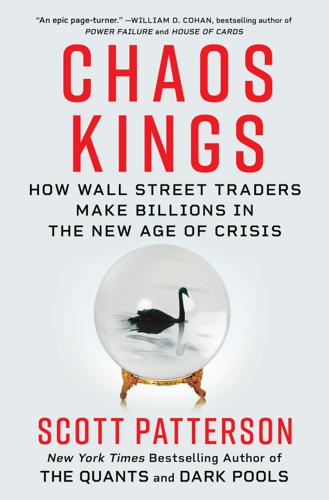
Chaos Kings: How Wall Street Traders Make Billions in the New Age of Crisis
by
Scott Patterson
Published 5 Jun 2023
“As this report is being finalized, the United States is in the midst of a worldwide pandemic, with deaths already exceeding 180,000 from COVID-19, and an associated economic collapse,” Litterman wrote in the foreword to the 196-page report. He noted the similarities between the pandemic and global warming, including the fact that delaying addressing both problems “can be devastating.” The report, released in the midst of the 2020 presidential election, ongoing fear about the pandemic, and nationwide protests over the murder of George Floyd, attracted almost no attention. Litterman wasn’t surprised. But he hoped it would serve as a blueprint for future approaches to solving the problem. He also believed the fossil fuel giants on the CFTC committee were sincere when they said they wanted to help. Many were publicly calling for a carbon tax, although none condoned a tax remotely close to the $100 a ton recommended by the EZ model.
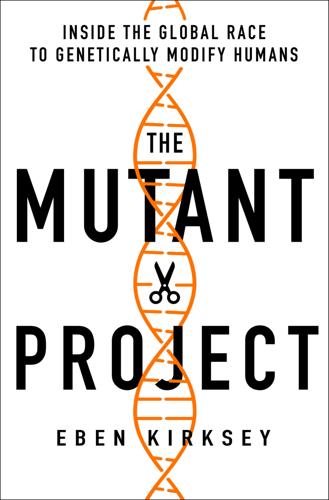
The Mutant Project: Inside the Global Race to Genetically Modify Humans
by
Eben Kirksey
Published 10 Nov 2020
Findings from genetics, Gilroy argued, should undermine the very idea of “race,” leading to “a gradual withering away arising from growing irrelevancy.”15 Science and technology have not brought us a quick fix to the problem of racism. White privilege has not gone away. With the recent rise of white nationalism and the national protests sparked by the death of George Floyd, Gilroy’s optimism about the disappearance of racial thinking now seems dated. The fix to a racialized society is not “skin deep.” Many people already alter their skin color with existing cosmetic treatments, but this has not brought about a color-blind utopia. The Twitter storm that erupted with the hashtag “#transracial” in 2015 anticipates some of the questions that will emerge in the United States if David Ishee or someone else manages to turn race into a genetic fashion.

Unmasking Autism: Discovering the New Faces of Neurodiversity
by
Devon Price
Published 4 Apr 2022
In 2017, Chicago police sergeant Khalil Muhammad shot an unarmed, Black Autistic teenager named Ricardo Hayes. Muhammad claimed he felt threatened by Hayes, but an investigation revealed Hayes had been harmlessly jogging along the side of his street, and didn’t show any aggression toward Muhammad.[45] Five days after the murder of George Floyd, an Israeli police officer in Jerusalem City shot and killed Eyad Hallaq, an Autistic Palestinian man who was profoundly intellectually disabled and unable to speak or comprehend instructions.[46] In April 2021, a Chicago police officer shot and killed thirteen-year-old Adam Toledo, who had his hands in the air.
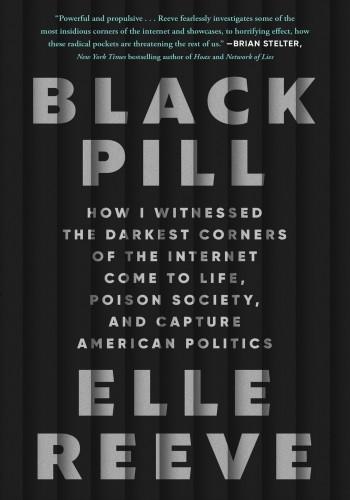
Black Pill: How I Witnessed the Darkest Corners of the Internet Come to Life, Poison Society, and Capture American Politics
by
Elle Reeve
Published 9 Jul 2024
He liked the way it represented force, and the way it commanded respect. He didn’t understand where that respect came from—that the military serves a shared set of principles, not a single man. In office, he tried to subvert this idea. In June 2020, Trump threatened to deploy active-duty troops to put down the protests after the murder of George Floyd. In response, Mark Milley, chairman of the Joint Chiefs of Staff, released a message to military commanders saying every member of the military swears an oath to the Constitution, which grants Americans the right to freedom of speech and peaceful assembly. At Milley’s retirement ceremony three years later, he said, “We don’t take an oath to a king or a queen or to a tyrant or a dictator.

Paper Girl: A Memoir of Home and Family in a Fractured America
by
Beth Macy
Published 6 Oct 2025
Here’s to her sister.” * * * — During dinner, Joy told me that it had been a very disappointing day for her community because women could now kill their babies after birth. “Joy, that’s not true,” I said, aiming for an even tone. “I’ll send you a link,” she said. Later, she claimed that George Floyd didn’t die from having a police officer’s knee pressed against his neck for nine minutes, and when I questioned the accuracy of that statement, another link was promised. But the links never came. “I’m Black, but I’m not racially triggered,” she said, decrying the “lack of home raising” she ascribed to Black Lives Matter activists in the wake of Floyd’s murder.
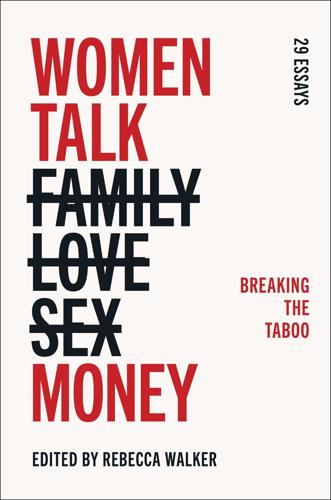
Women Talk Money: Breaking the Taboo
by
Rebecca Walker
Published 15 Mar 2022
Whether it was the result of my outspokenness itself or that the outspokenness meant decreased engagement on Instagram, I’ll never know. * * * All of this, of course, happened before the summer of 2020, when millions took to the streets for months of Black Lives Matter uprisings in the wake of George Floyd’s brutal murder. Before the meme activism of #BlackOutTuesday and the tidal wave of white tears shed by influencers and businesses suddenly committed to being actively antiracist. It happened before it was cool to be political on social media, before the algorithm (and corporate responsibility) rewarded whiteness for taking accountability for its privilege.
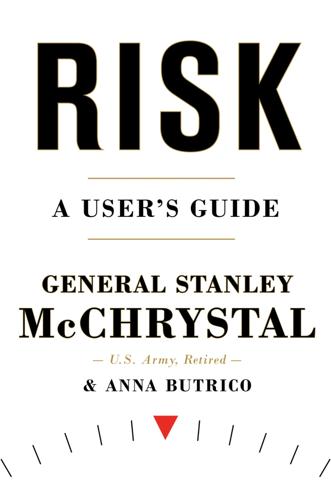
Risk: A User's Guide
by
Stanley McChrystal
and
Anna Butrico
Published 4 Oct 2021
Kennedy’s dealings with Cuba, diversity of thought is crucial in situations of great risk and uncertainty. Finally, we will argue—by exploring the topic of fusion cells in the Middle East and the United States—how the diversity of capability must be sought in order to have the best posture to identify, assess, and mitigate risk. Protests against racial injustice following the death of George Floyd in 2020. (Photo by Stephen Maturen/Getty Images) SYMPTOMS OF DIVERSITY CHALLENGES Stale Preservation of the Status Quo. People who have similar thoughts and abilities recommend the same actions—often sustaining the status quo. Finger-pointing. When balls are dropped because new angles haven’t been considered, organizations that lack diversity point fingers inward rather than look for fresh perspectives from the outside.
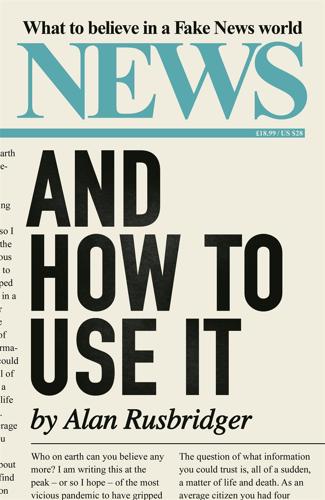
News and How to Use It: What to Believe in a Fake News World
by
Alan Rusbridger
Published 26 Nov 2020
It’s a real blind spot.’ But even then those with honest intent will confront the hard decision British editors have historically encountered: balancing the potency of xenophobia as a brand component and commercial driver with the social harm that results. The global anger aroused by the killing of George Floyd in Minneapolis in May 2020 led to a period of intense reflection about the lack of diversity in the western media. But more than one commentator expressed scepticism about companies which had hitherto done little to promote diversity suddenly embracing the optics of being seen to say the right thing.

You've Been Played: How Corporations, Governments, and Schools Use Games to Control Us All
by
Adrian Hon
Published 14 Sep 2022
Users are coordinated through “missions” for which they earn points, badges, and prizes; according to The Forward, top users can win prizes including a congratulatory letter from a government minister.39 Though Act.IL is a private project of the Interdisciplinary Center in Herzliya, the Israeli-American Council, and the Maccabee Task Force, its founder Yarden Ben Yosef told The Forward that the Israeli military and domestic intelligence service had requested their help in removing videos from Facebook that called for violence against Jews or Israelis (Ben Yosef later retracted his statement, saying they were only in regular informal contact).40 Act.IL has few users—only a few thousand downloads from the Google Play Store as of November 2021—but it’s claimed credit for convincing Pitzer College to retain its study abroad program in Israel, and for the revision of a proposed ethnic studies curriculum for California public schools it said was antisemitic.41 Other propaganda is much easier to spot, like Hezbollah’s Special Force video game series in which players fight the Israel Defense Forces, or a game in which Iran’s Basij militia rescues George Floyd from being killed by US police.42 Proposed in 2020 by a commander of the Islamic Revolutionary Guard Corps, it would be one way to “take back cyberspace” from the US.43 It would have an uphill climb, though: the US has had a commanding lead in government-funded gamified propaganda since 2002 with its ongoing America’s Army video game series.
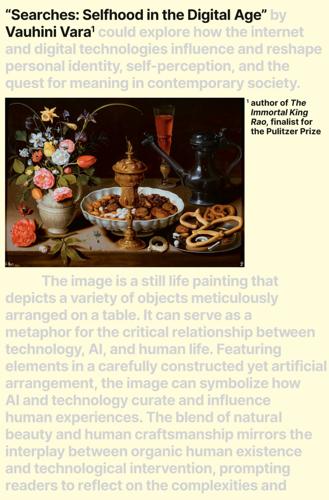
Searches: Selfhood in the Digital Age
by
Vauhini Vara
Published 8 Apr 2025
Facebook, Family, Fashion, Fashion accessories, Fiction literature, Fields of study, Fighting games, Financial news, Financial services, Fitness, Folk & acoustic, Folklore, Food, Food experience, France politics, Freelance Writing, Fruits. Gaming, Gaming content creators, Geography, Geology, George Floyd, Glenn Greenwald, Global Economy, Goa, Going Out, Good Morning America, Google, Google Innovation, Google brand conversation, Government, Government institutions, Grammy Awards, Green solutions, Gymnastics. Handbags, Hari Kunzru, Health news and general info, Hillary Clinton, Hip hop, Historical fiction, History, Homeschooling, Horror books, Hunter Biden, Hyderabad.

The Day the World Stops Shopping
by
J. B. MacKinnon
Published 14 May 2021
It is the nature of intrinsic values, after all, to be felt inwardly and expressed privately rather than put in the klieg lights for others’ applause. Instead of waning, the shift may have been deepening. In late May 2020, with the first wave of the coronavirus raging around the world, a police officer in Minneapolis knelt on George Floyd’s neck until he died, with video cameras rolling. The Black Lives Matter movement soon erupted into a national, and then international, reckoning on racial injustice. It was an unlikely turn of events. The middle of a global pandemic was not a natural moment for millions of protesters to take to the streets.

System Error: Where Big Tech Went Wrong and How We Can Reboot
by
Rob Reich
,
Mehran Sahami
and
Jeremy M. Weinstein
Published 6 Sep 2021
It’s an important question to ask, especially at a time when democracy, this celebrated Athenian invention, seems to be in retreat. The shelves in any bookstore chart our collective angst, with titles such as How Democracies Die, How Democracy Ends, Surviving Autocracy, and On Tyranny outselling their competitors. The social mobilization that followed the 2020 murder of George Floyd and many other Black Americans at the hands of the police surfaced longstanding concerns about whether communities of color can expect equal treatment under the law. The disastrous responses of some governments to the COVID-19 pandemic also appear inseparable from failures of democratic institutions, with the United States, Brazil, and India leading the world in deaths from COVID-19 and the European democracies not faring especially well, either.

Head, Hand, Heart: Why Intelligence Is Over-Rewarded, Manual Workers Matter, and Caregivers Deserve More Respect
by
David Goodhart
Published 7 Sep 2020
Indeed, so successful have they been that they have truly established themselves as utilities comparable to water and electricity and they will thus surely come to be subject to some of the same degree of regulation as the traditional utilities. But that is another story. In the meantime, I think there are some grounds for optimism emerging from the crisis. In our open, fractious societies, divisions and disagreements have noisily continued—not least in the reaction to the killing of George Floyd in Minneapolis—yet below the surface, there has also been a greater sense of common destiny than usual, in Europe if not the United States. Arguments between liberals and conservatives, and left and right, will continue, as they should, yet I think there is a decent chance that one legacy of the crisis will be to acknowledge a wider range of human aptitudes in our allocation of reward and prestige—and thus a better balance between Head, Hand, and Heart.

Men Who Hate Women: From Incels to Pickup Artists, the Truth About Extreme Misogyny and How It Affects Us All
by
Laura Bates
Published 2 Sep 2020
Instead, he faced federal hate-crime charges.17 After FBI agents found bomb-making materials at Cole Carini’s home, as well as the note referring to the ‘heroic’ massacre of ‘hot cheerleaders’, he was only charged, at the time of writing, with the crime of lying to FBI agents.18 A 2019 analysis of US federal prosecutions since 9/11 concluded that ‘the Justice Department has routinely declined to bring terrorism charges against right-wing extremists, even when their alleged crimes meet the legal definition of domestic terrorism: ideologically motivated acts that are harmful to human life and intended to intimidate civilians, influence policy, or change government conduct’.19 Critics have pointed out that this glaring omission results from a lack of any US law covering domestic terrorism. But it is not only legal hurdles that impact our public idea of who does and doesn’t qualify as a terrorist. In 2020, for example, Donald Trump, on a telephone call with state governors, described those involved in the Black Lives Matter protests that swept America in the wake of George Floyd’s death as ‘terrorists’.20 Media coverage of mass violence is similarly problematic. After Brenton Tarrant carried out the Christchurch shootings, the Daily Mirror’s front page featured a photograph of him as a rosy-cheeked pre-schooler, with the headline ‘Angelic boy who grew into an evil far-right man killer’, followed by an article describing him as a ‘likeable and dedicated personal trainer, running free athletic programmes for kids’.21 The piece also reproduced portions of Tarrant’s manifesto, including his own description of himself: ‘I am just a regular white man, from a regular family.

Binge Times: Inside Hollywood's Furious Billion-Dollar Battle to Take Down Netflix
by
Dade Hayes
and
Dawn Chmielewski
Published 18 Apr 2022
Another believed the general-entertainment approach of packing fifteen thousand hours in led to an unfocused offering. “If we were guilty of one thing, it’s that we just threw too much stuff at the wall programming-wise to see what stuck,” the person said. Some of the “classics” hadn’t aged particularly well. Gone with the Wind got entangled in the racial equity movement sparked by George Floyd’s murder by a Minneapolis police officer. Filmmaker John Ridley penned an op-ed in the Los Angeles Times calling on HBO Max to hit pause on the film, which romanticizes the Confederacy. “It is a film that glorifies the antebellum south,” he wrote. “It is a film that, when it is not ignoring the horrors of slavery, pauses only to perpetuate some of the most painful stereotypes of people of color.”
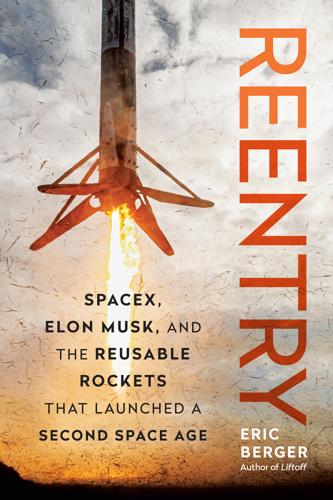
Reentry: SpaceX, Elon Musk, and the Reusable Rockets That Launched a Second Space Age
by
Eric Berger
Published 23 Sep 2024
They were her friends, and no way was she going to sleep during the most dynamic part of the mission. Coming into the Hawthorne factory on launch day felt strange. The city streets surrounding SpaceX were eerie, and the mood tense. Protests in Los Angeles over the murder of an African American man, George Floyd, were reaching their peak. Crabtree and the other employees weren’t sure whether the roads would be closed in Hawthorne when they tried to go home after the launch. The background of the COVID-19 pandemic further amplified the unease. SpaceX had an exemption to keep operating with on-site employees, but limits were placed on gatherings.
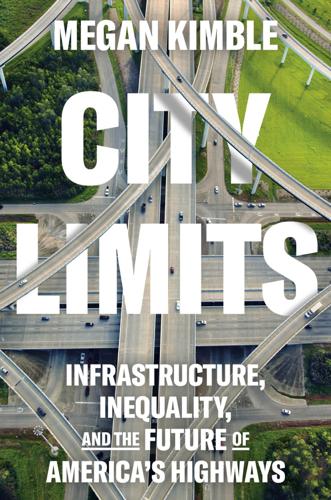
City Limits: Infrastructure, Inequality, and the Future of America's Highways
by
Megan Kimble
Published 2 Apr 2024
On the other side of the highway, the Austin Police Department’s headquarters towered over Eighth Street, the backdrop to the Black Lives Matter protests that had erupted in June, when thousands of people climbed onto I-35 and stopped traffic on the interstate that would eventually pass through Minneapolis, blocks from where the Houstonian George Floyd was killed by police. He felt the full force of the highway’s effects on Austin. It was crushing. But he could also imagine it gone. “I was able to look at I-35 and see it as a decision that was made and not this thing that’s always been there and is inevitable,” Adam says. He went home and started a campaign called Rethink35, which called on TxDOT to remove I-35 altogether.

Buy Now, Pay Later: The Extraordinary Story of Afterpay
by
Jonathan Shapiro
and
James Eyers
Published 2 Aug 2021
Nick and Gabi Molnar were expecting their second child in August, so they had returned from the United States, which was being ravaged by the virus, to be closer to family. This made it tougher for Nick to manage Afterpay’s US staff, who were becoming restless as COVID-19 spread like wildfire. Then the country erupted after the killing by police of George Floyd, which had triggered massive Black Lives Matter protests. In mid-June, Molnar, Eisen and the Afterpay board dialled in to a briefing, where staff in San Francisco demanded that Afterpay support the movement by ensuring its US workforce become more diverse. ‘The US is obviously going through a difficult time at the moment,’ Molnar said.
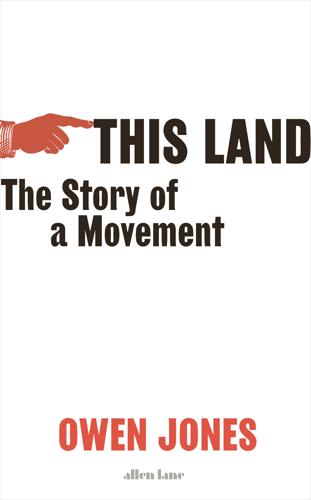
This Land: The Struggle for the Left
by
Owen Jones
Published 23 Sep 2020
Whether Starmer’s leadership sticks to those commitments remains an open question. Those who decide to stay members of the Labour Party should certainly fight to ensure that they do. But the struggle for change does not simply take place within the confines of political parties. Following the police killing of George Floyd in the United States at the end of May 2020, global Black Lives Matter protests against systemic racism exploded. Extra-parliamentary struggles – mass movements in the streets that are impossible for the powerful to ignore – must surely take centre stage, whether the cause be workers’ rights, the climate emergency, public investment, the welfare state or peace.
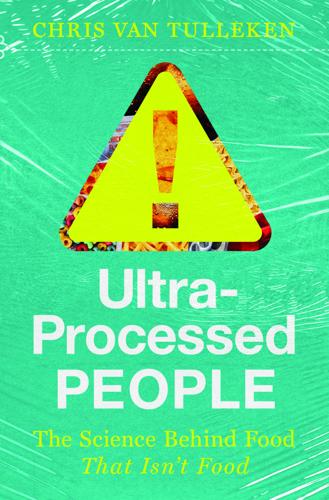
Ultra-Processed People: The Science Behind Food That Isn't Food
by
Chris van Tulleken
Published 26 Jun 2023
Whatever it does or doesn’t do to the body, we’ve never encountered it previously, and evolution has had no time to accommodate it. More troubling to me than the dimethylpolysiloxane were the graphics on the packaging, which as a teenager I’d never thought about. I was eating KFC a few months after the murder of George Floyd by a Minneapolis police officer, Derek Chauvin. The US and British history of enslavement was being discussed everywhere, and someone who looked like a Confederate colonel appeared to be on my chicken box.10-12 I remembered a piece in the Guardian that had just reinvigorated the conversation about race and fried chicken in the UK: ‘I’ve always loved fried chicken.
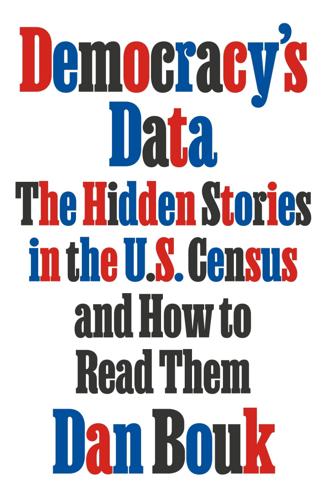
Democracy's Data: The Hidden Stories in the U.S. Census and How to Read Them
by
Dan Bouk
Published 22 Aug 2022
We will march forth in the mass of data, important because we are part of a group. This is, in part, what participating in democracy looks like. Over the summer of 2020, my child and I stood in a socially distanced crowd gathering at 168th Street and Broadway in Northern Manhattan—farther north than you probably thought Manhattan went. George Floyd had been murdered. So had Breonna Taylor. We met to march and say their names. We marched with people who marched for many reasons, some to call for justice to be served in holding accountable the police responsible for these murders, some to affirm that Black lives did indeed matter, some to demand the repeal of laws that protect police from prosecution and to demand a sharp decrease in New York City’s budget for policing, and some to seek the total abolition of policing in order to cultivate more just, less racist, and actually equitable means of ensuring the safety of our communities.

Billionaires' Row: Tycoons, High Rollers, and the Epic Race to Build the World's Most Exclusive Skyscrapers
by
Katherine Clarke
Published 13 Jun 2023
The developer Ian Bruce Eichner, interviewed in The Wall Street Journal that spring, would say that developers who had already been “catching a falling knife” were now “catching a falling sword.” That summer, the stakes only got higher, as thousands of people took to the streets across the country to protest the murder by police of George Floyd, a Black man in Minneapolis. In New York, mass protests in Brooklyn and Lower Manhattan led to clashes with police. Fringe groups turned to vandalism, setting fires and shattering the windows of stores in SoHo and the Flatiron District and looting and ransacking inside. On May 31, the worst night of rioting, more than four hundred people were arrested overnight in New York.

Imaginable: How to See the Future Coming and Feel Ready for Anything―Even Things That Seem Impossible Today
by
Jane McGonigal
Published 22 Mar 2022
We will have to weigh the potential benefits of creating widespread access to this new form of visual power against the potential harms of a creeping encroachment of drones into our everyday, private lives. I found myself holding this tension in my mind on April 20, 2021, the day that Minnesota police officer Derek Chauvin was found guilty of the murder of an unarmed Black man, George Floyd. This crime, which catalyzed a year of global protests as part of the growing Black Lives Matter movement, was documented on video by then seventeen-year-old Darnella Frazier. Her courage to press record and bear witness changed history, leading to the first moment of meaningful accountability for systemic racist violence in US law enforcement.
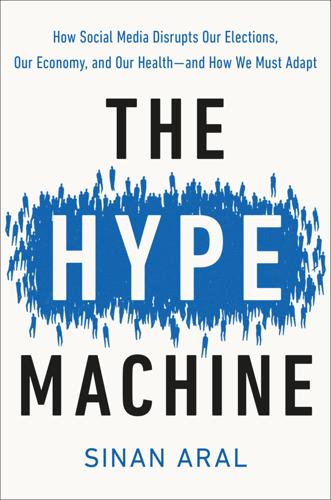
The Hype Machine: How Social Media Disrupts Our Elections, Our Economy, and Our Health--And How We Must Adapt
by
Sinan Aral
Published 14 Sep 2020
They care about the future of our planet. They’re wicked smart, and they’re committed to making the world a better place. But social media’s impact on the world is not determined by intention alone. As we all know, there have been many missteps in building the Hype Machine. Following the death of George Floyd, Mark Zuckerberg defended his decision to allow unaltered and unlabeled, divisive and inflammatory Facebook messages by President Trump that seemed to threaten violence in response to the protests and including the words “when the looting starts the shooting starts,” a phrase used by police chiefs and segregationist politicians during crackdowns against the civil rights movement.
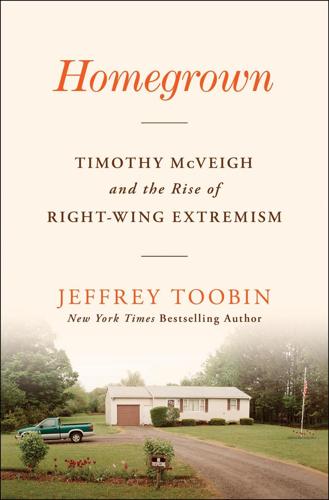
Homegrown: Timothy McVeigh and the Rise of Right-Wing Extremism
by
Jeffrey Toobin
Published 1 May 2023
As president, Trump never explicitly endorsed the extremist presence among his political supporters, but he knew how to speak to McVeigh’s successors in barely coded terms. Trump’s racism and endorsements of violence always had a measure of deniability. He told a nearly all-white crowd in Minnesota, “You have good genes in Minnesota.” In response to the protests that followed the murder of George Floyd, he tweeted, “When the looting starts, the shooting starts.” Asked at a presidential debate about his supporters among violent right-wing extremists, Trump turned the question around and endorsed the Proud Boys—who would become notorious instigators of the January 6 insurrection—and raised antifa as a diversion: “Almost everything I see is from the left wing, not from the right wing,” he said.
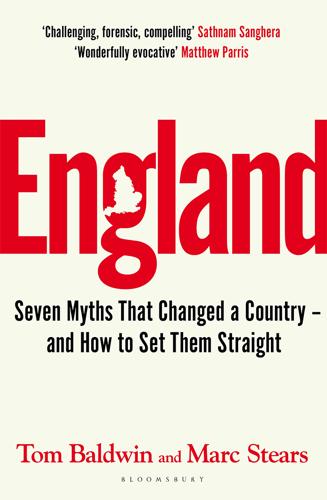
England: Seven Myths That Changed a Country – and How to Set Them Straight
by
Tom Baldwin
and
Marc Stears
Published 24 Apr 2024
Johnson ended his speech by misquoting Alfred, Lord Tennyson, the laureate of the Victorian Imperial age, as he declared: ‘There lies the port, the vessel puffs her sail … the wind sits in the mast.’7 These twenty-first-century Brexiteers were not, however, the only people fixated about what the English did at sea long ago. In 2020, after the murder of George Floyd by police in the United States, Black Lives Matter protests erupted around the world. A hundred miles to the north of Plymouth, a crowd in Bristol pulled to the ground a statue of Edward Colston, whose eighteenth-century philanthropy meant he had been celebrated with schools, a concert hall and even special buns named after him.
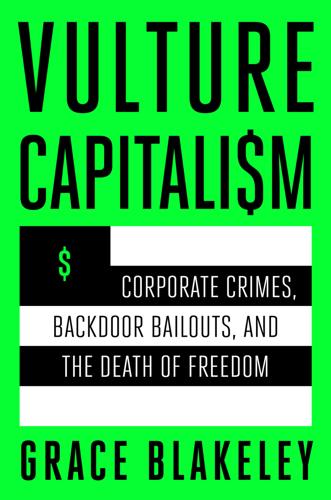
Vulture Capitalism: Corporate Crimes, Backdoor Bailouts, and the Death of Freedom
by
Grace Blakeley
Published 11 Mar 2024
Mubenga was on a plane being forcibly returned to Angola in an outsourced deportation process managed by G4S in 2006 when three security guards restrained him, holding his head down while cuffing his hands behind his back. This is a technique known in the security world as “carpet karaoke” due to the well-known risks of asphyxiation.142 In a chilling precursor to the murder of George Floyd in the US several years later, fellow passengers heard Mubenga cry out, “I can’t breathe!” and “They’re killing me!”143 Mubenga eventually lost consciousness and was pronounced dead at the scene by paramedics.144 The guards were arrested, before being released on bail. G4S was concerned that it could face charges of corporate manslaughter.
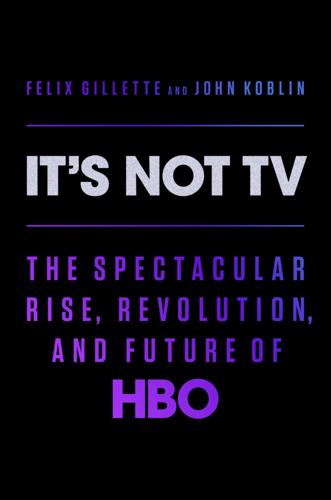
It's Not TV: The Spectacular Rise, Revolution, and Future of HBO
by
Felix Gillette
and
John Koblin
Published 1 Nov 2022
I May Destroy You landed in a world awash in grief. In the summer of 2020, countless families were mourning the loss of loved ones to COVID-19 and struggling with the continuing uncertainty of the pandemic. At the same time, protests were proliferating across the United States, venting anger, frustration, and sorrow over the murder of George Floyd, an unarmed forty-six-year-old Black man killed by police officers in Minneapolis. Amid the pain and reckoning, I May Destroy You resonated widely. Its central preoccupations felt in sync with the state of the world: How does an individual, or a society, manage to come back from a deeply wounding trauma?

Evil Geniuses: The Unmaking of America: A Recent History
by
Kurt Andersen
Published 14 Sep 2020
Where we wind up, good or bad, is the result of choices we make over time—choices made deliberatively and more or less democratically, choices made by whoever cares more or wields more power at the time, choices made accidentally, choices ignored or otherwise left unmade. Even before the pandemic and its economic consequences, and before the protests and chaos following the murder of George Floyd, we were facing a do-or-die national test comparable to the big ones we passed in each of the three previous centuries—in the 1930s, the 1850s and ’60s, and the 1770s and ’80s. Forgive the Hero’s Journey talk, but this is America’s Fourth Testing. We can continue down our recent paths.

Your Computer Is on Fire
by
Thomas S. Mullaney
,
Benjamin Peters
,
Mar Hicks
and
Kavita Philip
Published 9 Mar 2021
By understanding what has come before, we gain the knowledge we need to go forward. Notes 1. Davey Alba, Kate Conger, and Raymond Zhong, “Twitter Adds Warnings to Trump and White House Tweets,” New York Times (May 29, 2020), https://www.nytimes.com/2020/05/29/technology/trump-twitter-minneapolis-george-floyd.html. 2. Kate Losse, “The Male Gazed,” Model View Culture (January 2014), https://modelviewculture.com/pieces/the-male-gazed. 3. See, for instance, the way that Black women understood and warned about the dynamics of online trolling and abuse far sooner than white women, yet got far less credit for sounding the alarm.
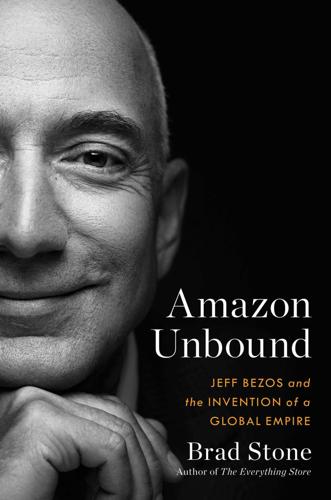
Amazon Unbound: Jeff Bezos and the Invention of a Global Empire
by
Brad Stone
Published 10 May 2021
“Make him the most interesting part of the story, and if possible, make him the face of the entire union/organizing movement.” Zapolsky, who said he didn’t know Smalls’s race at the time, later went to considerable lengths to apologize publicly for the remark, including sending out an email to his staff expressing support for the Black Lives Matter movement that gained momentum from the murder of George Floyd that May. “I should never have let my emotions get to me,” he told me. “I shouldn’t have used that characterization for any Amazon employee. It was incredibly regrettable.” But the company’s opposition to anything that even whiffed of union organizing was now cast starkly into the open, in cynical and arguably prejudicial terms.

Blood in the Machine: The Origins of the Rebellion Against Big Tech
by
Brian Merchant
Published 25 Sep 2023
As San Francisco was gentrified by tech companies, displaced renters and residents facing eviction blocked the route of the notorious Google Buses, forming ad hoc protests and hurling rocks at the vehicles. We’ve seen how drivers in France reacted when Uber entered its market—with riots and the proverbial hammer of Enoch. And the new Luddites point to the targeted vandalism at the George Floyd protests in the summer of 2020 as examples of strategic retribution for economic grievances. Meanwhile, governments have exacerbated matters by implementing punitive policies that restrict workers’ rights. In the Luddites’ day, Parliament instituted a bloodier and harsher set of laws, to be sure, but a similar logic, as far as who gets protected and who gets punished, drives the American economy today.
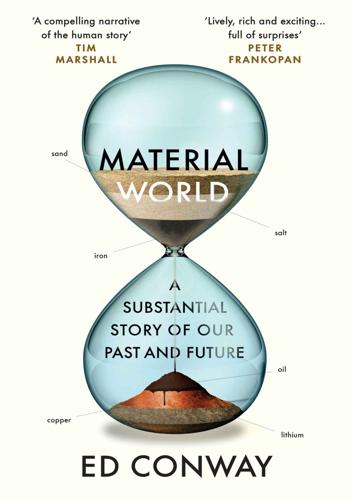
Material World: A Substantial Story of Our Past and Future
by
Ed Conway
Published 15 Jun 2023
But he still casts a long shadow over Belgium, which seems frozen in the headlights of history, unsure or unable to deal with the legacy of its brutal colonial baggage. Every so often the statue is defaced, then the graffiti painstakingly removed, and an earnest conversation follows about what to do next. After the death of George Floyd in 2020, this statue – and a number of other statues of Leopold II – were graffitied. His hands were painted blood red. ‘THIS MAN KILLED 15M PEOPLE’, read the words sprayed on the plinth. The paint was cleaned away and a report was published a couple of years later raising the prospect of melting down the statue and re-forming the bronze into something commemorating the people of Congo but, at the time of writing at least, Leopold is still up on his saddle, looking as disapproving and unrepentant as ever.

The Quiet Coup: Neoliberalism and the Looting of America
by
Mehrsa Baradaran
Published 7 May 2024
But the culprits are right there in plain sight: they are the laws, loopholes, and procedures that have hollowed out our judicial system from the inside, quietly draining the legitimacy from our institutions, the meaning from our rights, and the invisible yet essential substance underlying it all: our trust in our government and the confidence that “we the people’’ can choose our laws, how to use our money, and the shape of our economy. IN MAY 2020, as worldwide anger and protest followed the murder of George Floyd, the satirical website The Onion published a piece with the headline “Protestors Criticized for Looting Businesses Without Forming Private Equity Firm First.”16 The quip resonated because financial firms have indeed caused much more harm to Americans’ lives—from lost jobs and foreclosed homes to high-cost debt and the privatization of everything from hospitals to prisons—than have sporadic incidents of theft.
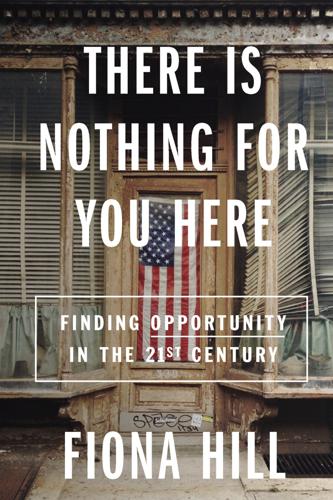
There Is Nothing for You Here: Finding Opportunity in the Twenty-First Century
by
Fiona Hill
Published 4 Oct 2021
Political divisions became chasms over even the most basic medical advice, such as wearing masks and maintaining physical distance to slow the spread of the disease. Even the development of vaccines, such as Russia’s Sputnik V, became an opportunity to play great power geopolitics rather than just focusing on getting people vaccinated. Fast on the heels of the pandemic in the United States came the May 25, 2020, murder of George Floyd in Minneapolis. Floyd’s death, his neck pressed beneath the knee of a police officer during a heavy-handed arrest, sparked nationwide protests against police brutality and highlighted the continued persecution of Black Americans decades after the civil rights movement. The United Kingdom was also swept up in the Black Lives Matter protests, as a younger generation of Brits contemplated the integral role the UK had played in the Atlantic slave trade and its own history of racism and heavy-handed policing.
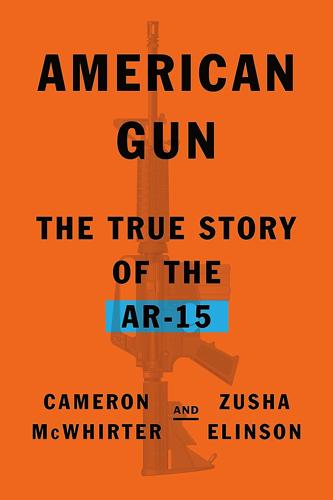
American Gun: The True Story of the AR-15
by
Cameron McWhirter
and
Zusha Elinson
Published 25 Sep 2023
COME AND TAKE IT NATION I’m going to war. I’m bringing the big cock. —Oath Keeper about bringing his AR-15 to Washington, DC, for January 6 Demonstrators, young and old, Black and white, walked through a wealthy St. Louis neighborhood on their way to the mayor’s house, drumming, singing, and chanting. The murder of George Floyd by a Minneapolis police officer had sparked a nationwide protest movement in the summer of 2020. When the demonstrators veered onto a private street of large, expensive homes, a doughy sixty-three-year-old man wearing a pink Brooks Brothers polo shirt and khakis emerged from his mansion built to look like an Italian palazzo.

What If We Get It Right?: Visions of Climate Futures
by
Ayana Elizabeth Johnson
Published 17 Sep 2024
News outlets need to have their reporters’ backs and stop watering down stories. Ayana: How do you think newsrooms should be approaching the coverage of climate activism and the climate movement? Kendra: I’m going to back into this question. I did a story in 2020, during the height of the George Floyd protests, because I was watching the actual protests on the internet and then I was reading the coverage of those protests, and there was a massive disconnect between the two. In the videos that I was watching, it was clear in many, many cases that it was law enforcement that was the aggressor.

Equality
by
Darrin M. McMahon
Published 14 Nov 2023
Joseph, among America’s leading scholars of Black history in the twentieth century and an insightful commentator on contemporary race relations, argues that the country’s recent racial strife is an opportunity. “A nightmare,” he points out, “is still a dream,” and the dream is that the upheavals unleashed in the wake of the Obama presidency—the election of Donald Trump, the resurgence of white supremacy, and the BLM activism following the murder of George Floyd—offer the prospect of a “Third Reconstruction,” a program of reconciliation, redemption, and reparation in the service of racial justice. Just as the First Reconstruction following the Civil War made efforts, however fleeting and incomplete, to integrate the formerly enslaved into the nation as citizens; and the Second Reconstruction, spanning the civil rights movement of the 1950s and 1960s, energized that effort again; the Third Reconstruction offers an “opportunity to reimagine [America’s] past, present, and future.”

The Long Game: China's Grand Strategy to Displace American Order
by
Rush Doshi
Published 24 Jun 2021
American openness attracts the allies that sustain the global liberal order, the immigrants who fuel American growth, and the capital that sustains dollar dominance. US soft power flows from the country’s open society and civic creed, not from the state. The protests that followed the killing of George Floyd, which China saw incorrectly as a sign of decline, instead reflected a public struggle to realize the founding values of the United States—values whose appeal was so universal that the struggle for them captivated global audiences and inspired marches abroad. The United States attracts more criticism than other great powers “precisely because it holds itself to a higher standard,” argues the South Africa–based journalist Dele Olojode.

This Is How They Tell Me the World Ends: The Cyberweapons Arms Race
by
Nicole Perlroth
Published 9 Feb 2021
Even countries with no discernible hacking capabilities to speak of are showing new potential. In Nigeria, former scammers have turned to hacking to convince those sheltered-at-home to click on their Covid-themed emails and grant them access to their computers. Hacktivists are having their say too. In retaliation for the murder of George Floyd at the hands of the Minneapolis police, hackers affiliated with Anonymous—a loose hacking collective that had been dormant for the better part of a decade—hacked more than two hundred police departments and FBI stations across the country in support of Black Lives Matter protesters, dumping ten years’ worth of law enforcement data online—the largest published hack of American law enforcement agencies.

Empire of AI: Dreams and Nightmares in Sam Altman's OpenAI
by
Karen Hao
Published 19 May 2025
Around the same time, new concerns emerged from a third group of employees worried about the impact that spectacular text-generation abilities could have in the midst of major political, social, and economic upheaval in the US. By May 2020, the pandemic had already created a faster rise in unemployment than during the Great Recession. In the same month, Derek Chauvin, a police officer in Minneapolis, murdered George Floyd, a forty-six-year-old Black man, setting off massive Black Lives Matter protests around the country and the rest of the world. The team was also concerned about the impending US presidential election. But rumors began to spread within OpenAI that Google could soon release its own large language model.

Four Battlegrounds
by
Paul Scharre
Published 18 Jan 2023
Social media has been incredibly democratizing—not in the sense that it has necessarily been good for democracy, but that it has allowed a wide swath of the population to create and share information. The traditional gatekeepers of what constitutes a shared social reality—television news anchors and newspaper editors—have been eclipsed by a new world in which everyone has a megaphone. When seventeen-year-old Darnella Frazier filmed Minneapolis police murdering George Floyd, she posted the video to Facebook, sharing the truth of the event and sparking a nationwide movement. Social media has enabled the rise of both transformative decentralized social movements, like #BlackLivesMatter, and dangerous conspiracy theories like QAnon. Despite their democratizing ability to empower individuals, the largest social media platforms are controlled by a handful of companies.

Palo Alto: A History of California, Capitalism, and the World
by
Malcolm Harris
Published 14 Feb 2023
To my academic friends, who are willing to overlook my missing credentials: Tim, Branden, Charles, Shalini, Zach, and Madeline. To the Philly Childcare Collective and the rest of the InterGalactic Conspiracy of ChildCare Collectives. To the farms and farmworkers who kept me fed while I wrote: Fruitwood, Spring Hollow, Small Potato, as well as Bonnie and the rest of the Vanilya bagel crew. To the George Floyd Uprising, the defining event of the period of this writing. To the Muwékma, to whom Palo Alto will be returned. To the planet Earth, its people, and its preservation by any means necessary. Jean Garnett Editor Gregg Kulick Designer Elisa Rivlin Legal Counsel Mary Tondorf-Dick Managing Editor Ben Allen Production Editor Barbara Clark Copyeditor Erin Cain Production Coordinator Alyssa Persons Publicist Gabrielle Leporati Associate Publicist Ayesha Chari Publicity Intern Bryan Christian Marketing Director Brandon Kelley Marketing Operations Lauren Hesse Social Media Director Khadijah Mitchell Assistant Editor Liv Ryan Editorial Assistant Ghenet Harvey Audio Production Manager Thomas Mis Audio Producer Bruce Nichols Publisher Craig Young Deputy Publisher Discover Your Next Great Read Get sneak peeks, book recommendations, and news about your favorite authors.